Mini-Grants for Outdoor Learning
2022-2023
Over the course of the 2022-2023 school year, MEEA received $153K from donors to distribute to over 100 schools in all 16 counties to advance outdoor learning efforts.

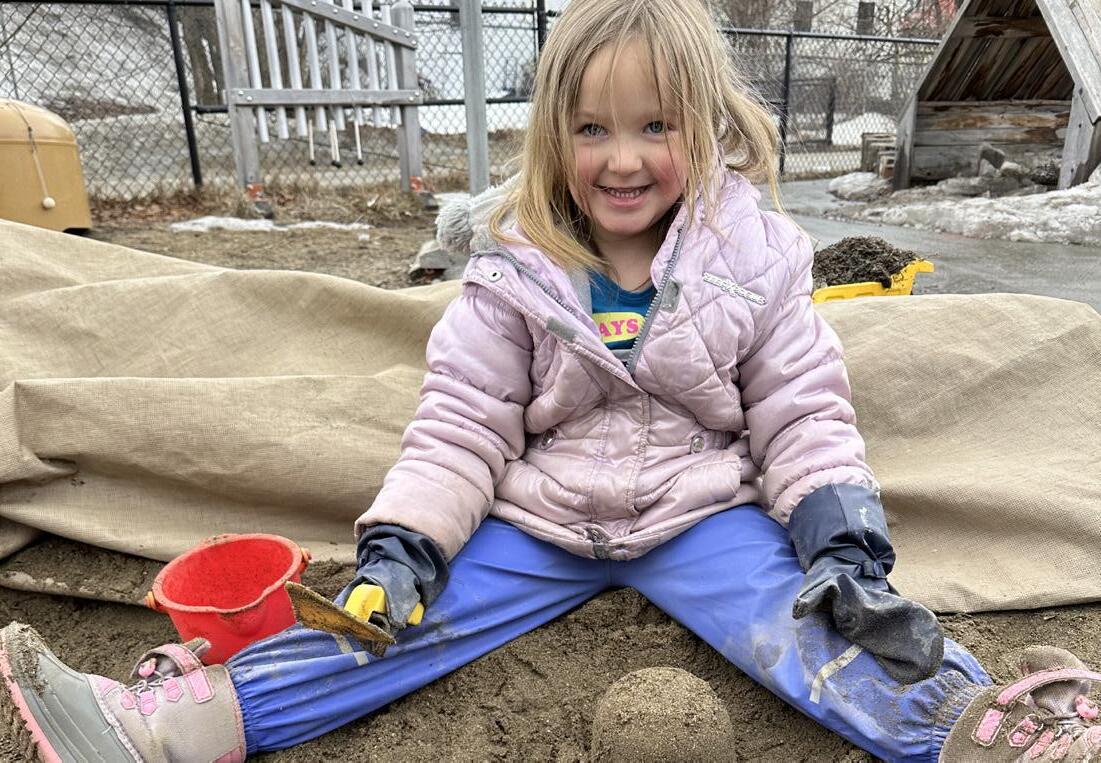
By funding teachers invested in outdoor learning across the state, we’ve reached over 70,000 students in the past three years. Some of the outdoor learning projects this year include planting raised beds, collecting outdoor samples and observing specimen, building outdoor learning spaces, and purchasing foul-weather gear.
In this report, we share snapshots of the 105 mini-grant funded projects across schools in Maine.
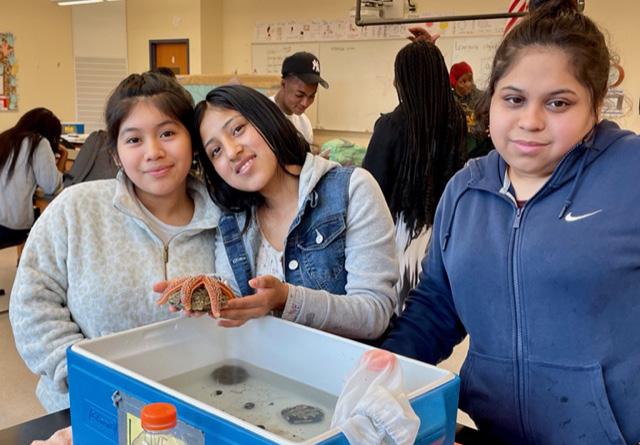
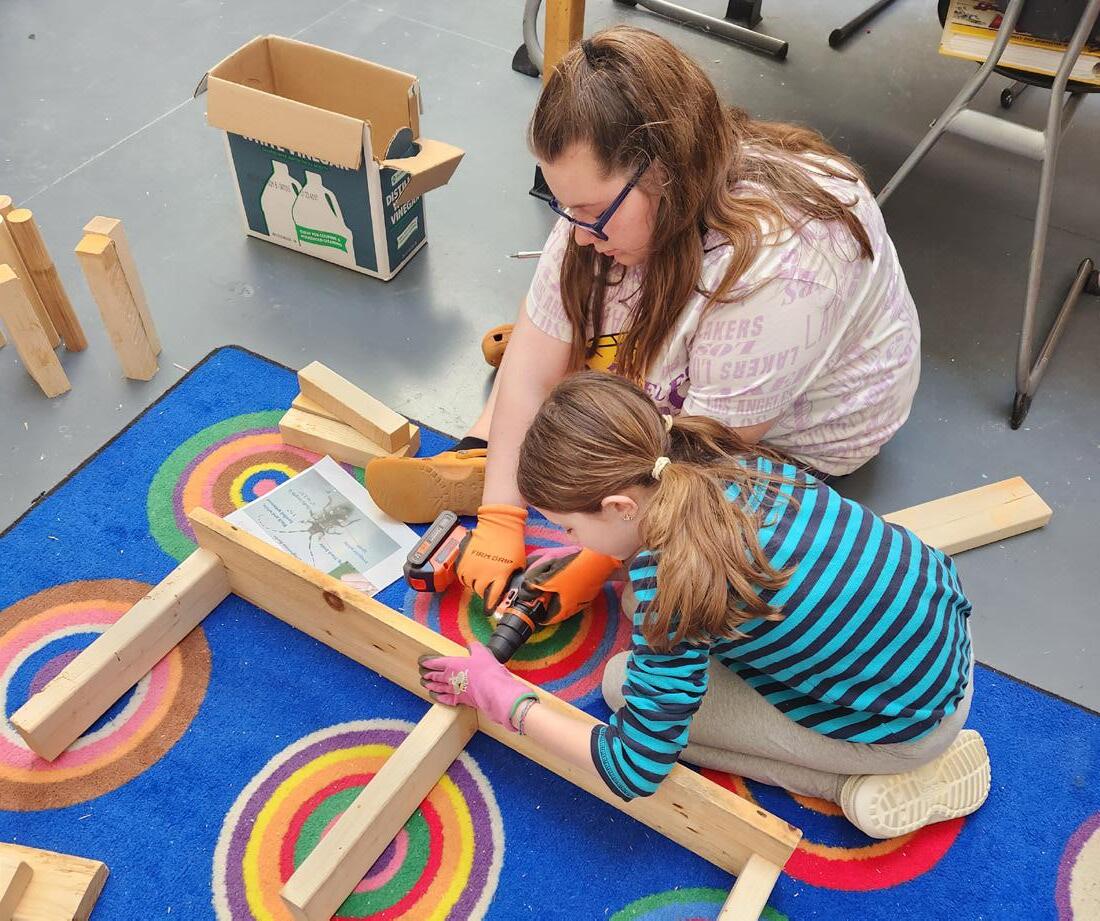 Clockwise from top left: W.G. Mallett School, Mountain Valley High School, Portland Public Schools, South Portland High School
Clockwise from top left: W.G. Mallett School, Mountain Valley High School, Portland Public Schools, South Portland High School
This report is organized by the category of grantee’s project. If a project fits under multiple categories, the primary category was selected.
Contents ADAPTIVE GEAR.................................................................PAGE 3 ART OUTDOORS.................................................................PAGE 4 CURRICULUM & PROFESSIONAL DEVELOPMENT..................PAGE 6 FIELD TRIP.........................................................................PAGE 8 FOUL-WEATHER GEAR ......................................................PAGE 12 GARDEN & GREENHOUSE..................................................PAGE 16 OUTDOOR CLASSROOM SOLUTIONS.................................PAGE 26 OUTDOOR RECREATION...................................................PAGE 36 SCIENCE EXPLORATION...................................................PAGE 48 SNOWSHOES....................................................................PAGE 57
All photos may be used in media, please contact grants@meeassociation.org for more information.
Adaptive Gear
CHELSEA ELEMENTARY SCHOOL
Rosanna Gargiulo
Students in our Life Skills classroom worked together to build our wheelchair accessible elevated garden beds. They were skeptical at first about their ability to complete the project, because for most of them it was their first time using power tools. They learned about tool safety and soon became friends with “Mr. Drill” as one of our students put it. They developed a twotier design so they could grow plants that require more depth for roots as well as plants with shallower root systems: a true innovation. They did such an incredible job building the elevated beds that when we displayed their work during our Plant and Seedling Sale and end-of-year Celebration of Learning, many families and community members asked if the beds were for sale! “Team work makes the dream work,” as one student said, and that’s certainly true in our Life Skills classroom. We wrapped up the school year by planting the seedlings they had started in our elevated garden beds. They chose to plant tomatoes, peppers, marigolds, thyme, basil, lemon balm, and nasturtium. We’re all looking forward to our harvest at the end of the summer.

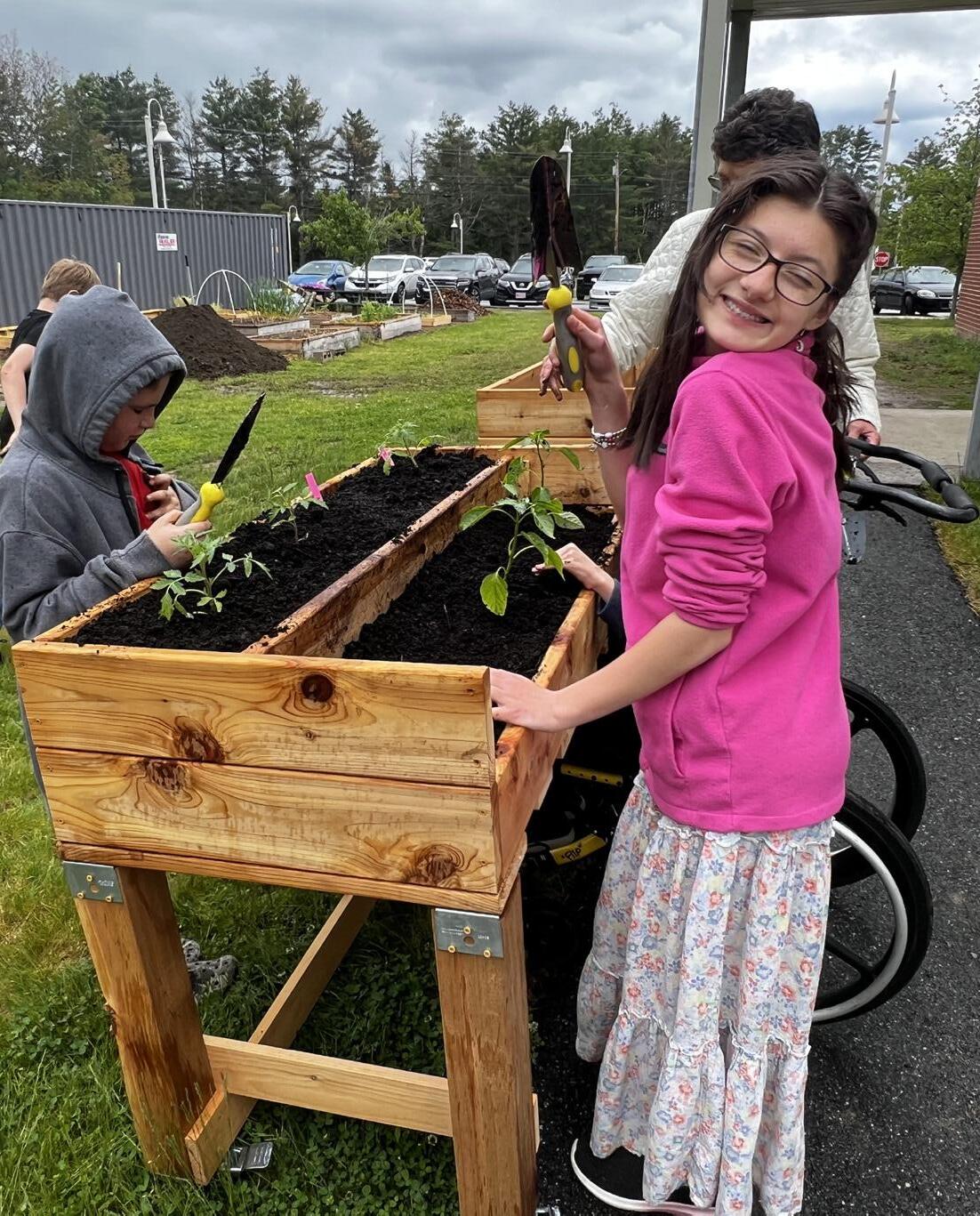

3
DEERING HIGH SCHOOL
Emily Serway
There is nothing like hands-on learning. Students gain so much by combining a research project about an important topic with a sculpture project to enhance their understanding. The handson piece galvanizes their learning and makes them personally invested in the topic.
This year, with the generous support of the MEEA, my ceramics students at Deering High School were able to research the Gulf of Maine and make a collaborative sculpture installation to highlight their work. Through their study, they learned about how the Gulf of Maine is warming faster than any other body of water on Earth. They learned about the effect this warming will have on creatures in our waters. They studied the impact this warming will have on fisheries and other aquatic industries in Maine. Students who did not know anything about this topic became experts. They care about the issue.
Focusing on one creature for their assignment, each student created an informative slide to talk about their creature or organism. They included important points about the organism and uploaded photos. Then, students sketched their creature. When it came time to create the work, the students sculpted their organism in clay.
The sculptures ranged from starfish and sea urchins to lobsters and seals. Some students made mussel shells, clam shells, and rocks with barnacles or periwinkles. There were a couple of students who attempted crabs and lobsters as well, which presented a unique challenge in terms of sculpting the details, such as the antennae and legs, which are prone to breakage. After the sculptures dried, I fired them and the students then tried to glaze them with some accuracy. This required more research and photographic references.
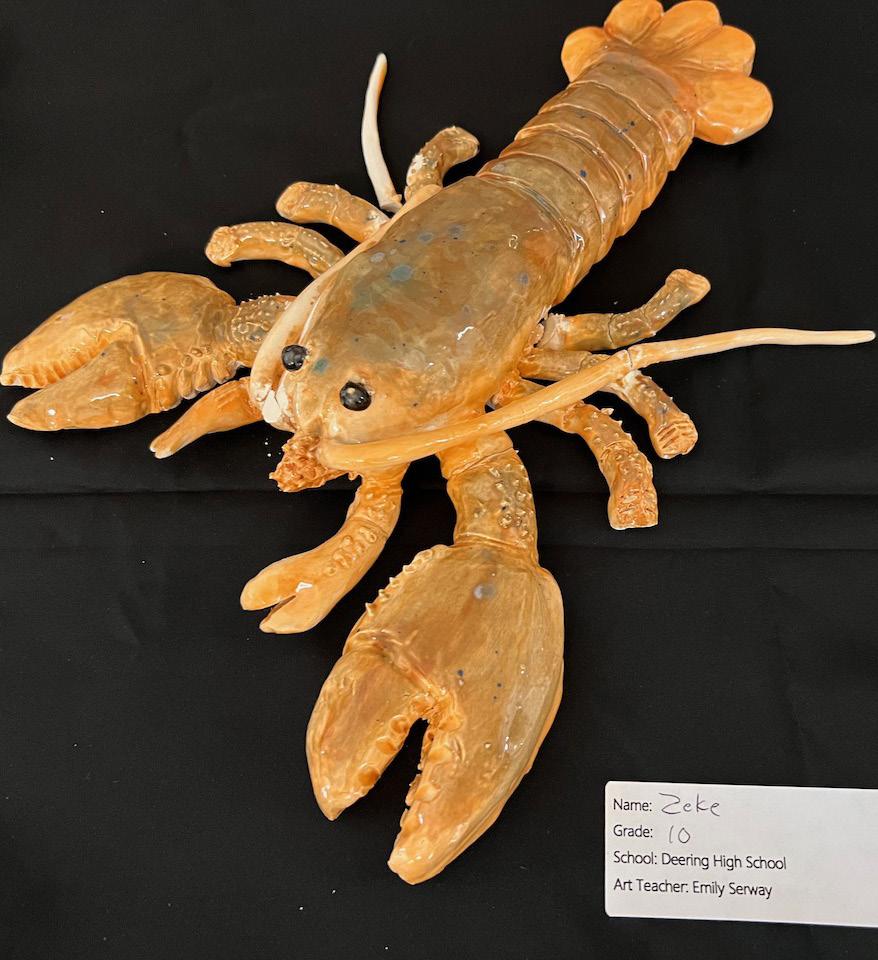
All in all, my students learned so much from this project. The hands-on component in clay was all it took for students to see this issue in a personal way. Every student understands the impact humans are having on our environment and the effect we are having on the creatures and plants who share our home. I hope to be able to bring our sculptures to more places in the coming days.

4 Maine Environmental Education Association Mini-Grants for Outdoor Learning
Art Outdoors
Art Outdoors
MARCIA BUKER ELEMENTARY SCHOOL OLD TOWN ELEMENTARY SCHOOL
We are so grateful to have been able to use every single dollar of our 2022/23 MEEA Mini Grant on the purchase of Soprano Pentatonic Free Chimes to enhance our outdoor learning spaces and playscape. The chimes, which were just delivered and are set to be installed as the 2023/24 school year begins, are the first outdoor musical instrument we have ever included in our outdoor space and show our students the many kinds of creative learning opportunities available outdoors. MBES Principal Mary Paine noted that, “It’s important that unstructured play areas offer a balanced choice of activities. Students who do not enjoy competitive sports or the traditional playground equipment may thrive among the instruments in our musical garden.”

MBES Title 1 teacher, Tina Wood, commenting on the studentcentered nature of this addition to our outdoor classroom, said, “The chimes were specifically requested from last year’s 1st grade field trip to Boothbay Botanical Gardens after a jam session with their outdoor instruments. Students will have free access during their recess to play individually and collaboratively with the chimes which will be located on our Sensory Walk.” The chimes will add an auditory element to the Sensory Walk leading to our outdoor classroom space adjacent to our playground and will be dedicated to our music teacher of 13 years Kathryn Rende, who is retiring this year after a 39 year career in music education. Ms. Rende shared that her excitement for this addition to our school comes from an understanding that, “To include music as part of our outdoor classroom/sensory walk/playground equipment is to include children who need to create, listen and enjoy music in a free play setting.” Many thanks to MEEA for their generous support!
Inspired by the giant trolls at the Coastal Maine Botanical Gardens, fifth grade students at Old Town Elementary School built larger than life sculptures of four Maine invasive insects. Students began in March researching facts about each insect, studying their anatomy, and drawing and sculpting the insects with clay. Work began in April to construct the sculptures using reclaimed wood donated from local sources. Students got to use power tools (drills and circular saws) and hand saws during construction, some students had never even touched a power tool or hand saw before.

When construction was complete, it was time to put the final touches on the insects. To color the insects, students used beeswax colored with mica powder, and created stain using steel wool and vinegar. Sticks collected from the forest floor were used for the legs and small granite stones were used for the white spots on the Asian longhorned beetle. The creative process was challenging at times and a lot of hard work, but students persevered and the end results are amazing. Reflecting on the completed project one student said, “I really loved how the project combined art and nature; my two favorite things! And using the wax paint was fabulous!”
Included with each sculpture is a metal sign with facts about each insect collected from student research earlier in the school year. These sculptures will be displayed in our school’s outdoor classroom and in the surrounding forest to be viewed by both students and community members. Old Town Elementary principal, Jeanna Tuell spoke about the impact of these sculptures, “Anytime students can experience art that impacts their community, it connects them to the world.” Thank you so much for the opportunity to carry out this project, it’s going to be a wonderful addition to our school.
5
Lisa Wells
Tiffany Palmer
Curriculum & Professional Development
MAINE ACADEMY OF NATURAL SCIENCES
PORTLAND PUBLIC SCHOOLS
Katie West Jeffry Chase
We have been able to continue our long- term commitment to developing and inspiring Maine students to become environmentally conscious citizens. The use of agriculture and forestry as a teaching tool has proven to be an effective platform for educating students and our community. Below are the highlights of our outdoor adventures which wouldn’t have been possible without the support of MEEA.
This year MeANS continued offering a year-long program for 7 selected students to learn the art of blacksmithing. We worked off site this year, as our makerspace/ blacksmith barn was being built. In October, we will be offering the blacksmithing program at our school, which will allow for a larger population of students to learn this trade.
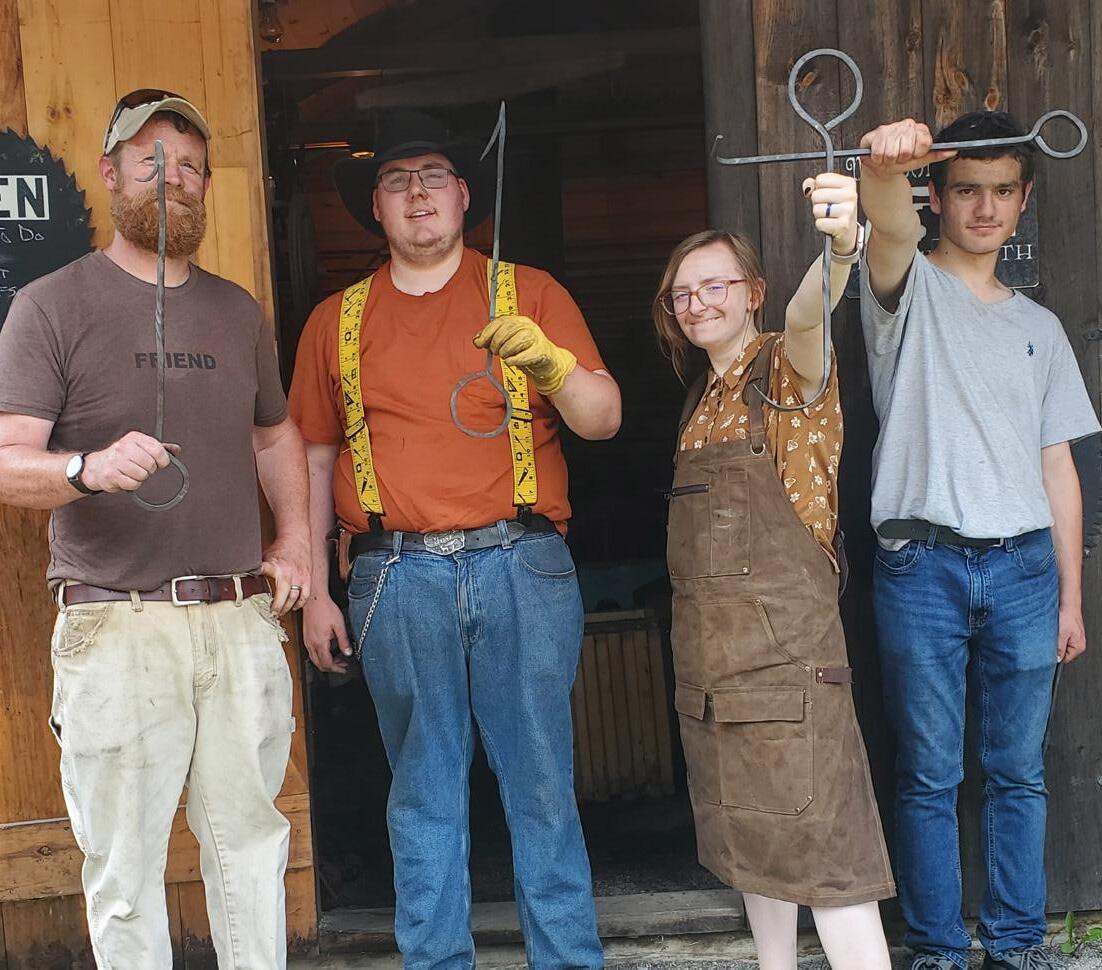
Joe Bowman, Class 2023: “Loved the program!! I learned a great deal, but what sticks out the most is learning the difference between coke and coal.”
This past weekend 4 students attended MOFGA’s Level 1 Chainsaw Course in Unity. This 2 day event focused on preparing children and adults to use a chainsaw safely and effectively. Students learned a great deal and spoke highly of this experience, at school this week.
Nick Hewitt, Class of 2025: “Thank you! This chainsaw class was a wonderful experience. I had lots of fun learning some techniques and safety precautions. I’m so glad I had the opportunity to learn using a chainsaw. This was awesome!”
As our work with Outdoor Learning and Environmental Literacy deepens in PPS through the integrated Wabanaki Studies and Life Science Units, it is essential we work to build our knowledge of the intersection of outdoor learning, trauma, and our students’ lived experiences. This mini-grant offered the opportunity to build our knowledge through professional development and purchase supplies which increased students’ connection to the local environment through trauma-informed outdoor place-based experiences. Elementary students all over PPS celebrated moments outside through the use of field guides, binoculars, and bird feeders in ways that were mindful of traumatic outdoor experiences.
Our aim is to provide scaleable activities which are interwoven with our standards-aligned and district-wide curriculum so students gain familiarity and connection with a new place. Through practices such as group sit spots, schoolyard habitat studies, or an indoor nature table, students can find comfort and joy in exploring a new environment while being well supported. Lastly, we were able to purchase supplies that were used in our District-wide Fieldwork experiences which provide equitable outdoor learning opportunities for all 3200 students in grades K-5.

6 Maine Environmental Education Association Mini-Grants for Outdoor Learning
Curriculum & Professional Development

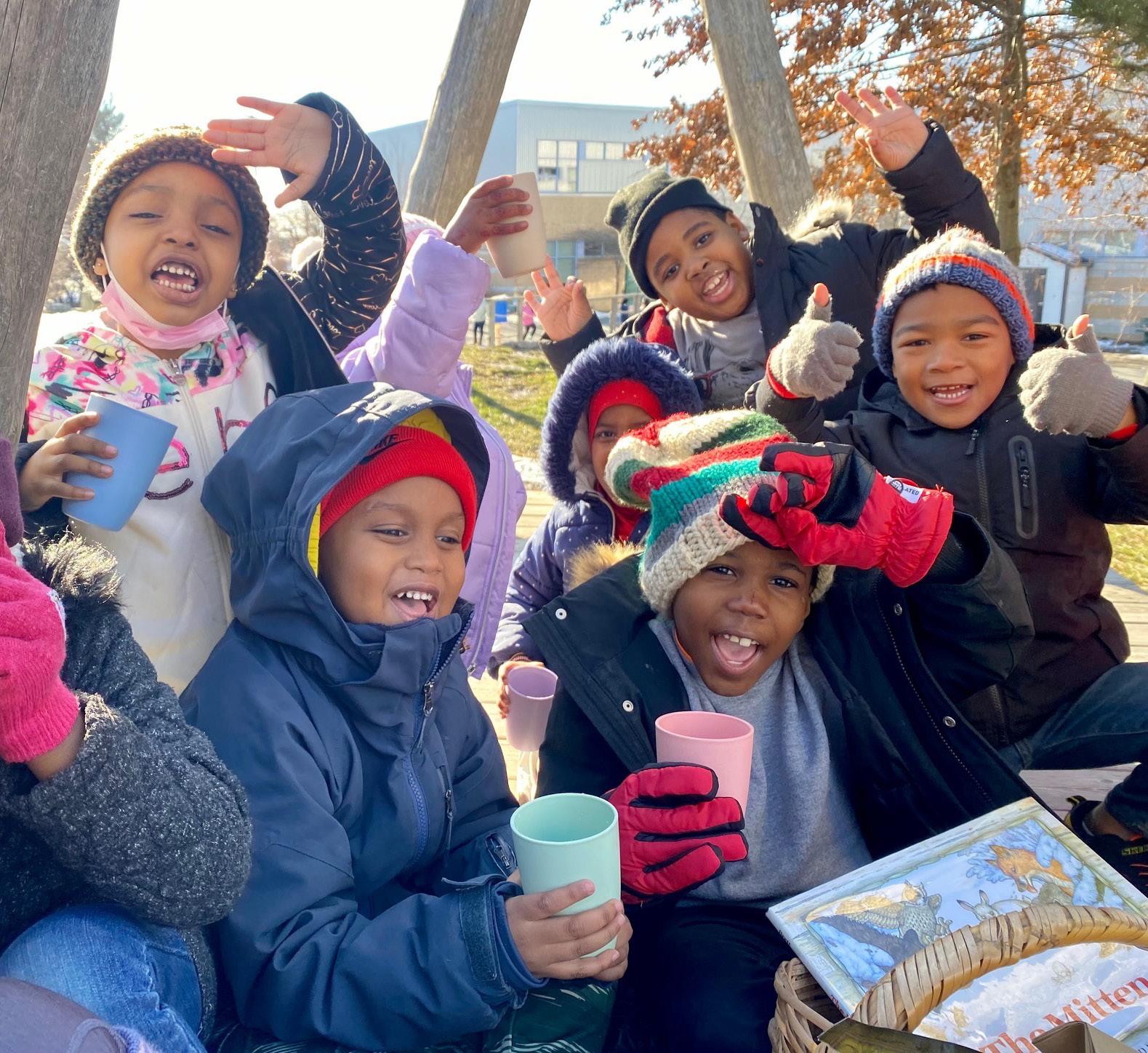
SKOWHEGAN AREA HIGH SCHOOL
Kate Drummond
For the first time, Skowhegan Area High School was able to offer a horticulture apprenticeship program in partnership with the Maine Cooperative Extension. With the support of high school science teacher, Kate Drummond, as a mentor, three students were able to take an online horticulture course and then secure an apprenticeship with the local land trust, Somerset Woods Trustees. The students received a science credit from the high school for satisfactorily completing the course and are now working to complete the 200-hour apprenticeship. The focus of the apprenticeship work is to grow native plants around the community as well as to identify and remove invasive species on Somerset Woods properties. The one senior and two sophomore students have worked with their mentor from Somerset Woods Trustees to grow native plants from seed in the high school greenhouse and transplant them onto the school campus as well as on Parson’s Family Preserve, a 27 acre field that is managed by Somerset Woods as a pollinator preserve. In addition, the students and their mentor held a native plant sale at the Skowhegan Farmer’s market to raise awareness of the importance of native species as well as to raise funds to support the continuation of horticulture program. The students and their mentors will continue to work throughout the summer planting, caring for the native seedlings, and identifying and controlling invasive species. When the 200-hour apprenticeship has concluded, these individuals will be awarded a micro-credential badge from the University of Maine System indicating that they have successfully completed a high-quality and rigorous training and were able to demonstrate their skills in a work-based setting.
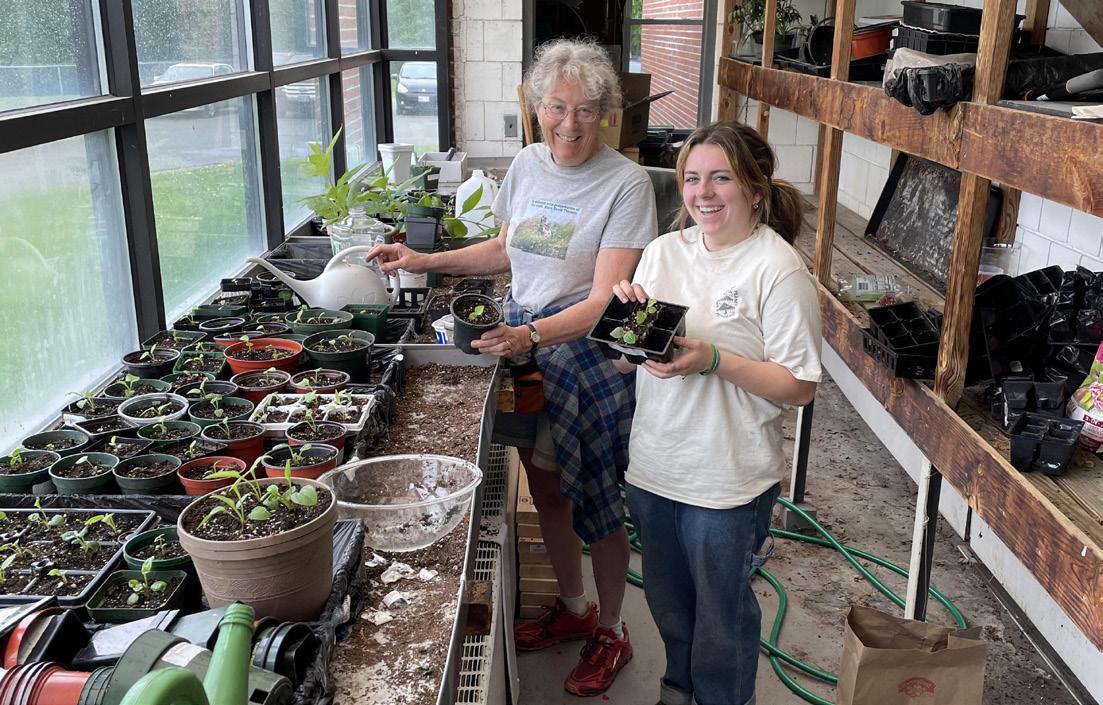
7
Field Trip
COASTAL WASHINGTON COUNTY INSTITUTE OF TECHNOLOGY
GORHAM MIDDLE SCHOOL
Angela Gospodarek Lucille Willey
The seventh graders have been learning about invasive species all year. We have studied plants that are invasive around our school. This money gave us the chance to explore an intertidal ecosystem and search for invasive green crabs and Eurasian shore crabs, species we weren’t able to see up close at our school. We also had a group of students who went to the Maine Wildlife Park to learn more about some of our native species.


Outdoor learning for young students is a wonderful way to build on their already keen observational skills. Far too often students are forced to learn at desks and in ways that do not naturally build empathy for all living things. Getting outside is an incredible way to build language acquisition skills for young children. Better yet, it is not costly. With some color paint chips from a hardware store our students have built an incredible activity for honing observational skills in a non threatening and non competitive way. With paper and crayons we have designed lessons that incorporate leaf rubbings. We have really worked to center the them on I notice...I wonder...It reminds me of... With our high school students, our activities led to greater curiosity around noise pollution and the impact on health. When reflecting on our time in nature one student said, “I was surprised how anxious I felt in the calm surroundings. I wasn’t use to this. Life at home is so noisy and chaotic, and I realize that I need more of this time in nature.” Another high school student mentioned that she will always be thankful for the way the pandemic brought her closer to nature, and she hopes schools do not forget the healing power of the outdoors. Next year our early childhood education students hope to do even more by researching Scandanavian Forest Schools. They wish more classes at high school found ways to tap into the natural curiosity we have when we learn outdoors.

8 Maine Environmental Education Association Mini-Grants for Outdoor Learning
Field Trip
OCEANSIDE HIGH SCHOOL
Sixteen STEM and Liberal Arts Academy students spent four days at the Hurricane Island Center for Science and Leadership where they did scientific research and created art inspired by their learning and the natural environment of the island. For their science exploration, students collected data on asco seaweed, learned about the life cycle of kelp, went lobstering and learned about the impact of climate change on the industry, visited the island’s aquaculture site, dissected and diagrammed scallops, studied plankton, and sorted scallop spat bags.
They also worked with artist Alexis Iammarino and created designs for silk banners that reflected both their learning and the nature of the island that they observed all around them. Multiple banners were created that reflected their experiences - which included images of asco, scallops, the barn swallows that swooped over our heads, the beach rose, sunsets, etc. In addition, the students created journals and worked in them using colored pencils, pens, and watercolors during their down times. They also carried with them watercolor pallets that they sketched in during their science times.
The students supported one another and bonded through their collaborative work. It was thrilling to see students discover their own creativity as they interacted with the environment around them.


Some student reflection:
-”I liked the hands on learning experience also being outside gave me a more calm and enjoyable time.”
-”I love the atmosphere of island living and the amount of space between my device and me, the varying amount of creative liberty I have while being on Hurricane. I feel I was allowing a natural side of myself to come out.”
-”I liked the hands on and real experience of the learning on Hurricane Island. All of the science was very cool, especially learning in an actual scientific and oceanic environment.”
9
Jennifer Cross
Field Trip
SANFORD HIGH SCHOOL
SOUTH PORTLAND HIGH SCHOOL
Lucy Sommo Lindsay Strout
My high school wildlife biology and nature journaling students were able to go on two separate field trips this school year with funding from the MEEA Grant! We studied various kinds of animals throughout the year in class, and for some of the students, they had never seen a moose in person, or met some of the non-releasable animal ambassadors at the Center for Wildlife like, Lucy the Screech Owl, Maverick the Peregrine Falcon and Pisces the Red-tailed Hawk. My students and I felt like kids again on these field trips with our bagged lunches and our nature journals in our backpacks. The smiles and stories they all shared were the exact reason why field trips need to happen, no matter how old the students are. As their teacher, I loved it when students ran up to me to show me a picture or tell me something they had just seen at the Maine Wildlife Park, and then listing out facts that I had taught them in class! I cannot thank the MEEA enough for this grant, with your help, my students had two fantastic days observing animals they might have never seen!
The MEEA grant allowed me to introduce new Mainers to their new physical environment- the coast of Maine. My students arrived in Maine over the past 12 months and have had limited exposure to the coastal environment in the state. Thanks to our MEEA grant we were able to bring the coast to the classroom with Chewonki’s Traveling Natural History program and then we were able to bring our students to the coast so that they could explore and learn about their new physical environment. The students were thrilled to have the chance to do these activities. Thank you for making this possible!

“My favorite part of the trip was going outside and seeing the ambassadors. I also liked journaling about a live animal up close. I learned that a turkey vulture doesn’t actually make noise, a peregrine falcon poop is green and that many birds puff out their feathers to look bigger and be warmer in the winter.” - Vonti
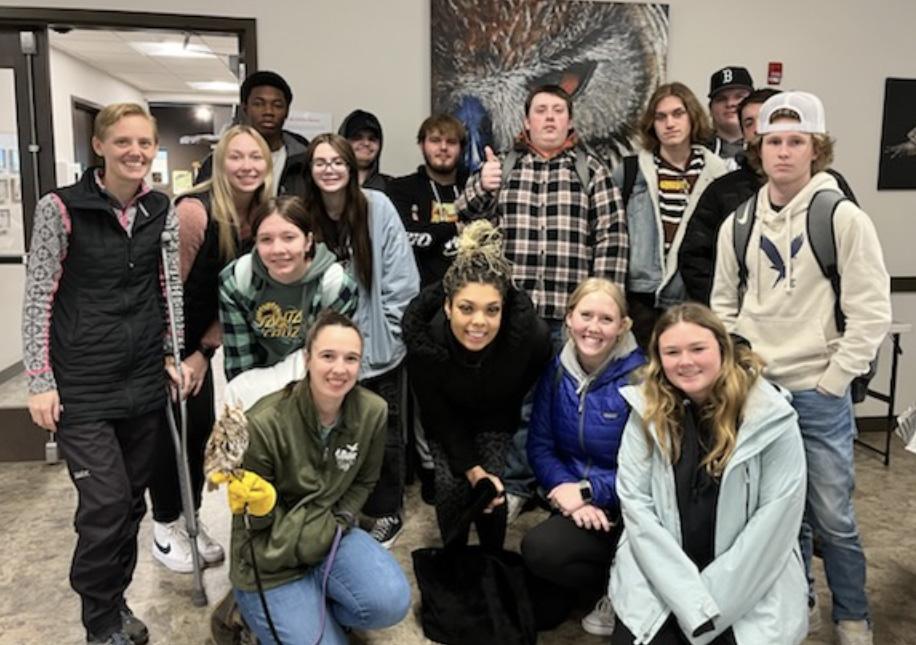
“My favorite part of the trip was seeing the animals getting the help that they needed. Seeing all the reptiles were pretty cool and seeing all of the birds I learned that a falcon flies around 200 mph” - Jason

10 Maine Environmental Education Association Mini-Grants for Outdoor Learning
Field Trip
WENTWORTH SCHOOL
Gwen Cesere
The mini-grant from the MEEA was used to further the outdoor education and experience of the third grade science unit. The funds directly supported bringing in educators from the Maine Audubon Society to speak about the plants and animals that live in the Scarborough marsh. Students were in awe to examine animals up close and personally when the Maine Audubon naturalist visited our school and while at the marsh. The naturalist showed students up close and personal ways the marsh is connected to the environment in which students live. Students were able to apply direct knowledge of their wetland unit to a marsh in their backyard.
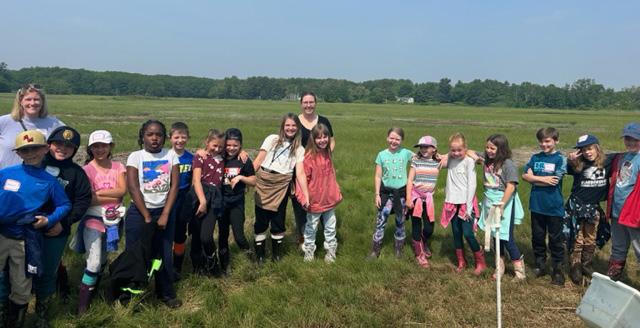
It was so impactful to see how necessary the marsh is to our ecosystem in Scarborough as well as how many animals thrive in this habitat. One student stated that “it was really cool that I was standing on grass from last year and it decomposes year after year”. Students were able to incorporate food chains/ webs and identify marine and animal diversity within the marsh as well as see the changes that have occurred in the marsh over time. Students were able to identify how the marsh is needed for sustainability for the future of Scarborough. This field trip allowed students to have ownership of their learning as well as motivated them to care and protect this wetland environment.

11
Foul-Weather Gear
GREAT SALT BAY COMMUNITY SCHOOL
Jessica Hilton
These days, when it’s wet outside, Kindergarteners say “We’re going to need our suits today!”
Each classroom now has rain suits hanging and ready for use. Whenever school grounds are wet, it is raining, or wet weather is predicted, we have what we need to keep students comfortable and dry. We can head outdoors for field trips, school agriculture lessons, playtime, or more, without the weather impacting our learning plans.
One of our favorite places to explore is the Salt Bay Farm property. A recent field trip involved students exploring the saltwater marsh on a day when showers were expected. Having rain gear allowed students to stay dry looking for horseshoe crabs and other marsh animals, as well as walking through tall marsh grasses, all during drizzly conditions.
Sarah Gladu, Director of Education and Citizen Science at Coastal Rivers Conservation Trust, spoke of the experience: “From an educator’s perspective, they are FABULOUS! What a gift to be able to keep a large group of kindergarteners comfortable during outdoor learning so they can focus on the important things - exploring, seeing new animals, and getting grubby. Keeping those kids happy, by keeping them comfortable, enhanced their learning and also increases the likelihood that they will seek out future outdoor activities because they know how to dress for them.”
We knew having the rain suits would be fun, but it’s a true game-changer. We are truly grateful for the opportunity the MEEA grant has given us to help children enjoy being outdoors in Maine in a variety of weather conditions.
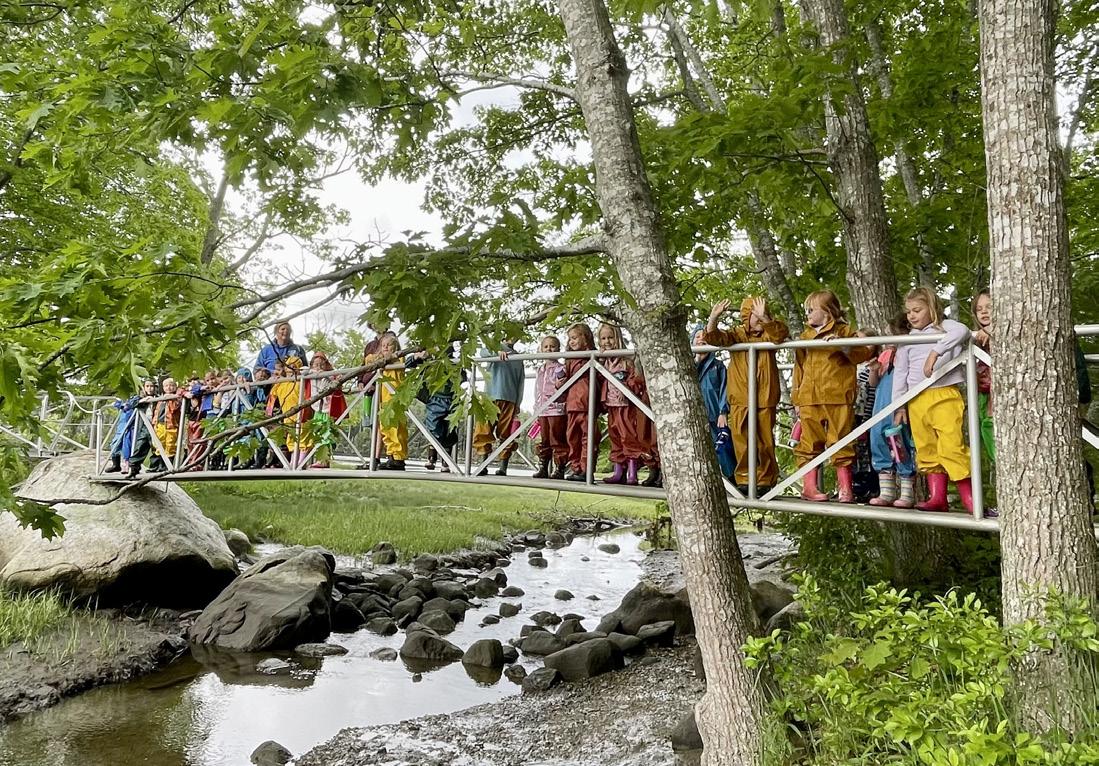
LIMESTONE COMMUNITY SCHOOL
Hogan Marquis
Every single student in Limestone Community School’s middle level (grades 5 through 8) has access to outdoor learning because of the MEEA. In our first mini-grant (2021-22 )we purchased a set of waterproof shells for students to wear, and then in the 2022-23 round we purchased a couple dozen BOGS boots for students to wear. The boots were available for students to use during school hours and they were used heavily.
The boots and jackets lived in my science lab, and students came in and out throughout the day to get gear. They are neatly numbered and organized to allow easy access to students. When they are done, we sanitize the boots, much like they do in a bowling alley.
The boots allowed us to snowshoe, hike, walk in the mud, collect maple sap, and go ice fishing.
12 Maine Environmental Education Association Mini-Grants for Outdoor Learning
Foul-Weather Gear
MILBRIDGE ELEMENTARY SCHOOL
Kate Drummond
Having rainsuits and rain boots have allowed my pre-k students the opportunity to explore our outdoor playground during rainy weather. My young students are now able to run, jump and splash in puddles without hearing their teacher say, “Please stay out of the puddles.”

The first time my students went out in their rain gear they couldn’t believe that they were allowd to incorporate rain puddles into their play. Students were scooping up hand fulls of mud and putting the mud into the various puddles that covered our playgound to create “dams, rivers and ponds.”
Outside time is always a happy time for my students. The squeals of laugher, engaged conversations and the smiles on my student’s faces as they have begun to play outside during rainy weather has been heartwarming to see.
SPRUCE MOUNTAIN ELEMENTARY SCHOOL

Suzen Polk-Hoffses
Spruce Mountain Elementary is a school in the western foothills of Maine. We are lucky to have great outdoors spaces located on campus, including a swamp and frog pond in the woods. Many of our children come to school without proper gear to be outside in the snow or mud. With the grant money we were able to purchase several pair of Bog boots, snow pants, rain ponchos, gloves and socks to make outdoor learning universally accessible.

13
UPPER KENNEBEC VALLEY HIGH SCHOOL
Isaac Davis
It is with no doubt that in recent generations maintaining a connection with the outdoor world has become less and less. With the realization of such, the Upper Kennebec Valley Junior/Senior High School decided to take the initiative to start its outdoor education/wilderness studies and agricultural studies programs. With this grant and others like it, we built the foundations of two very popular and well-received programs.

The outdoor education program has opened up the world of the outdoors to many students otherwise unable to explore the woods on their own. It didn’t take long before our small community caught word of these programs and every landowner neighboring our school campus gave us unfettered access to explore their woodlots. We can now venture in nearly any direction with hundreds of acres at our fingertips. Whether it has been map and compass, forestry, maple syrup, wilderness studies, or any of the number of other units offered through this course, the growth in interest in our new programs has flourished. With each parent I speak to, the feedback is always the same; parents of our community are not only supportive of these programs but proud that their children are a part of them.
Our agricultural studies program will be growing it very first garden this summer. A number of students have already signed up to attend our summer gardening program where they will all the necessary skills and tricks to raising lush and fruitful vegetation. The program itself has explored the construction of its very own greenhouse, integrated pest management practices, seed starting, seedling training and so much more. But, the real success of this course is the number of students excited to take plants home and continue to raise them from seed to vegetation. There have been numerous occasions now where parents have shared that their students want to start a garden in the backyard. It is the hope that by next year, our program will have a full farm stand up and running and will be able to sell affordable organic food back to its own community.

14 Maine Environmental Education Association Mini-Grants for Outdoor Learning
Foul-Weather Gear
Foul-Weather Gear
W.G. MALLET SCHOOL WASHINGTON ACADEMY
These rain bibs and rain mittens were a wonderful addition to add to our nature based playground. They were a lifesaver for our wet, muddy, rainy spring. We were able to make mud pies, crawl through our tunnel, and SPLASH in all the water from our melting snow. When it was still cold, but snow was slowly changing to puddles, we could continue to wear our winter clothes and keep them dry with our rain bibs and rain mittens. The children were able to participate in making mud pies, many of them for the first time. There were many laughs, squeals and dirty rain bibs as they sat, kneeled, dug, and splashed in mud puddles and filled pans of water to cook in their play kitchen. So much appreciation for awarding us this grant to award our kiddos with lots of outdoor time no matter the weather!

With the headwaters at Fifth Machias Lake, the river meanders along and drains into the Machias Bay, creating a unique habitat as a tidewater river approximately 10-15 minutes from my classroom. During our 80 minute classes students have access to this pristine outdoor classroom. With the gear purchases with our MEAA Grant, our students had the opportunity to access the river in waterproof boots, waders, mittens and gloves. It was a perfect fit since students could be warm and dry while outside completing their field studies. The purpose of the field work was to monitor water quality on the river as we partnered with the Downeast Salmon Federation and Maine Audubon-Fish Friends program to raise Atlantic Salmon in the classroom and release them as fry in the river. Students learn how to monitor water chemistry in the river in order to mimic natural river temperatures and conditions, including dissolved oxygen, salinity and temperature.
Having proper gear for students facilitates this process making it a more enjoyable experience. I often hear students state that the “class went by so quickly and I had a great time working outside” and “ I can see the connection to the river and our classroom aquarium now after collecting water samples from the river”. Warm hands and feet make all the difference in offering students a positive experience working outdoors. I love seeing my students being outdoors focused on the hands-on science they are experiencing. The experience sticks with them and they are able to make better decisions about their impact on the environment.

15
Carol Coryea Hannah Goodenow
Garden & Greenhouse
BELFAST AREA HIGH SCHOOL
David Thomas
CUSHING COMMUNITY SCHOOL
Dawn Jones
Our MEEA Mini-grant funded a project that’s part of ongoing work to transform our school garden area into a reading and learning garden, boosting student, family, and community use of the area. This is part of our larger work to expand outdoor learning resources so we can provide more outside time for students. Our school campus also involves a nature trail and outdoor classroom area, story path, an apple tree “circle” with pollinator garden, as well as our playground area. We’re finding that having a variety of spaces is important so teachers have options as they take students outside for breaks, community circles, science lessons, or independent reading, writing and learning. We want spaces to accommodate full classes or smaller groups. As our third-grade teacher reflected on the new area after her class’ first visit, “We’re looking forward to more options for having reading time outside.” The new space funded by this grant has flexibility as a reading area with benches, and also an open learning area where students can gather near the raised beds to plant, organize their harvest, or gather for lessons about the garden.

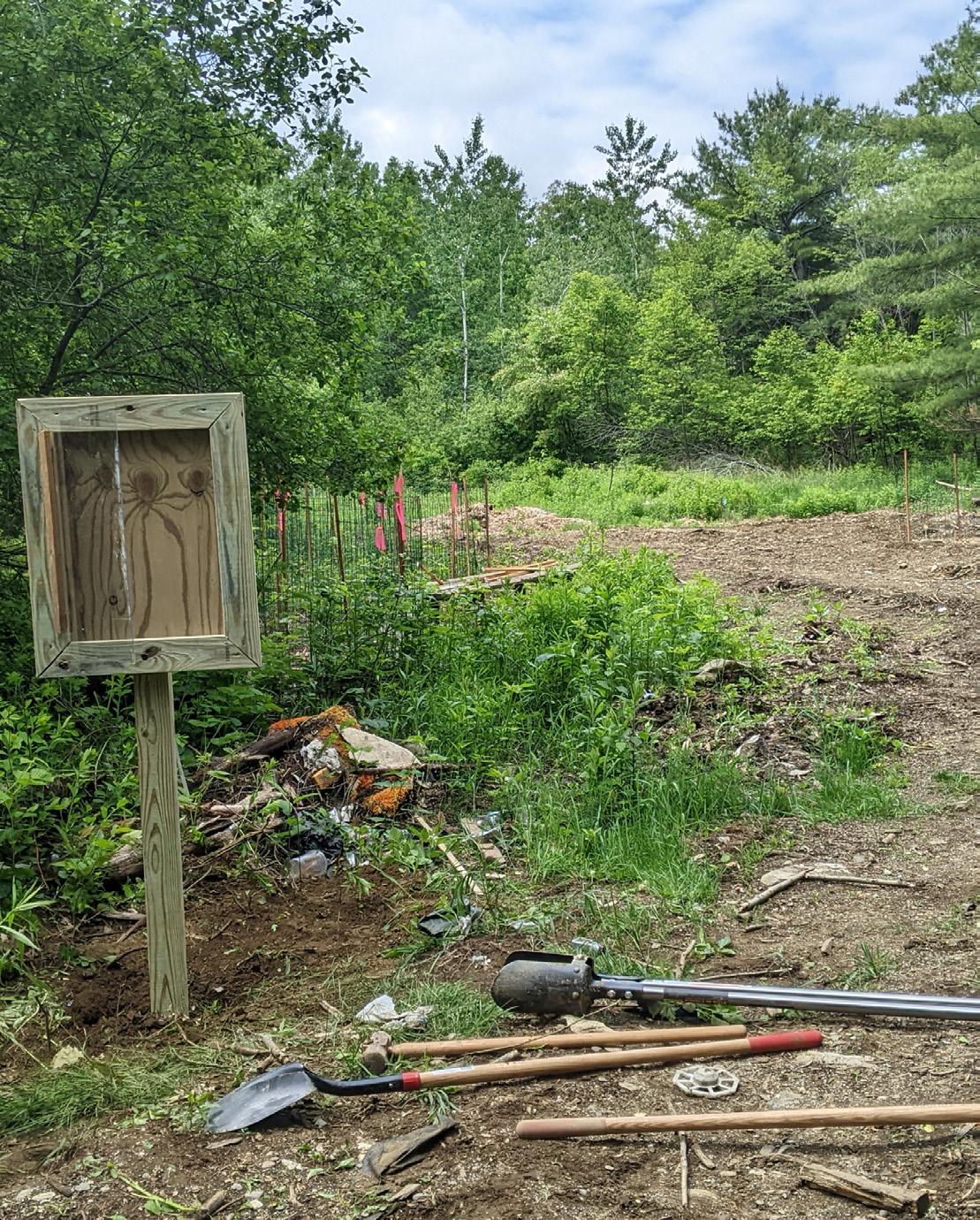
Thanks to a grant from the Maine Environmental Education Association, Belfast Area High School students have worked to renovate an outdoor classroom space and garden for students. This involved clearing brush and cutting trees, many of which were invasive plants. Students then designed a pollinator garden with the help of a local plant ecologist. Plants were selected and purchased from a local nursery. More students helped to prepare the soil and plant various native species to make a pollinator garden. Most students had little prior experience with gardening in general and specifically pollinator gardens.
We took a field trip to a pollinator garden that bordered a community vegetable garden in the city. Students began to appreciate the ecosystem benefits of pollinator plants and were impressed with how many insects were buzzing around the plants and feeding. At least one student will be conducting an internship to expand and maintain the pollinator garden at the school.
16 Maine Environmental Education Association Mini-Grants for Outdoor Learning
Garden & Greenhouse
DRESDEN ELEMENTARY SCHOOL Virginia
Thom
EAST END COMMUNITY SCHOOL
Nicole Grace
Because of the grant received we’ve created an outdoor learning area rich in culturally relevant, native plants for our younger grades.
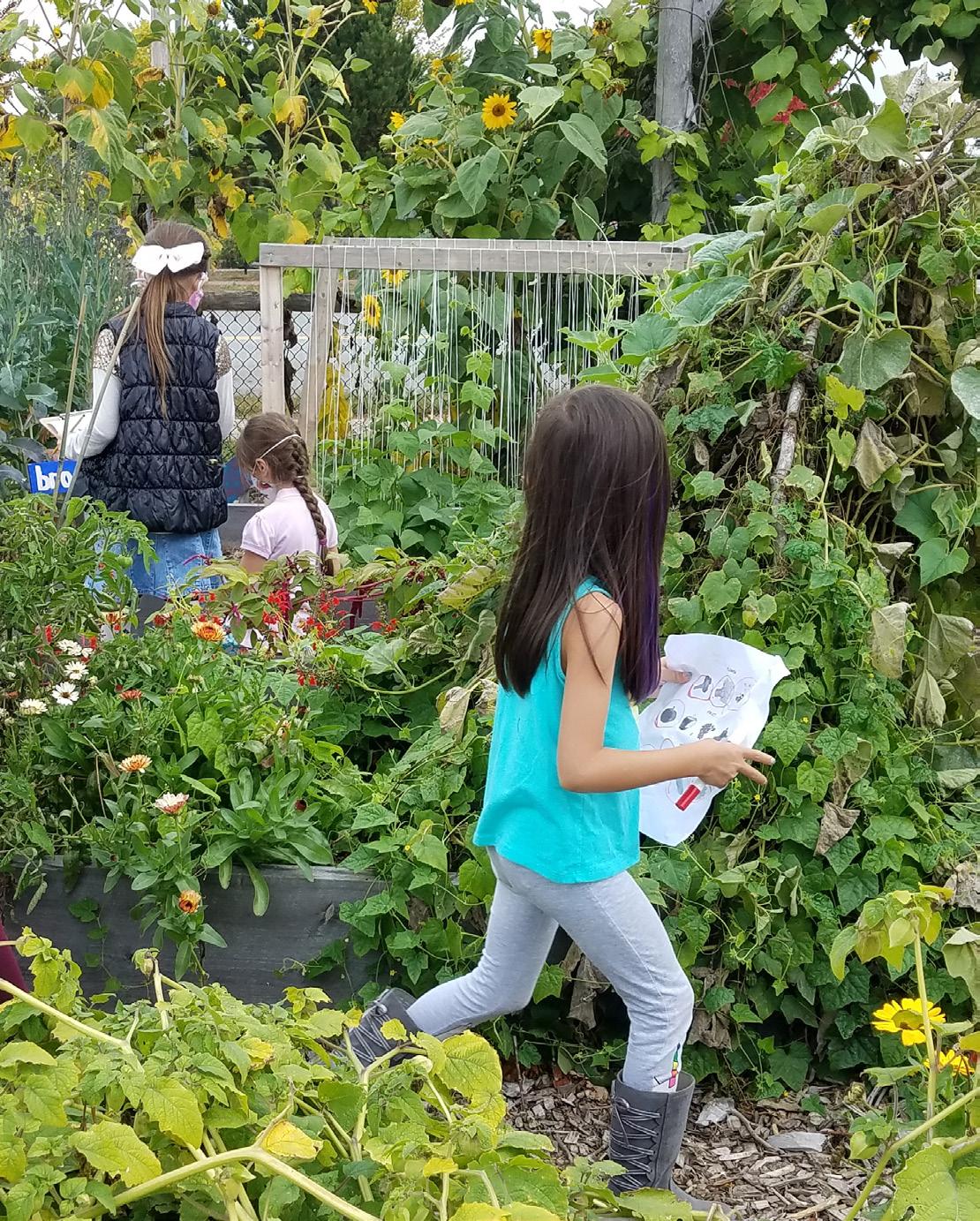
This area provides the same access to observable, natural phenomena that our older children have in the off-campus school garden- exposing them to scientific inquiry through schoolyard specific flora and fauna, habitat, and environmental literacy principles. We have created a sunflower bed that ties into the new first grade Wabanaki unit, a monarch waystation, and further defined the space with native plants that enhance learning and create buffers from the indoor environment.
This area has been wonderful for our students! From studentled inquiry and sensory exploration, to lessons on patterns and pollination, having a safe and accessible outdoor classroom not only enhances student learning and collaboration between teachers, but also allows for the curiosity of little minds and bodies to fully engage with the world of which they are a part of.
Our project involved organizing the beautification of the entrance to our school. All grade levels participated in some manner, from clearing the grass, planting, mulching flower beds, weeding and watering. Seeds were also started indoors.
Bird watching was also an outdoor activity introduced this year. The funding allowed me to purchase a class set of binoculars, and bird books and posters. Students set up 4 feeding stations on different parts of the school property. Students also filled the feeders as needed. Two squirrel feeders were added as they were also fun to watch and it deterred them from the bird seed, somewhat!
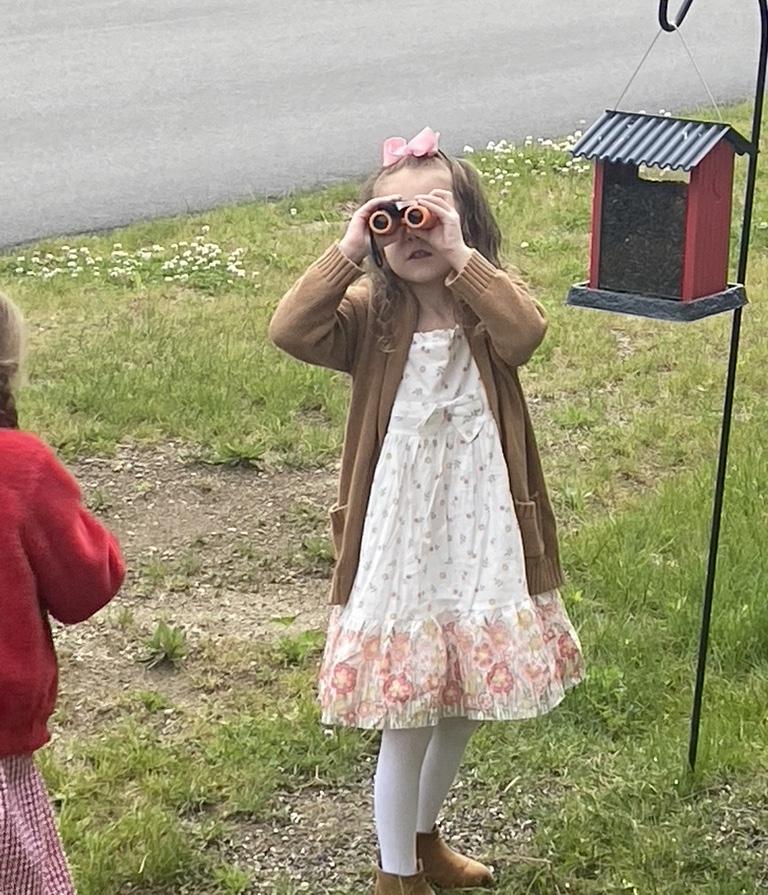
My original plan was to introduce snow shoes. An introductory field trip was proposed, but the weather did not cooperate.
Outdoor relaxation areas were planned to provide respite for all in need.
The biggest learning curve seemed to be the idea of upkeep and maintenance. The ability to purchase supplies needed for the care of the projects was so helpful and important! Dresden ES students and staff are looking to the future to continue adding to our outdoor spaces.
17
Garden & Greenhouse
GEORGE B. WEATHERBEE ELEMENTARY Jennifer
Cyr
Our goal for the vegetable garden at Holbrook Middle School is not only to use this space as an outdoor classroom, but also to use the food grown in our school lunches and to be able to donate food to our local food pantry, CHEFS. To maximize the produce grown in our garden, we decided to add three new raised beds. The students got to be a part of the complete process, minus cutting the wood. The students and I determined the placement of the beds and calculated the width of the rows between them; we calculated the lengths of the PVC pipe (for row covers) and measured and marked the length between them so they would sit evenly. But best of all, the students got to use the drill to put the beds together.
One of my favorite moments was working with one of my 5th grade students who was thrilled to finally be using a drill – after successfully screwing together the corner of a raised bed she yelled, “I FEEL SO POWERFUL!” This is what education is about: not just giving students knowledge and tools, but empowering them to use them.
Our garden project has empowered our students in so many ways, from learning how to care for their bodies and minds through healthy eating and exercise, to recognizing their capacity for self-sufficiency, but also the importance of caring for others. After the beds were built, they needed to be filled with garden soil, weeds needed to be pulled out of walkways, seeds needed to be planted. It was amazing to watch the students coordinate these tasks. Some showed great leadership in delegating and directing some of these tasks, some showed kindness in volunteering to miscellaneous tasks and help others, and all showed great perseverance to get the job completed.
With these projects, and this grant, we were able to empower our students by showing them that they can make a difference.
HOLBROOK MIDDLE SCHOOL
Kate Drummond
Our goal for the vegetable garden at Holbrook Middle School is not only to use this space as an outdoor classroom, but also to use the food grown in our school lunches and to be able to donate food to our local food pantry, CHEFS. To maximize the produce grown in our garden, we decided to add three new raised beds. The students got to be a part of the complete process, minus cutting the wood. The students and I determined the placement of the beds and calculated the width of the rows between them; we calculated the lengths of the PVC pipe (for row covers) and measured and marked the length between them so they would sit evenly. But best of all, the students got to use the drill to put the beds together.
One of my favorite moments was working with one of my 5th grade students who was thrilled to finally be using a drill – after successfully screwing together the corner of a raised bed she yelled, “I FEEL SO POWERFUL!” This is what education is about: not just giving students knowledge and tools, but empowering them to use them.
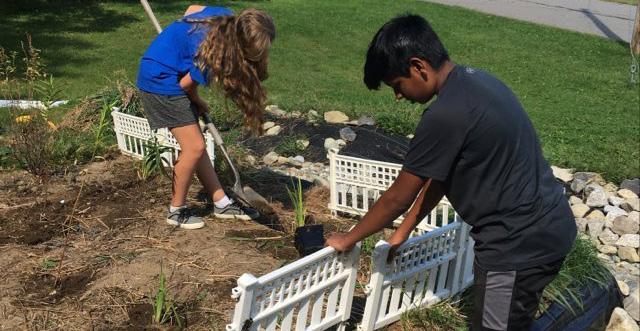
Our garden project has empowered our students in so many ways, from learning how to care for their bodies and minds through healthy eating and exercise, to recognizing their capacity for self-sufficiency, but also the importance of caring for others. After the beds were built, they needed to be filled with garden soil, weeds needed to be pulled out of walkways, seeds needed to be planted. It was amazing to watch the students coordinate these tasks. Some showed great leadership in delegating and directing some of these tasks, some showed kindness in volunteering to miscellaneous tasks and help others, and all showed great perseverance to get the job completed.
With these projects, and this grant, we were able to empower our students by showing them that they can make a difference.
18 Maine Environmental Education Association Mini-Grants for Outdoor Learning
Garden & Greenhouse
KATAHDIN ELEMENTARY SCHOOL
KERMIT NICKERSON ELEMENTARY SCHOOL
Nicole Caruso Gabrielle Brown
The MEAA’s generous grant allowed us to purchase two table-top light gardens--significantly increasing our ability to engage students in growing throughout the winter. We experimented with micro-greens, herbs, and potatoes (which went surprisingly well!) in addition to starting most of our own seedlings for the garden this spring.

The grant also supported the purchase of all lumber, hardware, greenhouse plastic, and related materials to build a small-scale hoop house for our school garden at Kermit Nickerson Elementary. Construction is scheduled for this summer and we have a team of volunteers ready to go. This project will allow us to expand our growing season as well as provide much needed sheltered space in which to continue engaging in outdoor learning during all seasons.
We cannot thank the MEEA enough for supporting our garden-based learning efforts with elementary students!

Katahdin Elementary School’s garden programming has been constantly expanding over the past four years. Garden features include designated raised beds for classroom teachers, a perennial plot, an orchard, and a Garden Classroom. Each space represents countless opportunities for students to experience academic content in hands-on ways. With summers becoming increasingly dry here in Northern Penobscot County, irrigation plays a major role in caring for these garden spaces. Our system relies on thousands of feet of hose running from the school and is therefore vulnerable to lawn mower damage. We have spent significant time and funds repairing and replacing hoses in the past few years. Thankfully, we were able to utilize an MEEA mini grant to purchase hose storage equipment for three of the most vulnerable sites. This storage equipment will keep lengths of hose off the ground and out of harms way.
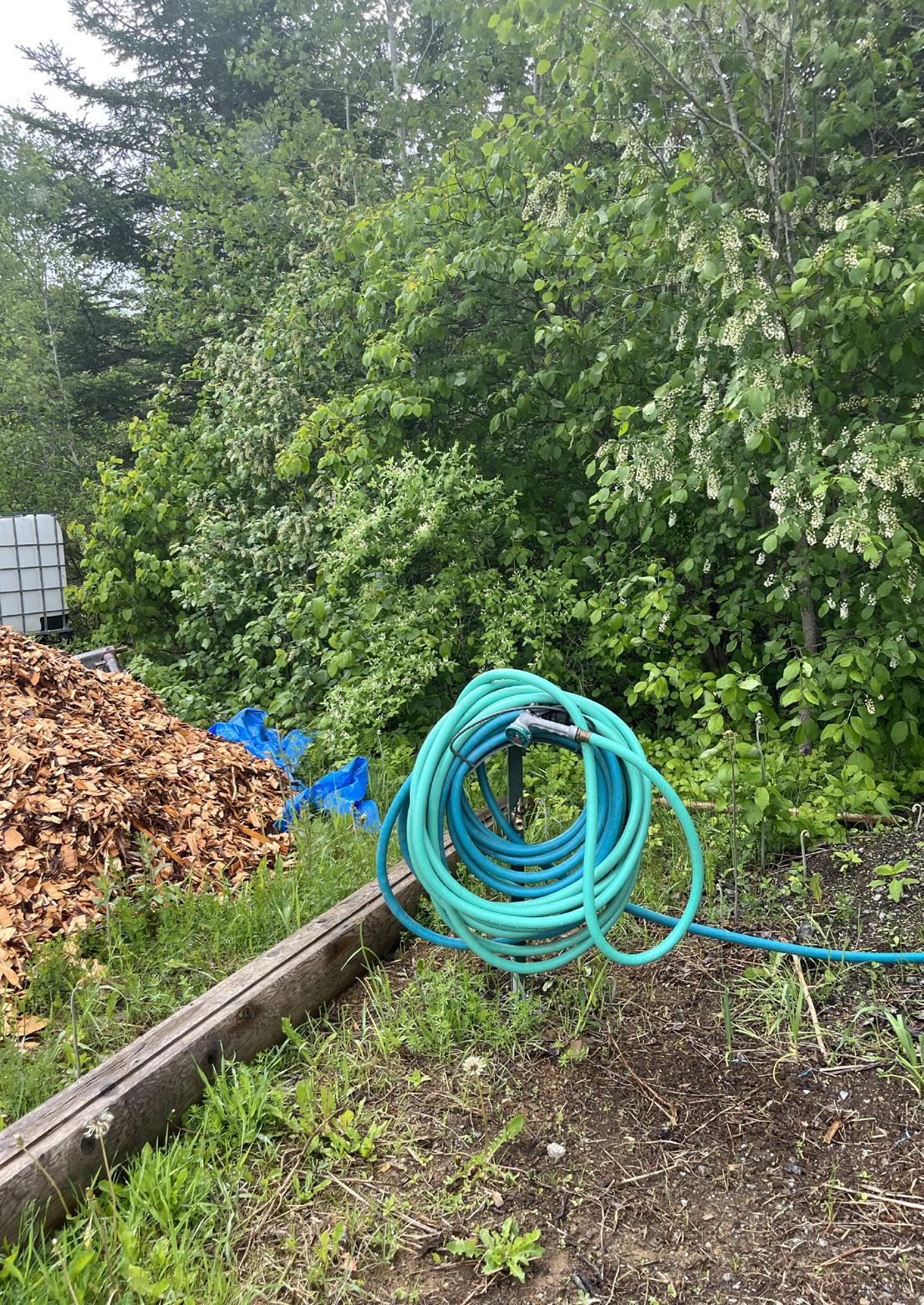
19
Garden & Greenhouse
KINGFIELD ELEMENTARY SCHOOL
Selina Greene Warren
The vision for the KES Biodiversity Project is to enhance the biodiversity of the school campus by creating a more diverse plant environment while inviting nature in close to interact and learn from.
Not only has the KES Biodiversity Project improved the natural landscape of our school grounds, but it has also improved the vitality of the school garden classroom by increasing the presence of pollinators.
This year for phase two of the KES biodiversity project, we introduced larger native shrubs to make the outdoor learning environment more inviting for Audubon Research by creating habitats for native and migratory bird species. As one kindergarten student so eloquently stated after we planted, “I am so happy that we planted the shrubs, because I already saw birds nesting on the shrubs, and I think they like their new home near us.”
At Kingfield Elementary School, we value place based education and outdoor learning. As a result of this value, students are connected to their community and love sharing their learning. Moving forward, students will continue data collection and research of the native flora and fauna in the Biodiversity Field. We plan to create information sheets with QR codes on kiosks similar to those in our other outdoor classrooms as a result of our Biodiversity Project Research so that all community members who wish to learn more about our place may do so.
MARCIA BUKER ELEMENTARY SCHOOL
Sammi Jo MacFarland & Tina Wood
Plant a seed Day is brought to Richmond Elementary School Marcia Buker through generous grant funding, many volunteers and local donations from throughout the communities that serve our students. This funding allows much needed materials and supplies to be purchased for our thriving Garden Group for our PreK-5th students. The Garden Group offers 13 raised beds , an outdoor pavilion, a tiny Forest Story Walk, and a dig bed and an outdoor Xylophone. It also helps to support our Plant a Seed Day every spring and our newly developed Super Snack day that allows for the purchase of healthy foods to be prepared and served to our students at least one day per month. Students have the opportunity to try healthy food choices that can be grown in our gardens as well as purchased from around the world.
During this program we utilize our spaces to give our students a variety of experiences interacting with their outdoor environment which we believe is critical for students to develop a sensibility of environmental stewardship, to imagine themselves as future gardeners/farmers/outdoor caretakers and to maximize their joy and applied learning opportunities at school. Some of the students’ experiences in our garden spaces are adult led curriculum inc. pollination and plant propagation, some are activities are student driven outdoor music and dig bed activity.
Students are very excited for the super snack day program and I often see them standing in the hallways where we post the results of each poll which determines the classrooms favorites for that day. “Super snack day is my favorite day!” “ I didn’t even know I likes sweet potato’s” “Can I have seconds please?...this is delicious!!” statements like these are statements students make surrounding our food tastings. It bring me great joy to bring these experiences to our school and we couldn’t do what we do without your generous support.
20 Maine Environmental Education Association Mini-Grants for Outdoor Learning
Garden & Greenhouse
MOUNT DESERT ELEMENTARY SCHOOL

Water and garden mud! “This is my favorite day ever!” says one child dripping in dirt. Imagination, play and joyful laughter is important and happy work for the children at Mount Desert Elementary. Our littlest gardeners begin their gardening journey by becoming intrigued by the simplicity of soil fun~and sharing some messy silliness with their playmates! Learning to work cooperatively and using the garden tools appropriately, teaches young people about the importance of being of service to their school community, while learning life skills when creating something beautiful together. The older children help turn over and rake the garden, haul away the small rocks and debris leftover from the winter and add bags of rich compost to ready the soil for planting. The younger gardeners make sure that the soil is perfectly dirty, good to dig in, super muddy and full of worms! We are very gentle with our worm friends~the first lesson for all gardeners~respecting nature. Hundreds of sunflowers grow along one side of the garden fence welcoming and feeding pollinators~the children learn about the importance of these pollinators. We keep several bird feeders in the garden filled with sunflower seeds attracting many different song birds~our school garden gives us endless spring magic and teaches some of the most memorable lessons about
wildlife. Gardening class day is a favorite for every student. The children love to be outside planting seeds and seedlings~and seed potato~there is much excitement to see a seed sprout, a seedling grow tall or a potato plant burst through the soil surface. During the summer months, the garden will be tended by the school’s garden coordinator~growing lush and full of vegetables for the children to harvest and eat when they return to school in late August. When children plant a garden they learn to dream of tomorrow.

21
Patricia Kelley
Garden & Greenhouse
PARK AVENUE ELEMENTARY SCHOOL MT. ARARAT HIGH SCHOOL
Darcy Baggett
Project G.R.O.W. (Garden Roots and Outdoor Wellness) is Mt. Ararat High School’s collaborative school garden program. Developed during the 2021-2022 school year, its mission is to offer all students the opportunity for hands-on, therapeutic, outdoor learning through multi-disciplinary lenses such as health, science, art, and English. The garden has grown significantly in its first year to include ADA-accessible raised beds, a small-class seating area, in-ground vegetable beds , a ‘Maine Natives’ section, berries, and a newly student-built shed for the storage of tools. The food grown is offered to the school’s kitchen and any excess is donated to Mid Coast Hunger Prevention, including their pantry available for local students.
This Spring, Project G.R.O.W. collaborated with Mt. Ararat’s Art Department and their Community Pathways Program to provide students the opportunity to work with Sam and Patrick Dougherty, internationally-known sculptors. Sam and Patrick worked with approximately 200+ students and created various hut-like sculptures made from local saplings. The feedback from students was inspiring and featured on the local news. “The whole garden program is great because it brings people together, it’s a healthy place to learn, and the students have a voice,” stated Sophie Shannon.


The engagement in, enthusiasm for and diverse interests in the garden are exactly what we had hoped to accomplish. From a quiet therapeutic space, to a place to engage in science research, to a collaborative, outdoor environment that encourages school engagement during the summer months, and an opportunity to learn about food resources, Project G.R.O.W. does not disappoint. A full range of student populations, the staff and various community members are all beneficiaries of the successful, developing program.

Katarina Arvedson
Park Avenue is grateful for the funds provided to support and grow our gardening program. We surveyed the teachers to see how the funds we received could best be used to support outdoor learning. Many teachers suggested benches, so that is what we got. Our educational programming keeps growing during the summer so the benches will be utilized then as well as during the school year.
Sixty four percent of our students qualify for free or reduced lunch. We have a great need to provide fresh produce in addition to the shelf stable goods The Good Shepherd Food Pantry is able to provide us to support our families over the weekends, school vacations and summer. The compost and hoses we purchased will increase our yield from the gardens that support our food pantry.
22 Maine Environmental Education Association Mini-Grants for Outdoor Learning
Garden & Greenhouse
RSU 26: ORONO MIDDLE SCHOOL

Jessica Archer
The Orono School-Community garden continues to grow and expand. At just three years old, the garden provides space to grow many types of vegetables started from seeds by Orono middle and elementary school students. The garden provides a space for students from the Orono schools to come together with a common goal of caring for the garden and growing fresh fruit and vegetables to sample, use for educational lessons including our cooking program and learn about the importance of pollinators and how to care for a garden.
Students, regardless of their age, enjoy digging in the soil, discovering the insects and other invertebrates that help to keep the soil healthy and those that will harm the garden, and use their senses to explore the flowers, herbs and fruit from the plants. Students who might typically struggle in a traditional learning environment, find the garden to be a learning space with many opportunities to not only learn something new, but
take part in helping younger students learn as well as to care for the land.
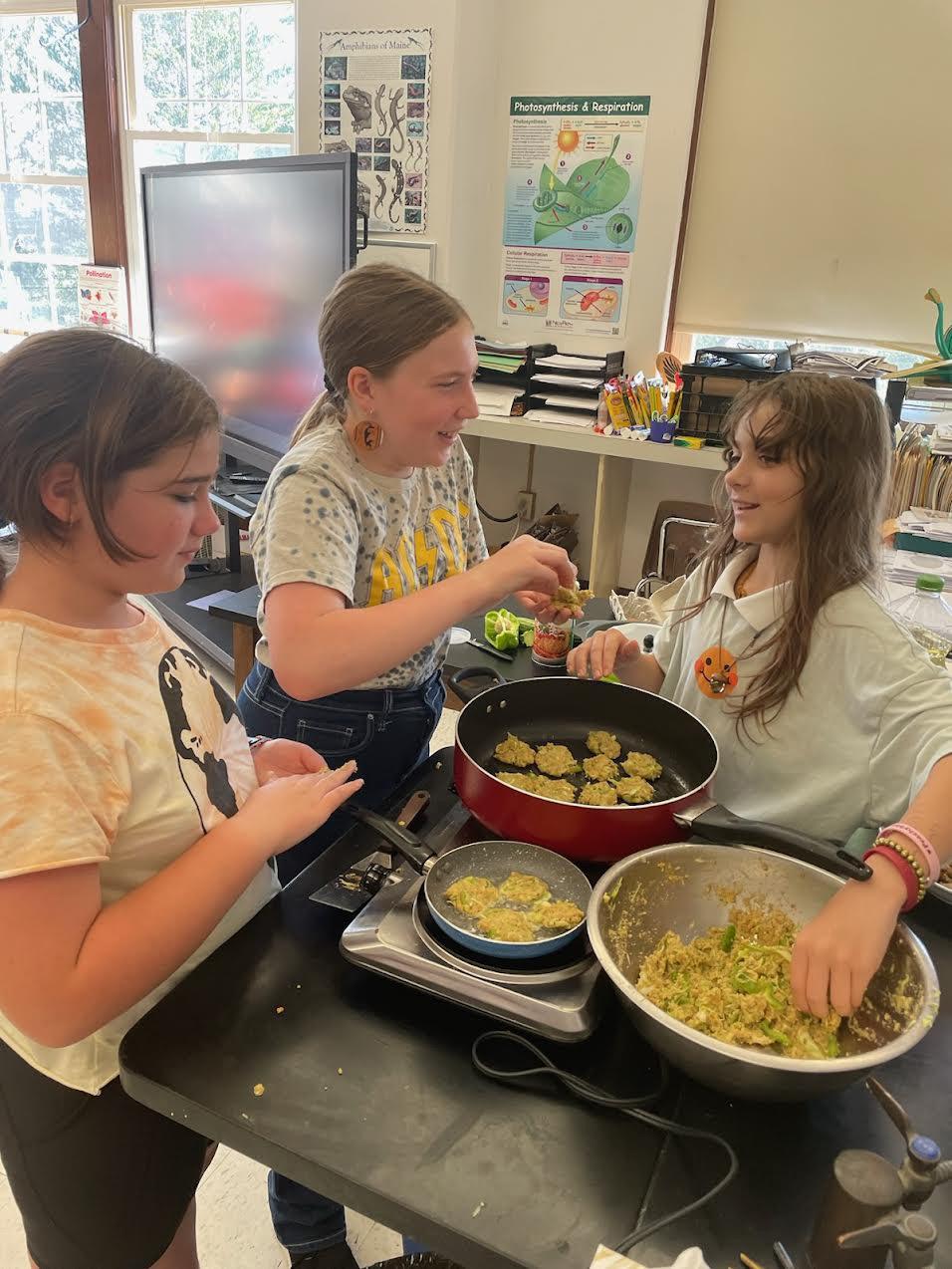
The middle school students are supportive mentors for the younger children. They prompt them to think about their observations in the garden and help them to learn concepts they have been studying in seventh grade science. The middle school students are always eager to meet up with the younger students in the garden and/or doing garden related activities. We are eager to continue this collaboration for years to come!
In addition to the garden use during the school year, the recently formed garden club works to care for the garden and will continue to make decorative artwork to add to the garden including painted stakes, signs and stepping stones. Students taking part in the summer enrichment program will also care for the garden and use produce to cook their favorite recipes including veggie nuggets!
23
Garden & Greenhouse
SACOPEE VALLEY HIGH SCHOOL
Stevie Dembowski
SEDOMOCHA ELEMENTARY SCHOOL
Stacy
Shorey
RSU 68 is so pleased to be able to have a greenhouse on site. We have had other greenhouses in the past but it is very windy on the hill that we have put them in the past. This time we put the greenhouse tucked between the end of the building and the fields hoping that it will be better protected. We have many staff members that work with students on how we can better take care of our land and provide for our families.
We have been working on a garden that has 20 fruit trees that we collaborated with the Retree US group last spring. We also have a fenced area that has seats, flower and vegetable boxes and a sundial. This greenhouse will allow us to be able to plant in the flower boxes as well as around the SeDo campus to help beautify it.
The money from this grant was crucial to helping get a new class off of the ground. We were able to purchase books that can be used as resources in the coming years. We were able to purchase additional reusable resources that will used specifically outside, such as tarps and paracord (to practice building emergency shelters in our outdoor living skills unit), and seeds (to support instruction in our plant science unit). We were also able to buy supplies that were used in the course of the year, to buy s’mores supplies (to support our outdoor living skills unit).

At the end of the year, I asked the students what their favorite parts of the course were and was informed by one student that she liked trying to grow things (in our plant science unit), and another said he loved getting to build a fire (which is when we used our s’mores supplies). All of them said that their favorite part of the course was having the ability to get outside be part of the class.
The staff that oversee the summer school program, our grade 2 teachers and the outdoor club are all excited about this opportunity for students. Our grade 2 students have a plant sale each spring. They grow the plants in their rooms. The greenhouse will allow them to continue to grow some of the plants that aren’t ready to be sold and can be used in the garden in the front of the school. Our summer school coordinator plans to have two weeks of exploratories and students can select activities that they are interested in. The gardening exploratory will allow students to work in the district gardens. Taking care of the plants in the greenhouse will be a large part of what they will be doing during those two exploratory weeks. One student noted that she loves seeing all the flowers that they grow around the school making it beautiful.
Again, we want to thank MEEA for providing this grant opportunity for our students. The greenhouse is going to directly impact 120 students that will be using it.
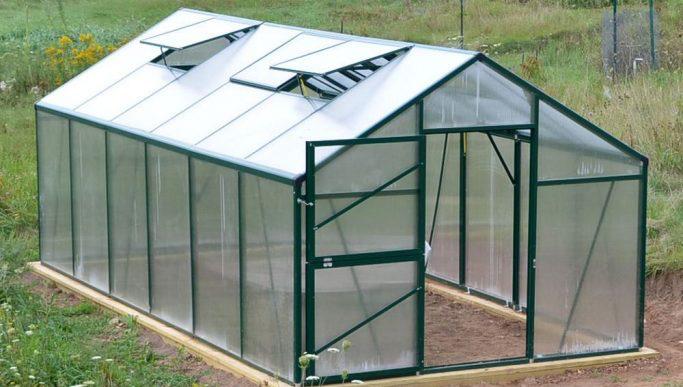
24 Maine Environmental Education Association Mini-Grants for Outdoor Learning
Garden & Greenhouse
SOUTH BRISTOL ELEMENTARY SCHOOL
THOMAS J. MCMAHON ELEMENTARY SCHOOL
Eliza Guion Debra Thibodeau
We were so lucky to be gifted a LettuceGrow hydroponic stand, but to actually make it work in Maine through the winter, we needed grow lights! Getting these lights enabled us to extend our hands-on and nature-based education into winter, when our garden is asleep. This year we grew strawberries and nasturtiums in the hydroponic stand, and used these plants and their life cycle to make hands-on connections to our science curriculum.

Our outdoor classroom work has been expanding over this past year. We expanded our school garden, added bee hives to our community, established new classroom areas on our playground and more. We acquired training for staff, and have more planned for fall PD. Our kids helped us to create a new idea that we are building over the summer. Our outdoor sitting areas were cleaned up after winter and have been utilized by faculty all during the spring. It has been fantastic.
Our kids beg to go outside more of the time. And I would consider us a school that has a lot of outdoor time. The kids who need it the most are able to learn in that environment, not just from a book, but by the building of raised beds, cleaning up the outdoor area, watering the gardens or tending to the bees.

When I asked my young bee keeper why the bees are important to our school, she said “the bees are fun to be around. They make our garden better. They make honey.” What else do the bees do for our school? They have taught us a lot about being a part of a community. We have read books about bees, drawn pictures of bees and had visitors that have taught us about bees. Bees have brought our community together in so many ways.
Students “planted” the baby seedlings in the grow stand and made observational drawings as they learned about plant parts and what plants need to grow. Later in the year as they learned about flower structures and pollination, students hand-pollinated our strawberries with q-tips and watched as they fruited. Other students dissected nasturtium flowers, examined flower structures under a microscope, and ate them when they were done! Diana Kruszewski, our STEM teacher, has loved having this stand in her classroom and using it to engage students. She said it made a special impact at parent-teacher conferences when parents became curious and she was able to use it as a jumping-off point to share about our garden and nature-based learning and get parents excited and interested in what their students are doing at school in STEM.
The other portion of our grant money was used to purchase the materials for a shed that is being built at cost by our partners at Lewiston Regional Technical Center! For teachers, the shed is truly the heart of the garden space, used to store curriculum materials, lesson plans, tools, garden amendments, and more! This shed will enable our upper grades garden space to be used with much more ease by our 4th-6th graders as well as our Special Ed and Day Treatment students. We are so lucky to have this partnership with LRTC and receive such a quality shed at-cost!
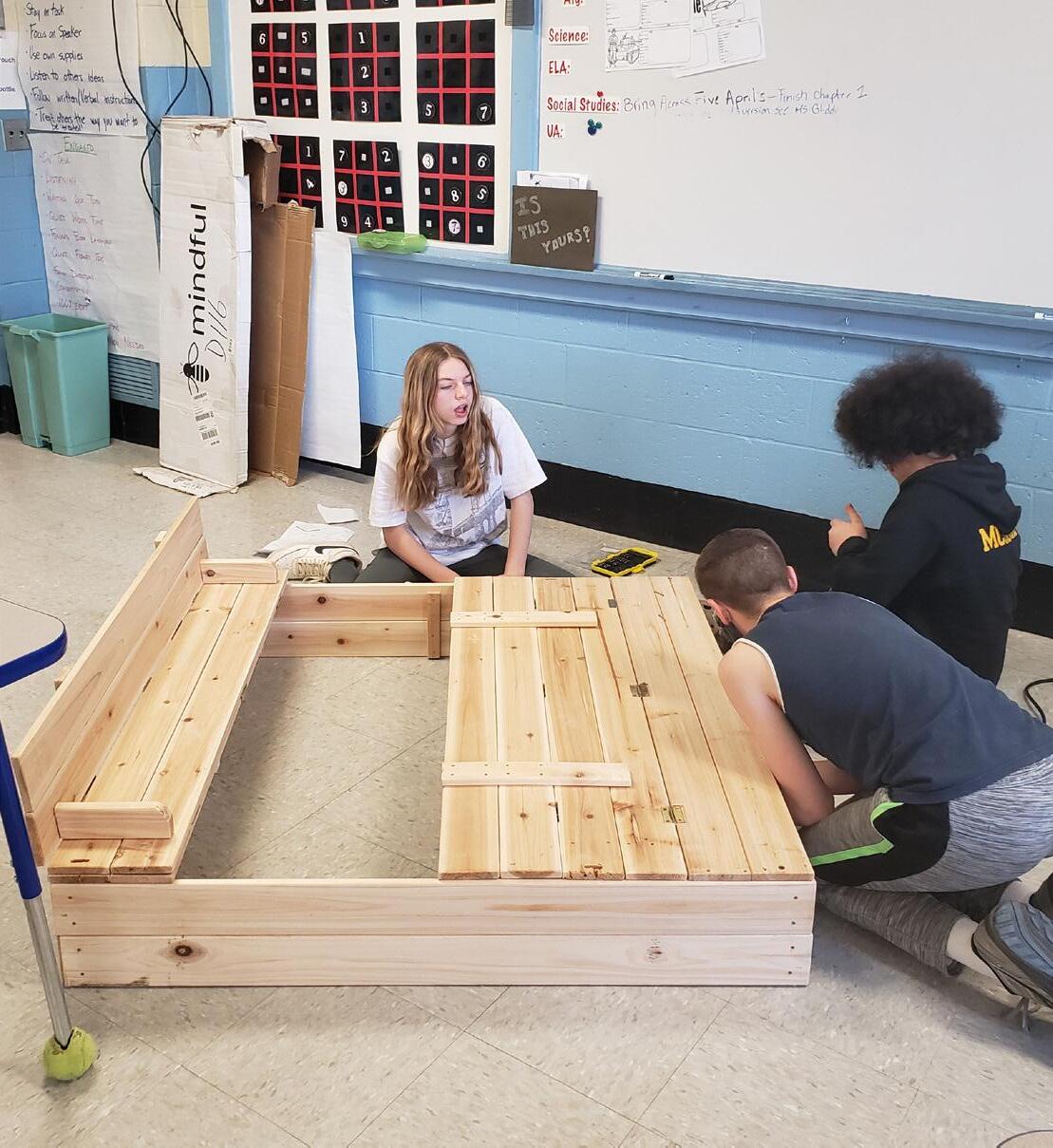
25
Outdoor Classroom Solutions

ASA ADAMS SCHOOL
Kim Oldenburgh
At Asa Adams School in Orono, funds were used to establish a new outdoor classroom space. Before creating this space, we had one small established area where teachers could take their classes, which meant we were limited as to when we could use it. A community member, Noah Charney, proposed a new space and we began exploring the space to see if it would be feasible for us to develop. The space has a natural beauty – wildflowers in the goldenrod meadow, red fruits on staghorn sumac, a view of large-trunked maples and birches across the open wetland – that feels quite apart from the nearby buildings because it is hidden in a basin. When exploring the space, we have seen woodcocks in the wetland, warblers in the shrubs, and wasp galls on the goldenrod. Weaving like a maze through the goldenrod and like tunnels through the sumac, the trails take students to secret places in the woods. We sought grant funding to establish trails, clear a meeting area, cut and place a circle of logs and benches and install picnic tables.
Once we received permission from the town to use the property, the work began. Community members cleared the meeting area, created trails, procured logs for seating, made picnic tables and installed a slate chalkboard. As soon as teachers and community members put the logs into place, students from first up to seventh grade started to explore, observe and experience nature right next to our school. Although we just established our space, classrooms
have already been enjoying the area. A middle school science teacher used it to do a lesson on ecological succession; another class enjoyed meandering through the established paths and playing on the logs while listening to Finding Wild by Megan Wagner Lloyd.
We love our new space and teacher Kim Oldenburgh says, “Students are more enthusiastic when they take their learning outside. They have a better sense of self, take more risks, and have more empathy for each other. I also see students that don’t typically work together in the classroom create and explore together outside.”
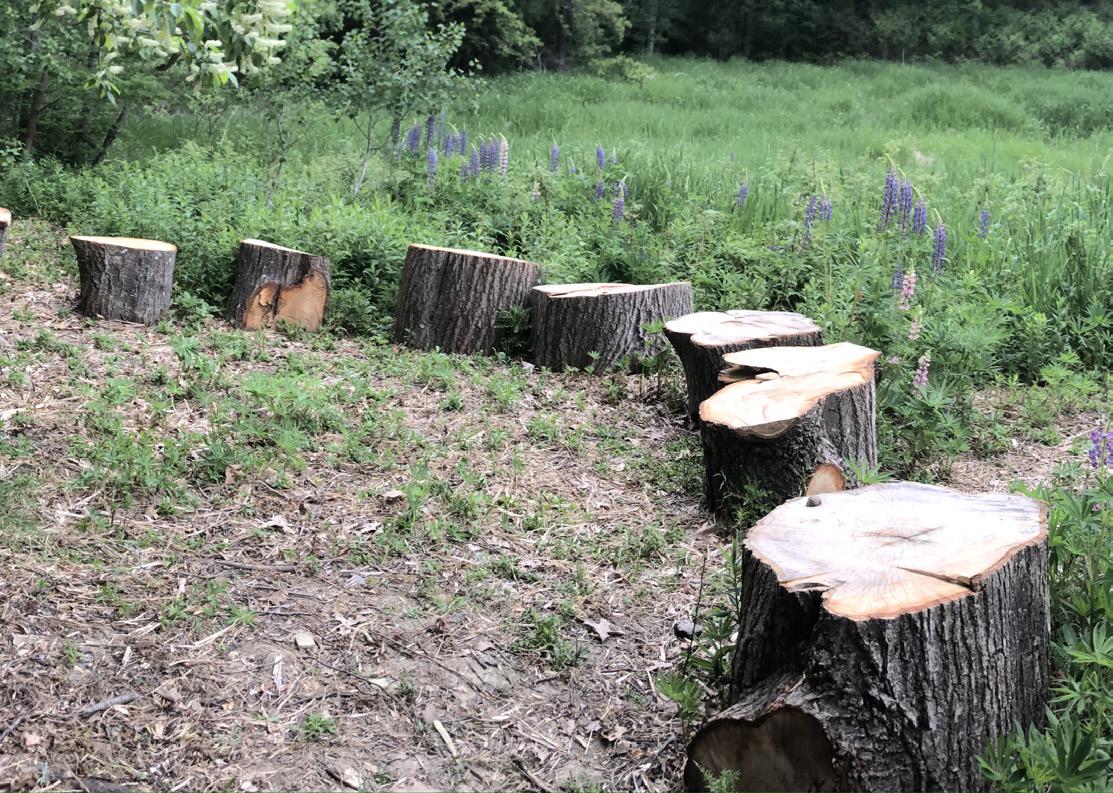
26 Maine Environmental Education Association Mini-Grants for Outdoor Learning
Outdoor Classroom Solutions

BREWER COMMUNITY SCHOOL
Bob Kumpa
Our outdoor classroom is planned to be ready for use by Extended School Year students over the summer of 2023. This outdoor space behind the school will be nestled amongst our school garden. The space will include three picnic tables, two benches, and a book table, all built by Brewer High School students. Additionally, there will be a rolling whiteboard stored in a nearby entryway that will allow teachers to conduct full lessons outside.
This new learning space will be used by any and all pre-K through 8 classes beginning in September. Science teachers are excited by the prospect of being able to do the “classroom” portion of outdoor lessons outside as well, removing the need to transition into and out of the school during a single lesson. Reading and writing students are excited about the ability to work outside, gaining inspiration from the environment. Teachers who take classes outside are looking forward to having a formal assembly area where whole group learning can still be in a structured environment while still being in the great outdoors. The fact that this new learning environment sits among our often neglected school garden also has teachers planning science and art lessons involving replanting the garden and studying various plants.
This outdoor classroom is also located close to our sports facilities. This means that many teams will be able to assemble and hold meetings in a comfortable environment close to where they practice. No more huddling up to sit on wet grass while the coach goes over the day’s plans!

Finally, school therapists will now have a quiet, calm, and beautiful location to take students who need a break from the occasional chaos of school. This outdoor classroom can serve as a natural meeting place for students who need a serene environment to be their best.
BUXTON CENTER ELEMENTARY SCHOOL
Amanda Blunda
The MEEA mini-grant funding supports students and their connection to nature by making student dream projects a reality. After a bear was seen on campus, student curiosity soared and the wish of having game cameras to see what other wildlife we share our campus with was born. Students engaged in rich discussions regarding our local ecosystem and the ideal places to install cameras to capture the most wildlife. In learning about pollinators and their importance, students wanted to create a space to support pollinators and create a learning space that was accessible for all school community members.
The MEEA mini-grant funding allowed for these student projects to shift from a dream to a reality. The funding also helped students see that their ideas and voices are powerful and they can create learning spaces and opportunities for themselves and other students. I have no doubt that the MEEA mini-grant funding helped support these students in becoming life-long stewards for the world around them and advocates for their learning. Another portion of the grant funding allowed for the purchase of 45 magnifying classes, which will be available for all classrooms to use to help support making observations, both inside and out. Magnifying glasses always seem in short supply and this funding is providing students with a tool that can offer a new perspective in viewing the world around them. Finally, the sports cushions will allow for students to be more comfortable during their outdoor learning.
27
Outdoor Classroom Solutions
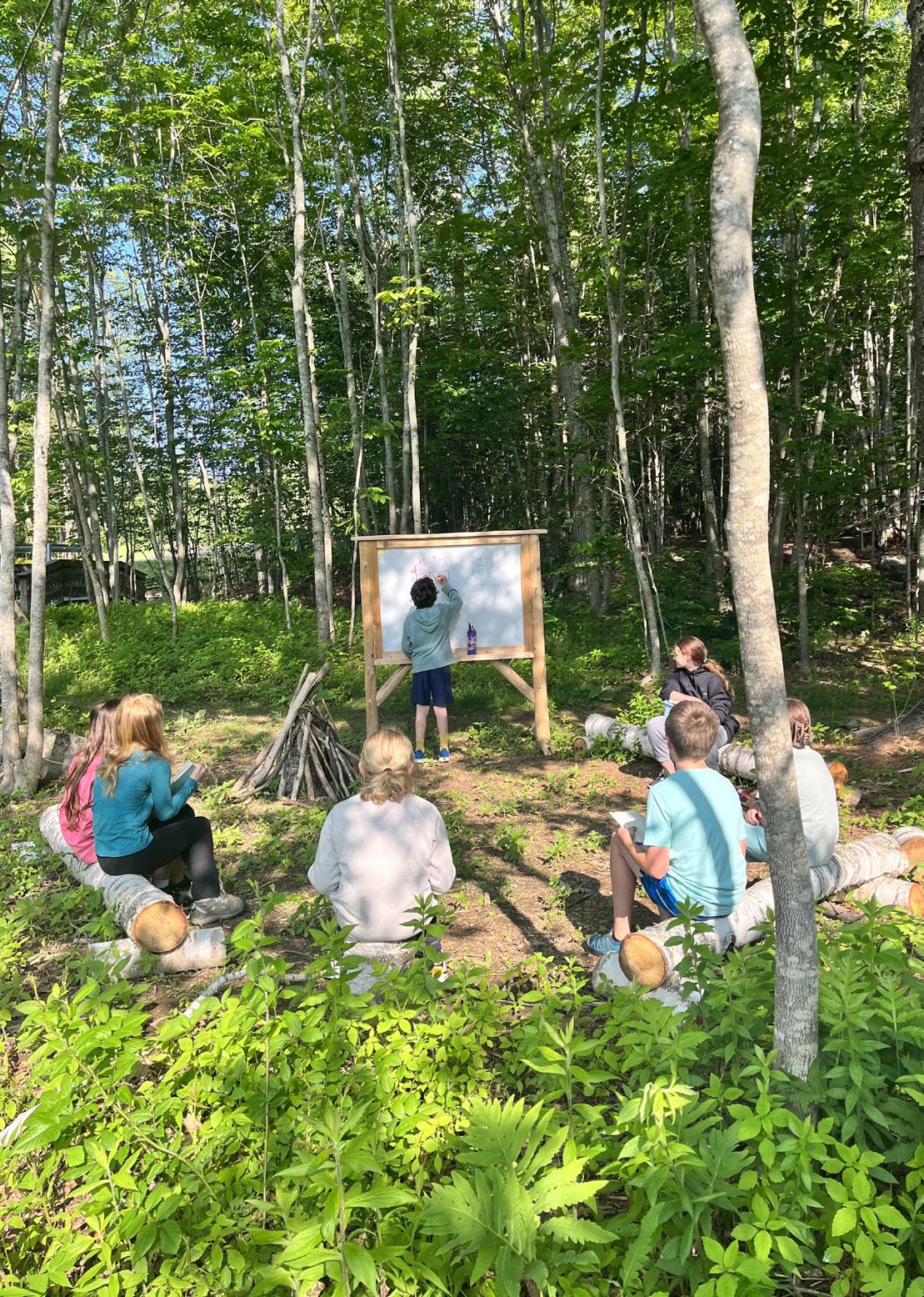
CAMDEN-ROCKPORT ELEMENTARY SCHOOL
“From the big picture, we’re really committed towards a shift to more outdoor learning. Related to that is my appreciation for staff who have embraced teaching outdoors and pursued grants, but also for organizations that have partnered with us. Maine Environmental Education Association is one of our primary partners. We try to keep students at the center of all of our decisions, and this opportunity from the MEEA does just that,” commented CRES Principal Chris Walker-Spencer.
Students have embraced any opportunity to learn outside. “Learning outside is very fun because it feels good to be open in the wild and it helps me learn to be out in nature” says third grader Arthur Senders. Third grader Emmett Sowder added, “It’s nice because it’s really nice to be outdoors with the wind and the sun.”
Camden-Rockport Elementary School (CRES) is so grateful to have been awarded a MEEA mini-grant for the 2022-2023 school year. With funding from this grant we bought three free-standing, moveable outdoor whiteboards using weatherresistant materials and cedar. “These whiteboards have made it so much easier to teach a whole group lesson outside,” third grade teacher Lynda Pierce stated. “A change of environment can lead to increased engagement. You never know what will spark a child’s creative juices from having a writing lesson outside.”
“We actually designed a new outdoor woods classroom around a new dry erase board,” first grade teacher Alison Babb explained. One classroom features flexible seating options, such as moveable benches and Adirondack chairs so that the class can be oriented toward the dry erase board for whole group instruction and later move into smaller breakout seating arrangements.
“Getting children learning outside builds an appreciation and a love of nature that will last a lifetime, building a foundation for becoming lifetime stewards of our planet,” said third grade math teacher Jenny Gold as to why she strives to utilize the new outdoor classrooms at CRES.

28 Maine Environmental Education Association Mini-Grants for Outdoor Learning
Sarah Scordino
Outdoor Classroom Solutions
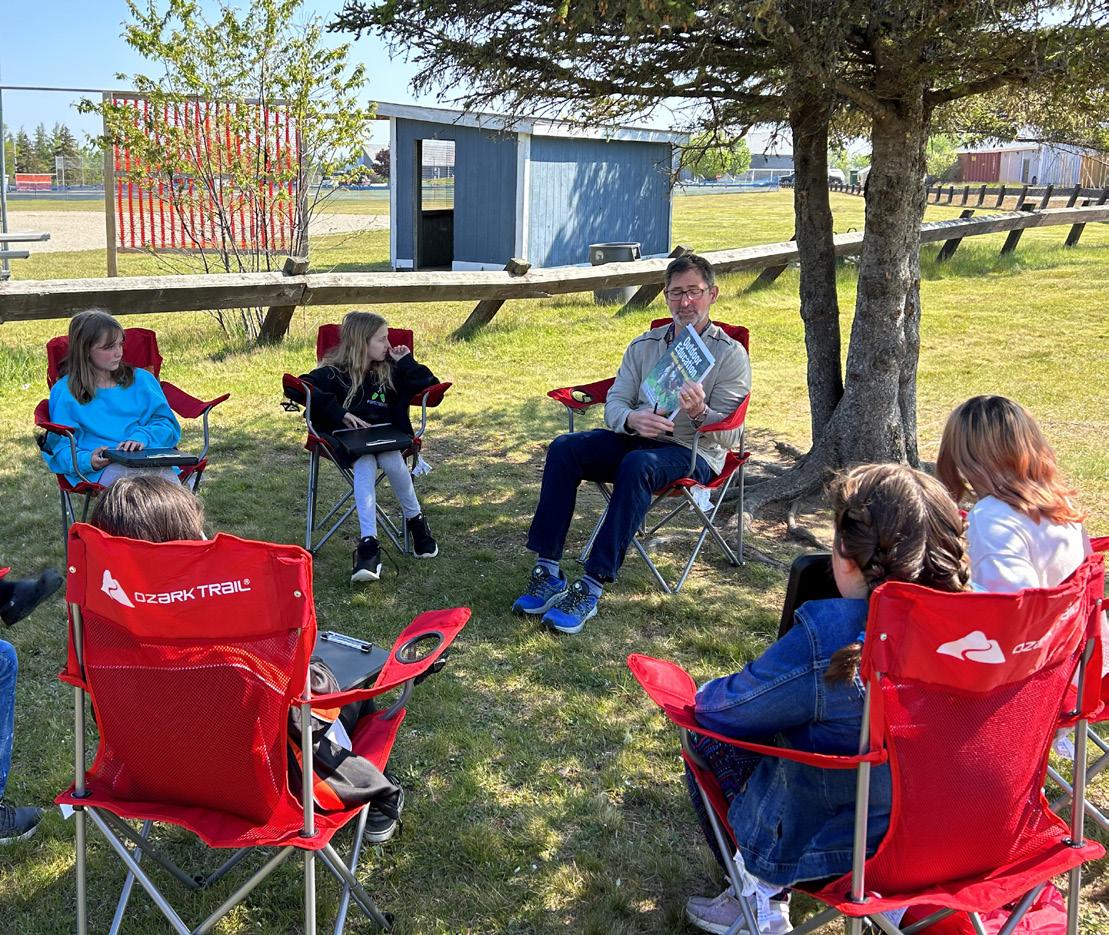

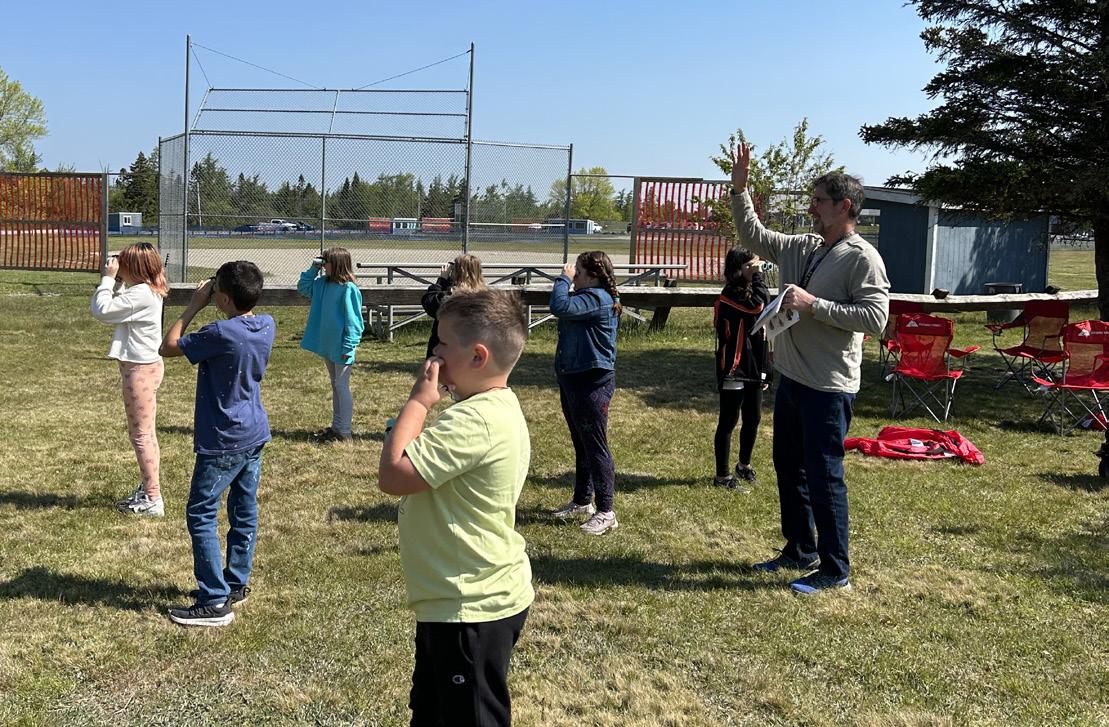
GEORGE STEVENS ACADEMY
Megan
Flenniken
One factor that prevents us from being outside more is having outdoor learning spaces that have some resemblance to a traditional school setting. Not that we want to recreate a traditional school setting, but it is important to have some features that are similar. It can be quite hard to ask students to write notes, sketch and fill out data tables while they are standing up balancing a clipboard. With the funds from this grant, we were able to build 11 Leopold benches which now makes a site on a local conservation trail more accessible and equitable for students in our science, experiential education and drama programs. At this beautiful spot in the woods, we are surrounded by a mixed woods forest and there is a mosscovered rock outcrop that forms a natural back drop for an inspiring class setting. A simple bench allows students to feel settled while in nature and they are able to focus more easily on the task at hand. It will be wonderful to use this site in the years to come! Thank you for your generosity!
JONESPORT ELEMENTARY SCHOOL
Heidi
Fairbanks
Jonesport Elementary School students are excited to take their learning outdoors. The Maine Environmental Education Association grant they received allowed the school to purchase items to make outside learning more comfortable and effective. The 3rd grade math teacher, Mr. Reese, stated, “I have never seen these children this excited to learn about perimeters and areas. Being outside seems to have opened up their thinking and allow them to broaden their thought processes.”
The purchases from the grant have given teachers at Jonesport Elementary School different avenues for presenting materials to their students outside of four walls. Not only has it opened up their environment, it has seemed to open up their minds to new ways of thinking and seeing things.
29
Outdoor Classroom Solutions
KATAHDIN ELEMENTARY SCHOOL
Brittany
Arbo
LYSETH ELEMENTARY SCHOOL
Ellen
Handelman
Thanks to this MEEA grant, I was able to create a well equipped outdoor Art Annex Art Studio. With the grant funds, I was able to purchase a storage shed and storage closet. The grant funding also allowed me to host visiting artists to integrate the arts with grade level teachers and their students, as well as teach art outdoors.
The Katahdin Elementary School playground in Stacyville, ME magically transforms into a winter wonderland from the months of December through early April. As the snow accumulates, so does children’s excitement as they watch the snowbanks around the school grow to great heights. Some ascend as high as 10 feet or more at winter’s peak. Stacyville averages 90 inches of snow per year, and each snowstorm brings new fun and play opportunities. Children who attend KES know that they will be spending at least an hour or more a day outside learning, playing or exploring.
We are thankful for the funds we received from MEEA to help us add to children’s fun and creativity in the snowy months. The funding provided us the opportunity to put more snowgear equipment in the hands of children. With our funds, we purchased new, quality snow sleds and shovels for students to use at recess. This funding served over 130 students at Katahdin Elementary School. At recess, children could be seen climbing up and down the giant snowbanks, positioning sleds, and waiting for friends to hop in and join the fun. Children could also be seen towing one another across the playground as sounds of laughter filled the air.
Cathy Duffy, who teaches Pre-K said, “The children love sliding on the big banks of snow with their new sleds, making snow forts with the new shovels and exploring!” Beth Somers, who also works in PK, said this about the new sleds, “We read Ten On the Sled today, then we got the chance to head outside to try our own Ten On a Sled. We didn’t quite get 10, but they sure had fun trying!” The sleds purchased through MEEA funds were used at recess, and also connected to the curriculum and read alouds unfolding in the classroom.
It is wonderful to see how simple toys such as sleds and shovels can be used in multiple ways. Through the winter, children could be seen playing, creating, communicating, and collaborating as they used the new gear.
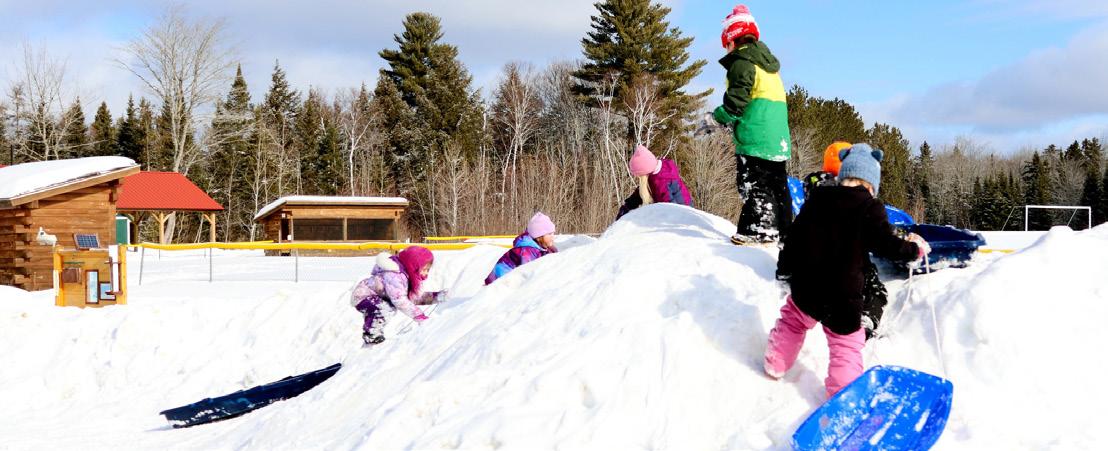
Lyseth Elementary School Third graders worked on a project in their Portland Public Schools Wabanaki Studies Unit called Take Me to The River. SidexSide drama teacher Gretchen Berg worked with students to create a physical theater performance about the life cycle of salmon.
I invited Nate Garret, a Maine Gyotaku artist, to teach students about his art form in our newly created Outdoor Art Annex. Nate worked with all third graders to make fish prints. Students worked outside in the newly shedded Art Annex Courtyard to add this visual arts component to the students River Unit. By stressing the importance of the four R’s in the Wabanaki Studies Curriculum: Humans’ relationship, respect, responsibility, and reciprocity with the ecosystem, students learned to use real fish to make art.
The students were really proud of the way their fish prints turned out. Students were thrilled to show their families the ways they used red, blue, and yellow ink to paint a real fish and transfer that fish’s details onto a piece of special paper, that when hung on the window, allows for light to diffuse through it and show off the print.
It has been a pleasure and thrill to have classes come outside to create art.
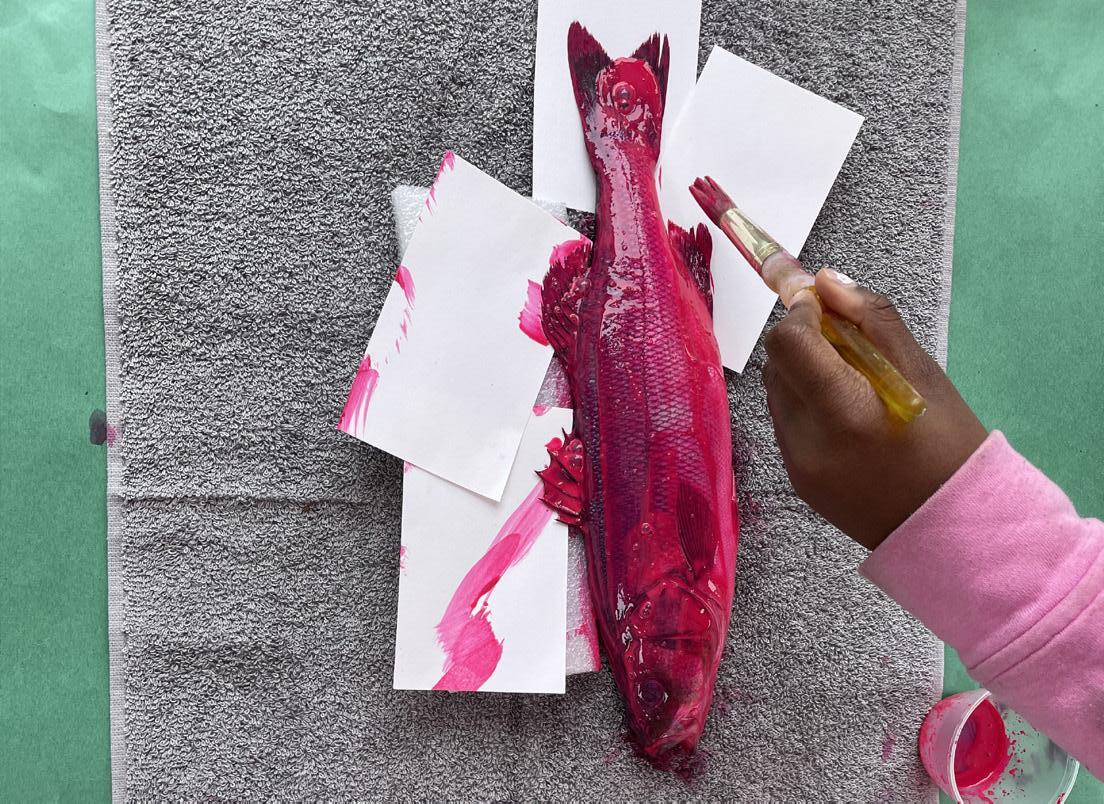
30 Maine Environmental Education Association Mini-Grants for Outdoor Learning
Outdoor Classroom Solutions
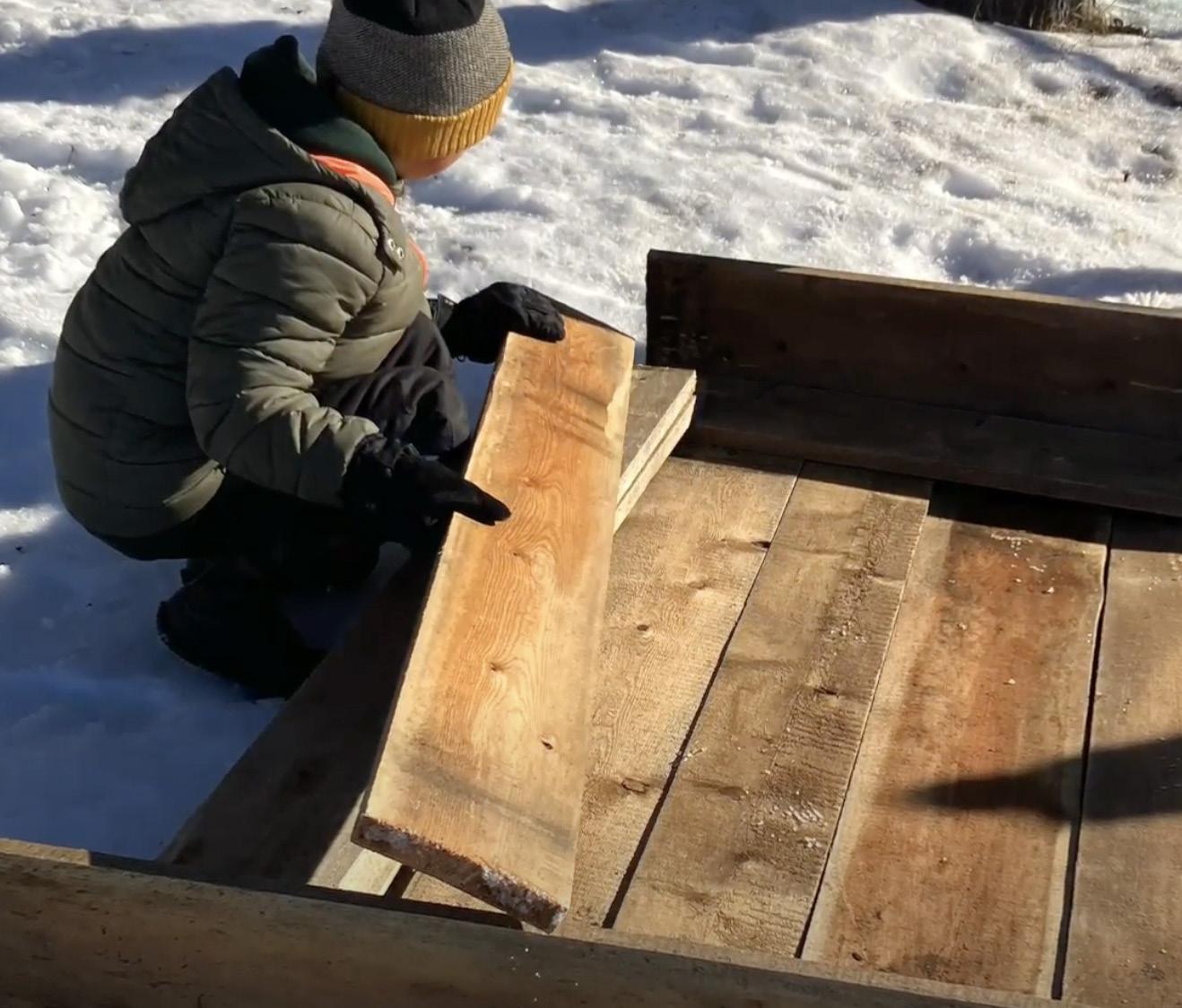

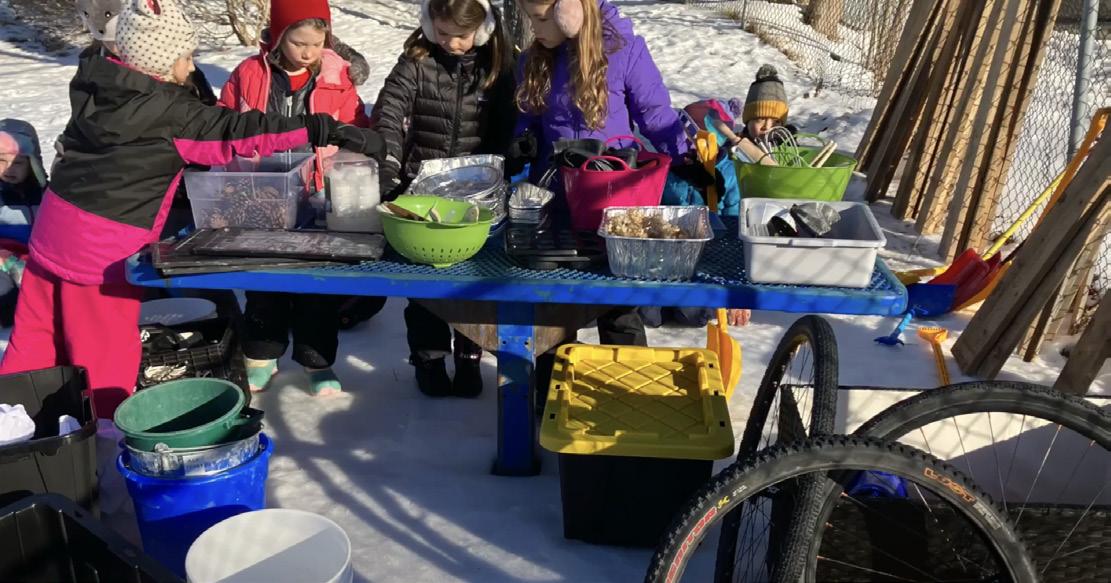
MESSALONSKEE MIDDLE SCHOOL MOUNT DESERT ELEMENTARY SCHOOL
The goal for the funds from the outdoor learning grant was to provide active, outdoor opportunities to a group of students who can have challenging behaviors in class and at the end of the day study hall. This group, formally known as “Ripa Rascals” completed projects this spring together. Other students on our team also joined in to help. Funds were used to purchase soil, seedlings, seeds, gardening tools, and art supplies for nature based art activities. We spent time outside preparing the legacy garden for the incoming 7th graders, creating a new pollinator garden adjacent to the greenhouse, reinstalling our floating islands, and in the future, supplies will be used to create art at the gardens and the pond habitats. The funds allowed for active outdoor time, team building, and nature based education.
From Alexis Glidden, LCSW: Ripa’s Rascals is an important and innovative approach to engaging at-risk students within our school community. Students who are part of this group struggle to complete classwork, particularly in areas that are not of interest to them. Prior to the implementation of The Rascals, these students were not on-task during the study hall portion of our day. This impacted not only their learning, but also the learning of others. Mrs. Ripa opts to have all of these students in her classroom. She incentivizes work completion during the beginning of the week, not with electronics or candy, but with service learning projects that provide beauty and increased hands-on educational opportunities to our school community. The Rascals feel more connected to school, pride in their contributions, and valued by their teacher. They are encouraged to do these projects that demonstrate value for their strengths, that may not be appreciated or apparent in the mainstream classroom. Students in the program appreciate Mrs. Ripa’s unorthodox approach and state that she is a teacher who understands them. This has created a learning environment where mutual respect between these students and Ms. Ripa is felt on a deep and meaningful level.
These funds were used to create stations around the school. A weather station was purchased, a rain barrel for water collection to be used in the garden, and wood was purchased for students to use as outdoor blocks. These stations serve as purposeful and creative spaces on our school campus. This grant was submitted by a small group of 8th graders who wanted to provide fun and useful outdoor materials for the younger students in our school. They asked classroom teachers, our school counselor, the behavior coordinator, and recess staff. Based on that feedback, the 8th graders decided to submit the grant for small stations that can be used during recess and garden time. They were happy to learn that the materials were very useful for the 2nd-grade collaborative activity where students used problems solving and communication skills to build a shelter.
31
Sarah Dunbar Amanda Ripa
Outdoor Classroom Solutions
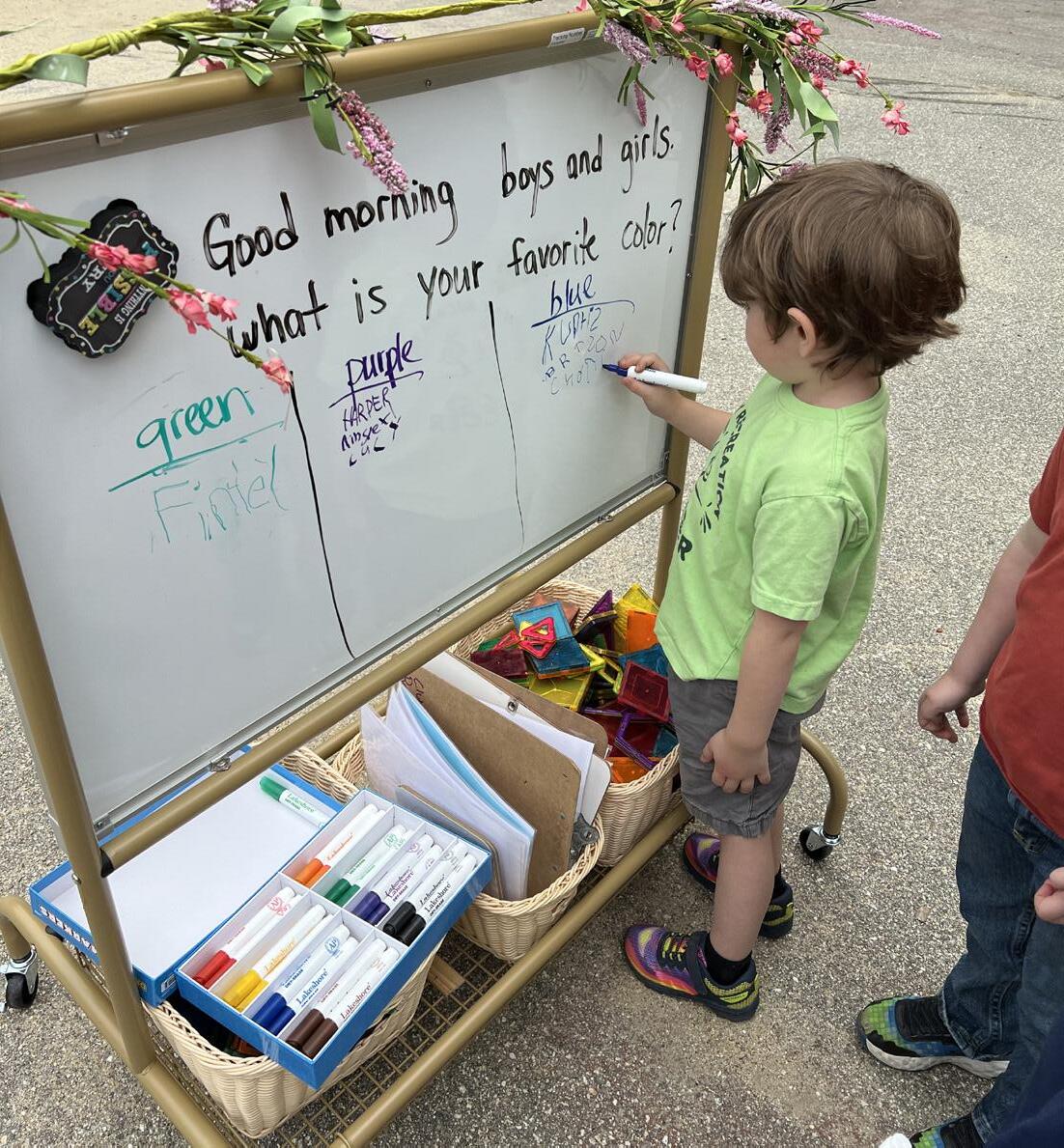
OTISFIELD COMMUNITY SCHOOL
Sarah Timm
The teachers at Otisfield have been really eager to find new ways to incorporate their existing school garden and greenhouse into teaching opportunities. It seemed like a natural solution, as their Outdoor Learning Coach, to help them create an established outdoor classroom beside their garden space. This will allow students in grades PreK through 6 the opportunity to have hands-on learning experiences that relate to plants, pollination, and other life science topics.
Another space that teachers were hoping to make more consistent use of is the nature trail. A beautiful trail winds through the woods beyond the school and includes space for teaching. This space was created years ago by a beloved teacher who has since retired and the space had become somewhat neglected. The second canopy will reestablish this space as a working outdoor classroom so that teachers and students can take full advantage of all that it has to offer.
Otisfield Community School, its teachers, and its devoted principal are truly committed to outdoor learning and have been very creative in finding ways to take teaching and learning outside. For example, the fifth grade participated in a Valley Forge reenactment in their woods this past spring. A “living museum” was on display for the rest of the students to experience. The second grade created a hammock reading grove as a part of a service learning project, and they funded and maintain the space for their schoolmates. The PreK regularly tends the school garden and has built their own outdoor classroom, complete with mud kitchen.
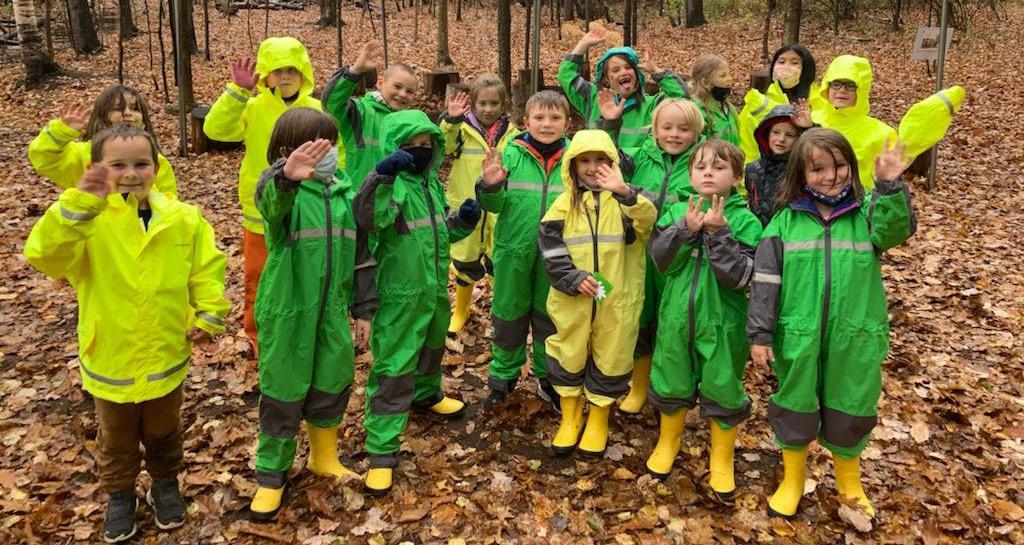
These teachers and their students will now be able to make regular use of the two newly established outdoor classrooms so that they can make learning outside a part of their daily routine. This will help further the efforts to make nature a part of their school culture.
I teach Pre-K at our school and embrace outdoor learning. My students are so excited when I bring them to our outdoor classroom. We created a new space this year and built-in boundaries and an inviting entrance. My students also built a large Fairyhouse and this truly sparked their interest in outdoor learning. I‘ve been working with an outdoor coach to enhance my outdoor classroom and discussed what could make our classroom unique and engaging for all students. I truly have a passion for outdoor learning and want my students to thrive in nature while learning across all content areas.
The easel supported literacy and math activities. The kitchen allows them the opportunity to explore nature through dramatic play. My kiddos seek sensory play and it will also support them with cooperative play. As you can see through the faces of my students, they truly loved being outdoors and learned through their play. I truly noticed a difference in their demeanors. Once I took my students outdoors to learn they started focussing more and being present.
They really enjoyed the story reads outdoors where they could act out the story and make connections. I brought out materials such as pieces of bark, trees, branches, and plastic
32 Maine Environmental Education Association Mini-Grants for Outdoor Learning
Outdoor Classroom Solutions

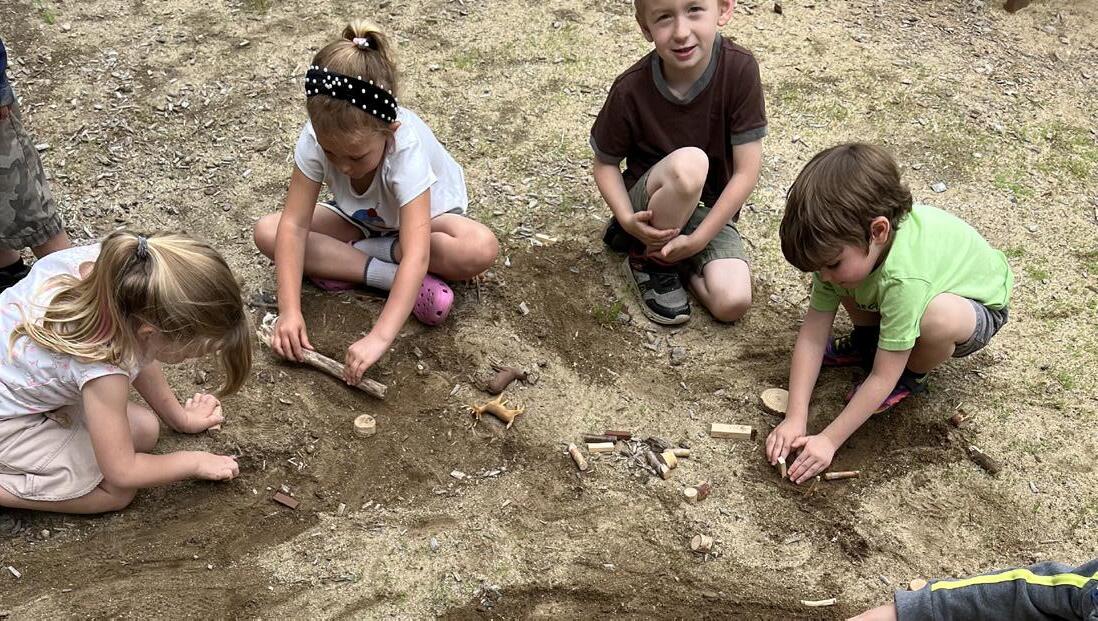
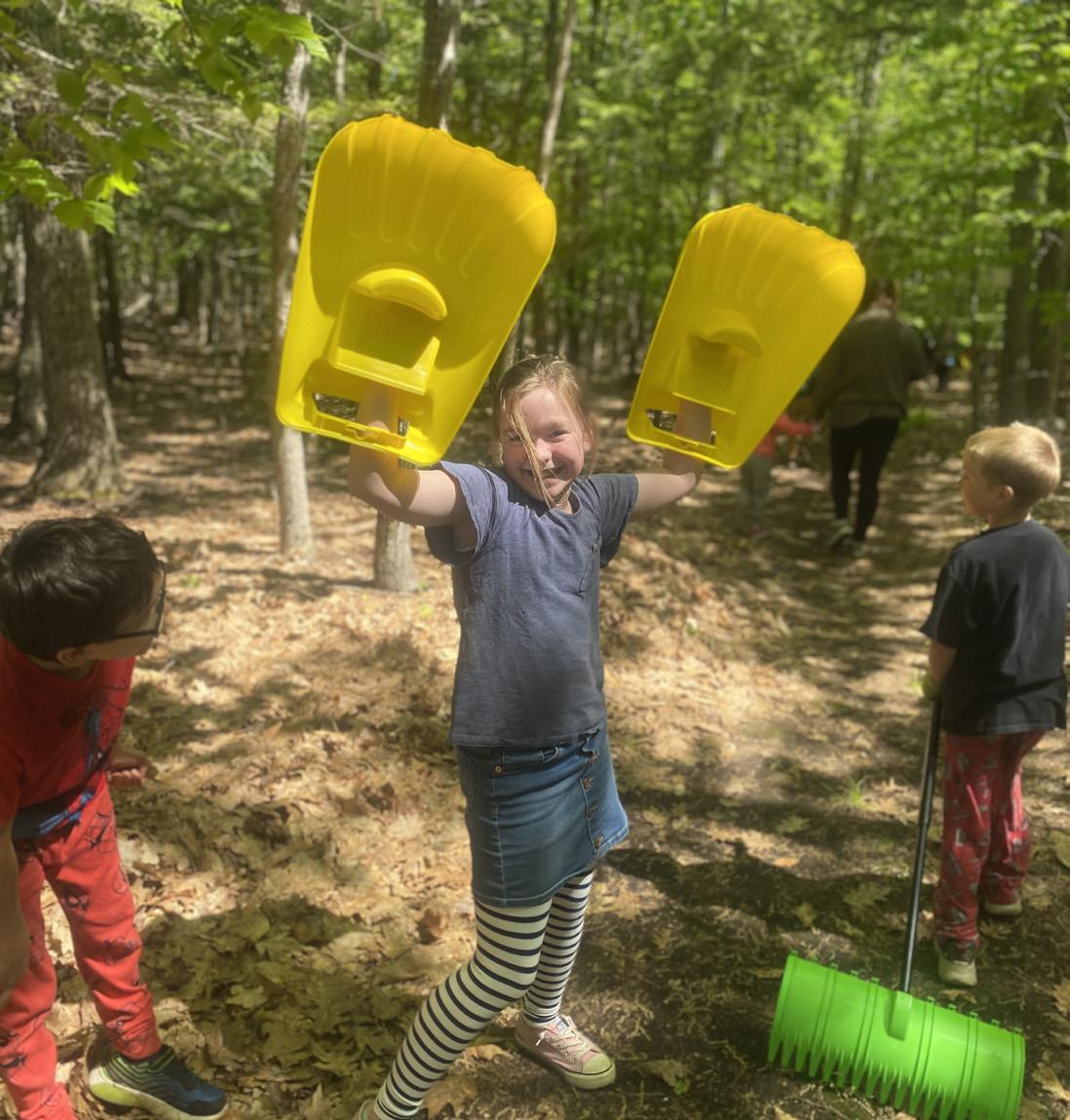
OTISFIELD COMMUNITY SCHOOL
Jessika Sheldrick
animals to use as props in the story read of “Racoon on His Own.” They made a swamp and acted out the story.
The items that I purchased were also used by other classes during recess time I saw other students using the outdoor kitchen and the tables. I had students coming to my classroom saying “Thank you for letting us use the kitchen, I loved making mud pies and playing with my friends.” I also heard from other teachers that they were excited about the grant I received and might apply for it next year. I truly want to say thank you for supporting my class and engaging them more with outdoor learning opportunities.
One of the positive outcomes of Covid has been the renewed interest in outdoor learning. So much research is coming out about the power of outdoor learning for students mental, social, and academic health. So anytime we can get support to elevate the existing spaces we have, it helps the program sustain for more than a short period of time. We have been able to use the tools to clean the trail and start setting up our new outdoor classroom. By having lots of tools, many different students are able to be part of the solution. They love the opportunity to work together, collaborate, solve problems, and ultimately help make our school a better place to learn.
Because more students and staff are able to help clean, the time can be used for growing our opportunities. So staff and students hope to use the “extra” time to create a story walk on our nature trail. We also cleared an area to add two ninja style equipment pieces for the students, and have cleared an area for forest play. The equipment has just been such a welcomed addition to our programming.
I think it is also special because we have been able to see students feel empowered to be leaders. We have a 6th grade child who has is absolutely asserted himself as an outdoor learning expert and helps our custodian regularly keep the grounds safe. We have a 2nd grade student who has just received an award for being a leader when it comes to setting up our hammocks for the reading grove. Outdoor learning is exposing leaders who we might not have seen without outdoor learning. “It is important to learn about nature and animals. If I learn about this now, then I will better know how to take care of the world.” Parker Poole, Grade 3.
33
Outdoor Classroom Solutions



POLAND COMMUNITY SCHOOL
SACCARAPPA ELEMENTARY SCHOOL
Emily Bisson Debbie Conley
“Let Nature be your teacher”, William Wordsworth. If you create the space, they will come, and they have. This is just the beginning for us at PCS. We have teachers going to Outdoor trainings, the Ecology School and Nature based learning. It is an exciting time to see educators value getting outside with students.
I have learned that it does take a lot of work and there are many obstacles, administrators need to be educated, janitorial staff need to be involved, there needs to be solutions so people do not look at it as more work. We are taking baby steps but the steps are getting bigger. Tonight we are meeting to create a program to teach teachers the value of getting outside!
“Of all the steps you take in life, make a few of them be in dirt.” John Muir. Our baby steps are creating paths for teachers to take students in new and exciting directions that create life long scientists and lovers of nature and the outdoors.
When we applied for this grant, we were playing in a courtyard with a paved path, some wood chips, some boulders, a picnic table, and small rocks around the edge for drainage. Some small toys that the teachers had gathered were out there in a box, but for the most part, students entertained themselves with climbing the rocks and digging in the wood chips. It was not ideal. We wanted to add more sensory exploration options and play choices to the space. The benefits of this project have been greater than we could have ever imagined. One thing that has stood out is the increase in collaborative and associative play the students have been participating in! The seesaw particularly has motivated students to reach out to their peers and ask them using their preferred method of communication to join them on the seesaw in play. It has also increased interaction with staff, asking for staff to pull the sled with them in it or help them rock the boat. Our mainstream students also have the opportunity to join in, creating a nice inclusive environment where everyone can play safely. We are so thankful for this opportunity to make a positive change in our students lives. As one of our FLS teachers said, “Look at those smiles! That makes it all worth it!” Thanks for helping us improve engagement and student happiness.
34 Maine Environmental Education Association Mini-Grants for Outdoor Learning
Outdoor Classroom Solutions
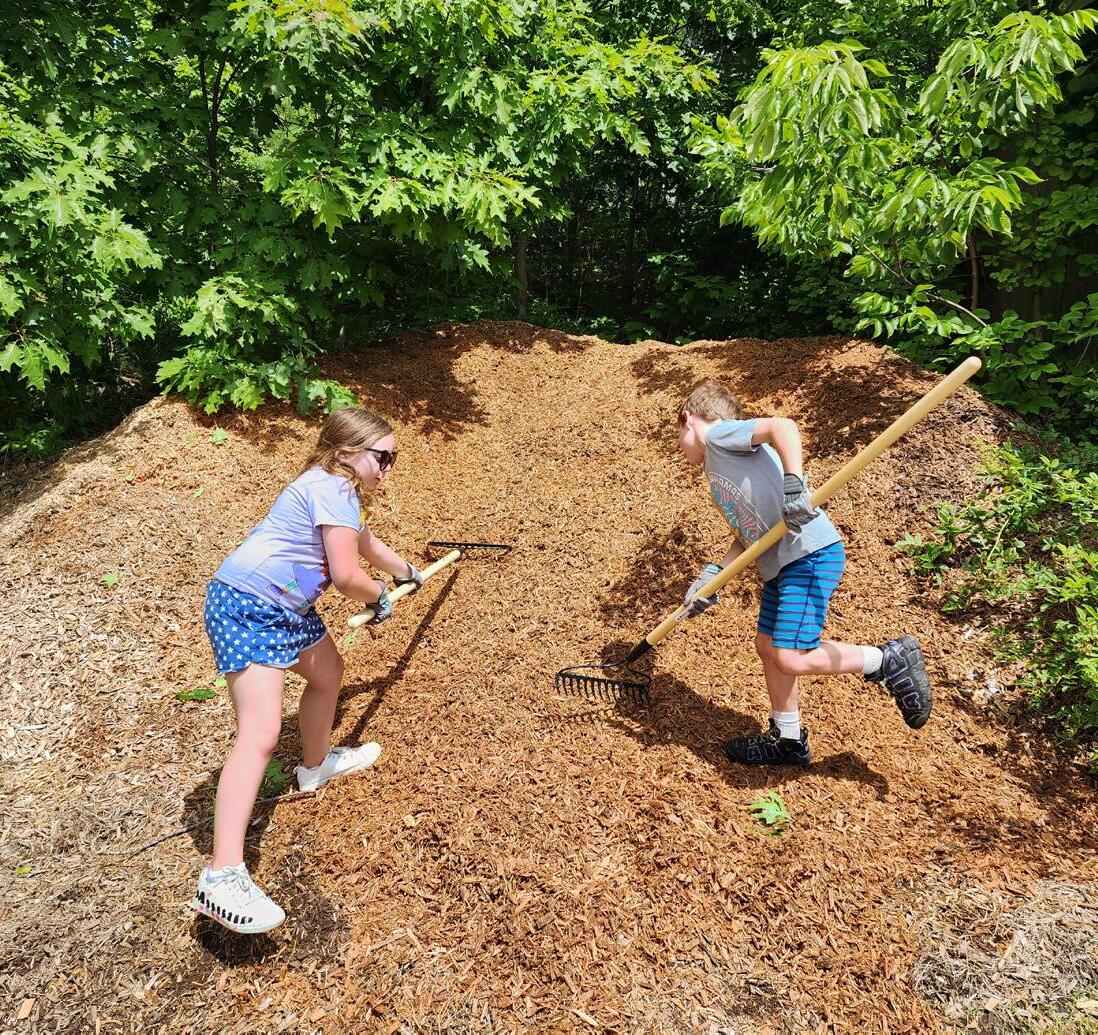
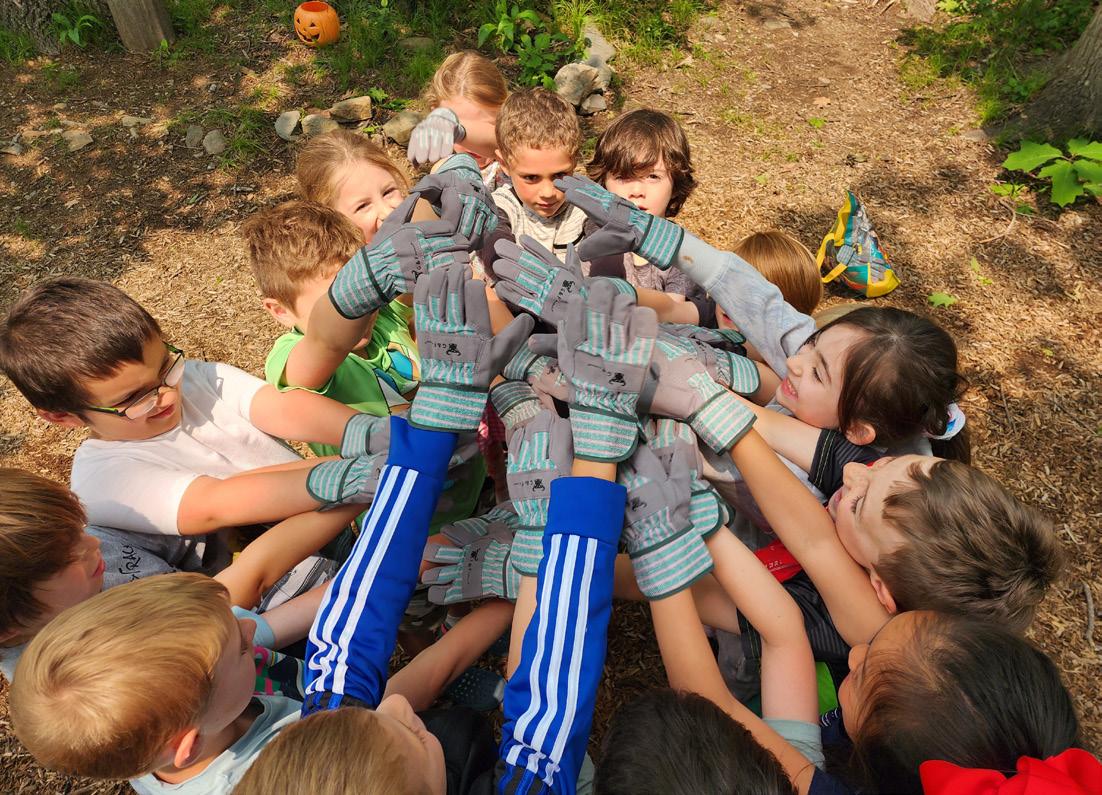

VILLAGE ELEMENTARY SCHOOL
Glenn
This year the money from the MEEA mini grant was used to purchase supplies to help maintain the outdoor learning environment and to support students learning when maintaining the space. With these funds we were able to purchase landscaping tools such as rakes, shovels, and hand tools in both adult and children sizes (associated safety equipment, such as child size work gloves, were also purchased). We were also able to purchase a wheelbarrow (adult sized) and a shed in which to store outdoor maintenance supplies in a secure location. We were also able to purchase supplemental rain gear so that students can be outside learning even when the weather isn’t the best even if they did not come to school prepared for the weather.
These supplies will not only be useful in maintaining a safe outdoor learning environment but will also allow students to be a part of the maintenance routines of managing such an area. This will help them to better understand the importance of such maintenance and help students to build a stronger and more personal connection to their classroom. By including students in the general upkeep of the outdoor classroom they will be encountering more spontaneous incidental learning opportunities, build more personal connections to their environment, and gain valuable life skills that will help prepare them for further learning at the next level.
The supplies did arrive late in the school year but already the impact of said supplies have been felt. The safety gear and equipment has allowed students to participate in the much needed decommission, clean up, and organization of the large group project in the main instructional area. I have also been able to use some of the adult sized equipment purchased, such as the electric weed wacker and extendable loppers, to help clear up overgrown trails and cut back over reaching thorn bushes and hanging limbs so that the classroom can be a safe and welcoming place for everyone to visit and learn.
35
Candra
Outdoor Recreation
CENTER DRIVE MIDDLE SCHOOL & DEDHAM MIDDLE SCHOOL
Gil Maxwell
Orrington and Dedham Schools decided to implement a new Outdoor Education program at their Middle Schools.The program had to be built from the ground up. Luckily, the schools invested some money and I was able to build a Challenge Course at each school. The students had something to use and learn with for the first few months of school. But, what would happen when everything was covered in snow and ice? Lessons that I had planned were hinged upon the students being able to maneuver around the surrounding woods and school grounds. That is when Danielle D’Auria informed me that the Maine Environmental Education Association had mini grants available. My schools were awarded 2 grants totaling $2,500 and we used the money to purchase snowshoes and totes to store them in. Only about a quarter of the students had ever used snowshoes before, so it took some time teaching them how to put them on correctly and how to walk with them. The students were amazed at how the forest was a completely different world in the winter and how the possibilities of travel opened up. I had many students tell me they went home and asked their parents for a pair of their own snowshoes. One family shared with me that they went out and bought snowshoes and went on adventures all over Maine.
The exploring didn’t stop there, we used the snowshoes to access the woods around our school to learn about survival skills such as starting primitive fires and building survival shelters. During these lessons, students that are usually disengaged in the classroom were enthusiastic and leaders among their classmates. Some of the quietest students became the most vocal and active in their learning. Without the grant from Maine Environmental Education Association, we would not have been able to go as far as we did with our lessons and plans are in place to expand the outdoor learning even more next year!


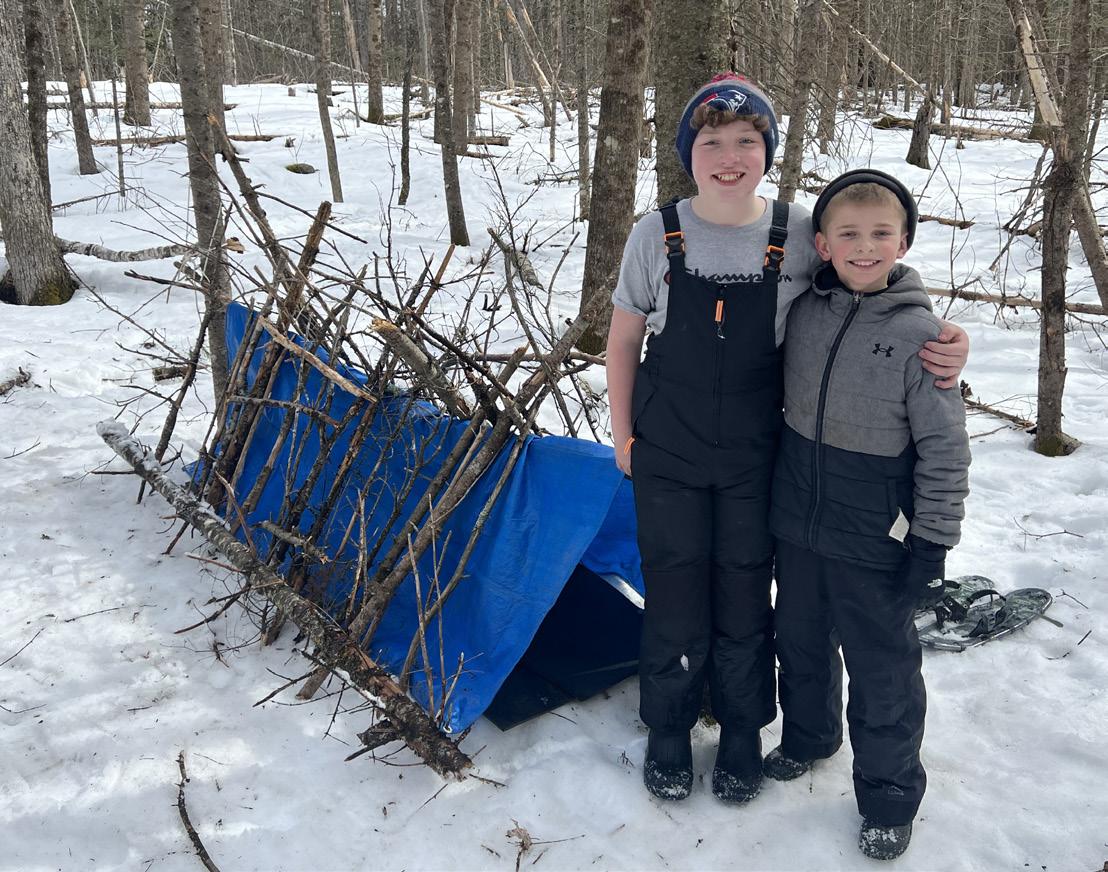
36 Maine Environmental Education Association Mini-Grants for Outdoor Learning
Outdoor Recreation
CONY MIDDLE AND HIGH SCHOOLS ECOLOGY LEARNING CENTER
Adam Williams Brenda Weis
This has been a three year journey that began in the fall of 2020 during the pandemic. What began as offering an optional 1 day a month outdoor hike has evolved into all school adventure days (1x a month), Wilderness Skills elective course, Wilderness First Aid trainings, Outdoor Orientation programming and Junior and Senior Expeditions. In Academic Year 2023 students at the Ecology Learning Center logged over 800 field days. The value of access to this program cannot be overstated. It is the antidote to many of the significant mental health barriers that teens are facing today- it is a tangible way out of the isolation of a post covid world and for many, the first step toward agency, and self reliance.

The support of our community-including organizations like MEEA-and the trust of that our families bestow in us has been integral to the Outdoor Programs at the Ecology Learning Center realizing so much success. After expeditions this spring the following email was sent from a grateful parent:
“Holy smokes dude!
... I would have never imagined in a million years. This kid came back from the trip and even before she got home was talking about all the beauty that she had seen and how she
The MEEA grant monies provided funding this school year to purchase tools and equipment along with new bicycle helmets for use in the Outdoor Education class (bicycle safety, repair, and maintenance) as well as with the Cony Outing Club. The sets of tools and replenished helmets will benefit the class and club for years to come.
Furthermore, this coming fall, I will be collaborating with a Capital Area Technical Center instructor, where we will be opening up an after school “bike shop.” We were fortunate to have acquired a shed on campus that will house our shop. We will be volunteering our time to host repair and maintenance workshops, to provide a space where students and staff can bring their bicycles to work on (we now have the proper tools and equipment), and where we can promote bicycle safety, fitness, and enjoyment.
I believe the more comfortable students and adults are riding bicycles, they will be more apt to ride in their community and be a promoter of bicycling as a lifelong activity. If we can encourage youth and our peers to participate in bicycling now, they may become future proponents of bicycle lanes, trails, and locations to ride safely in the outdoors.

37
Outdoor Recreation
FAIRMOUNT SCHOOL
Scott Wood
KATAHDIN HIGH SCHOOL
Kelly Birmingham
Katahdin High School outdoor education students used the cold weather gear in order to complete their winter outdoor activities. Many of the students did not have cold weather gear so this helped with boots, jackets, ski pants, and gloves for them to be able to experience new activities during the winter.


“I love being able to be outdoors and experience new activities I had never tried before” was overheard from an 11th grade student.
This school year Fairmount school was the recipient of a mini grant from the Maine Environmental Education Association. We used these funds to purchase outdoor education equipment to encourage outside winter activities. Both during the school day and after-school our students and staff participated in some engaging play. We used our neighborhood resources as well as our creativity to promote being outside during the winter months.
In the Fall we held a meeting with staff and students to gain an understanding of what they would like to see to encoursage outside winter play. By involving all stakeholders we hoped to use our resources wisely. They decided on universal ski sets and sleds that could be used by the entire school. We instituted a sign out plan that would encourage sharing of the equipment.
Through it all, we found it to be a worthwhile investment that we hope to add to in the coming winters. One student put it best when he asked if we could go sledding everyday.

38 Maine Environmental Education Association Mini-Grants for Outdoor Learning
Outdoor Recreation
KING MIDDLE SCHOOL
Joanne Abrams
King Middle School extends its appreciation to MEEA for funding the supplies needed to build our new Whale Watch, a low-ropes structure designed to enhance problem-solving, team building, and a sense of adventure and accomplishment. Girl Scout Troop #172, led by Barbara Mascarenas, and her husband, Bob Giovannini, took on the task of constructing the structure. After it was built our teachers pulled together to move it into position and then climbed on to give it a test drive.


The verdict: “It’s NOT EASY to get this right!” Balancing the Whale Watch requires time, patience, communication, trial and error, and cooperation. Teachers look forward to taking their small-group Crews outside next year and giving their students a chance to work together toward a common goal while having fun and sharing some laughs.
At King Middle School we intentionally cultivate a sense of belonging within our diverse student body. We have students arriving and enrolling from all over the world, many with limited English language skills. Having our own outdoor mini Adventure course allows ALL students to collaborate, problem-solve, and build community while having fun and growing together as a learning community.
39
Outdoor Recreation
MAST LANDING SCHOOL
Robin O’Connor
MILO ELEMENTARY & BROWNVILLE ELEMENTARY
Dawn McLaughlin
I have the opportunity to work at several summer camps. This last summer we were able to participate in a game of archery tag. I thought at the time how much fun this would be to bring back to my kiddos. The students have enjoyed the inflatables to no end, and we have used them in so many games that they have been well worth the purchase. My students love archery so archery tag is another level where they use the skills they have learned in a previous lesson. The students have so much fun aiming at the targets that students are hiding behind. The students have commented during class how much fun they have with new equipment. Recently, we have had a bunch of rain so we have been able to use the archery inside, which was not possible in the past. I am so grateful for the opportunity to expose my kiddos to new and exciting activities. Archery tag would not be possible without the help with funding through the mini outdoor grants.
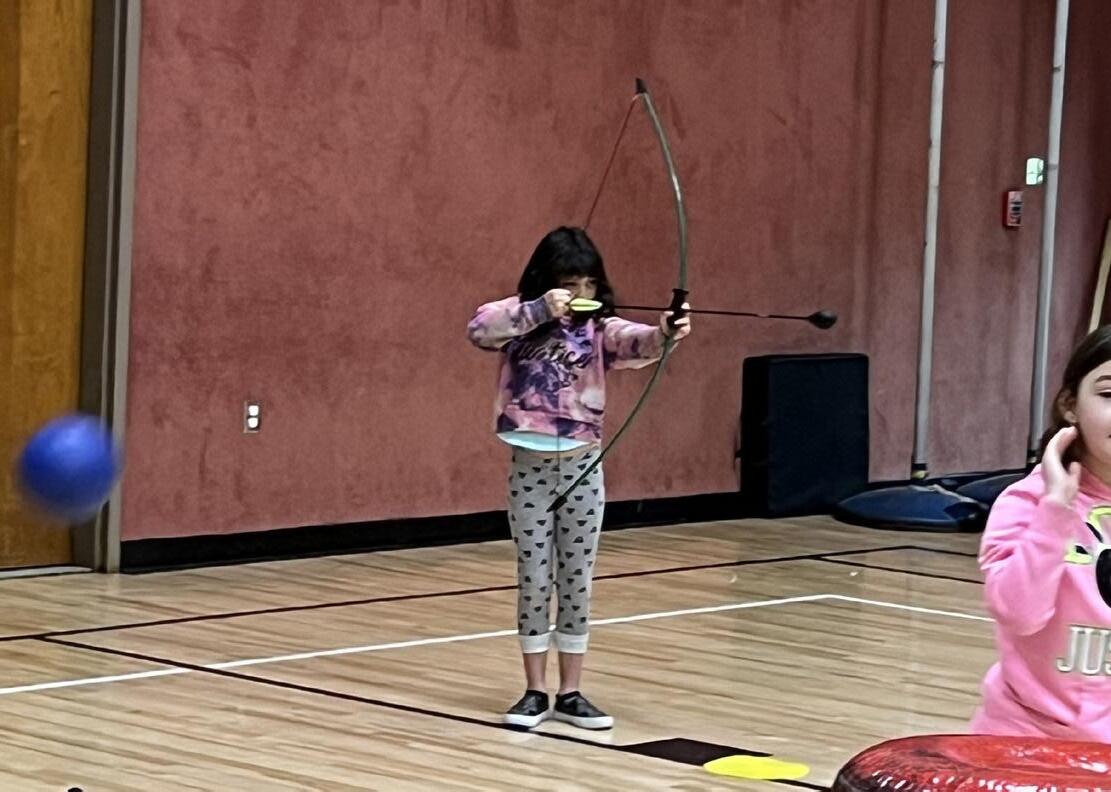
We did not receive the Ga-ga ball pit until after their was already snow on the ground. Our grounds crew surveyed our proposed set up area and decided we needed some groundwork done to prevent it from becoming a mud pit. They included the materials necessary in the budget that will begin July 1. When we start the school year we will have a very nice, permanent, durable Ga-ga ball pit.
I have taught Ga-ga ball to my students using mats in the gym. They are very excited to play it in a real pit in the fall. Our fifth graders were able to try Ga-ga ball in a real pit at Chewonki and were excited to already know the rules and strategies.
Our students are excited to have a game to play that does not include teams and will give them a place to practice their problem solving skills. Student enjoy the fact that games a fast paced and if you “get out” the game ends quickly and you can play again.
Mast Landing School is embracing the outdoors. We are currently piloting “The Daily Mile”. The entire school walks/jogs for 15 minutes every morning. Our students and staff are loving this chance to be outside and engage with each other. Teachers are also purchasing mats to sit on while completing writing, math and reading work outside.
Thank you for helping to grow out outdoor activity choices. Mast Landing students are very grateful for this new opportunity.

Today, one of my students said “This is the best game ever”. I love to hear those words from my students.
At the end of each class my students have an opportunity to talk about the activity and answer with what was challenging, exciting, or what would they change. I look forward to using all the ideas the students came up with to add levels to this game. I love to learn from my students. Their imaginations are a wealth of great ideas. Next time we play we will add guards for the archers that have swords(noodles) to protect the archers during the game.
Thank you for the opportunity to purchase cool equipment for our kiddos.
40 Maine Environmental Education Association Mini-Grants for Outdoor Learning
MONMOUTH ACADEMY
It was the vision of Jeff DeBlois, the original project director, that students see and experience the connections between various disciplines such as Earth Science, Biology, History, English, Art, Math and Geography as Maine became their classroom. It was not expected that students would remember all the information covered in Acadia. But if Project MOBY caused students to have new experiences, to think about why things are the way they are, and to see themselves, their peers, and the great state they live in, in a new light, it would have been successful.


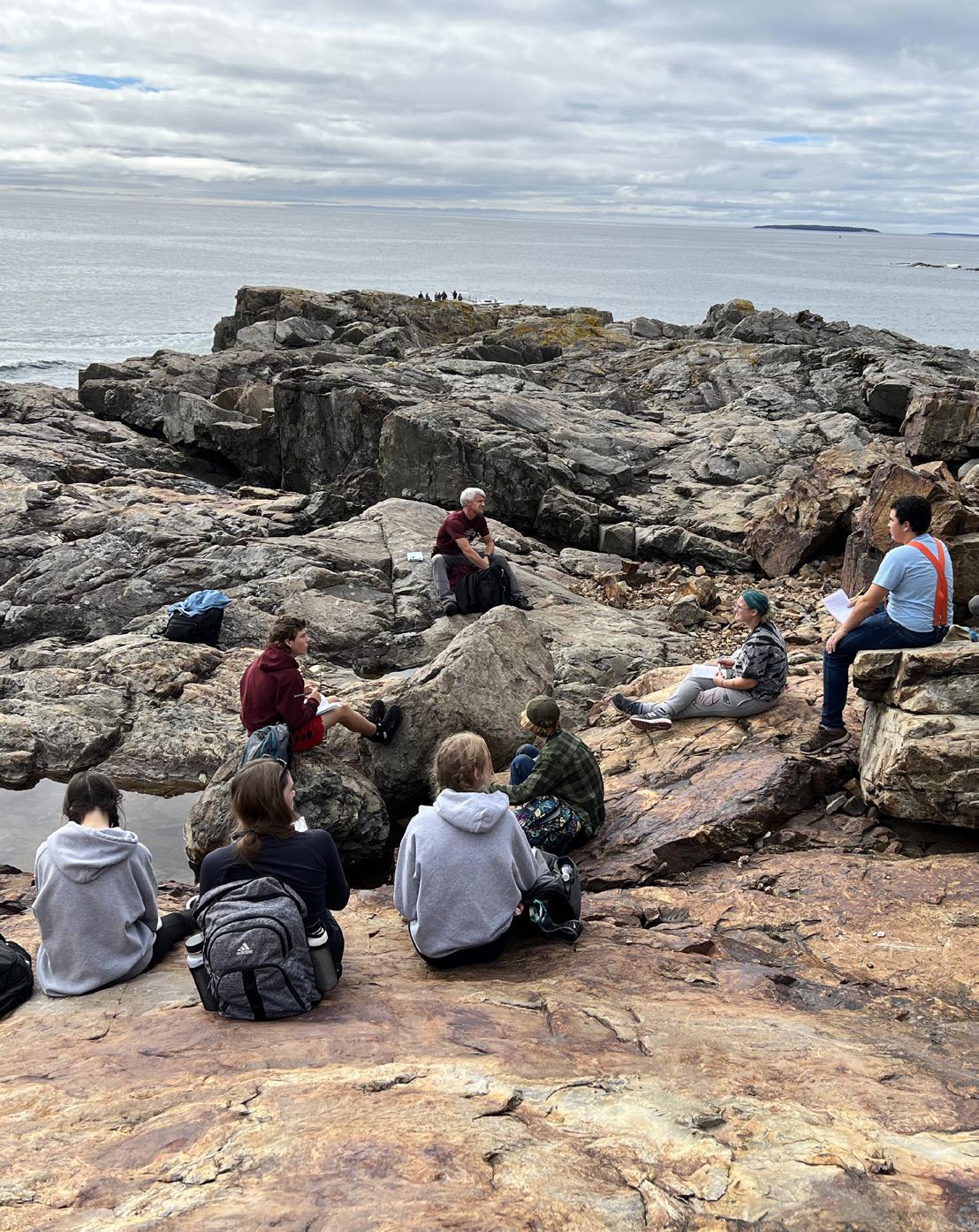
41
Shawn Schultz
Outdoor Recreation
MOUNTAIN VALLEY HIGH SCHOOL
Todd Papianou
MSAD 15: GRAY & NEW GLOUCESTER
Todd Mercer
Gray New Gloucester High School utilized a MEEA Mini Grant to purchase additional tents and kitchen gear to support their outdoor adventure education program.
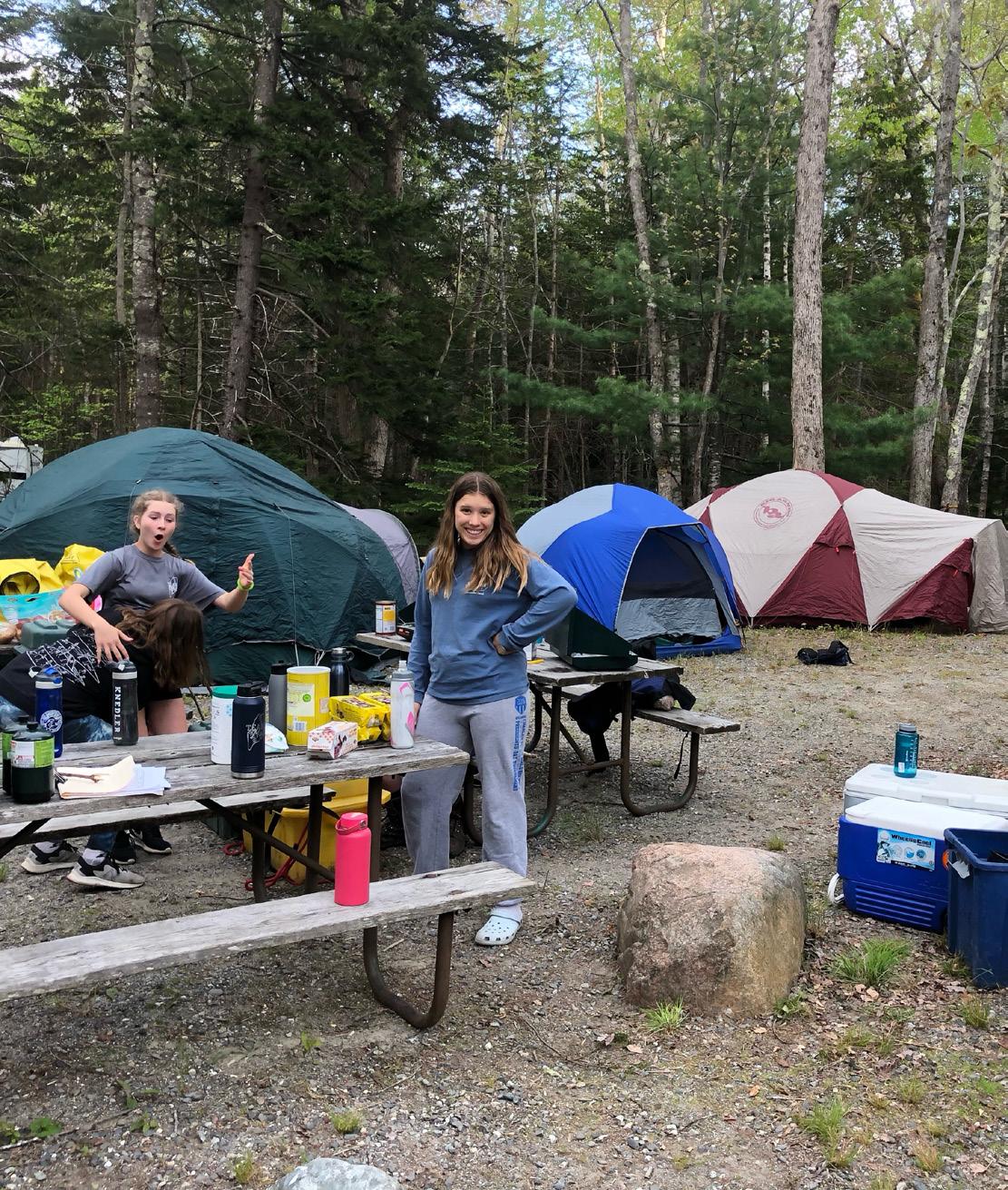
This $1,500 grant afforded us the opportunity to purchase an additional 5 tents, another Coleman Camp Stove and a few pieces of cast iron cookware. These cast iron pieces will allow us to teach the students to cool over charcoal and an open flame, as well as the Coleman Camp stove. Learning to feed themselves safely in a wilderness environment is a skill which can allow a wilderness experience to feel like a 5 star dining experience. The excitement of a baking pan full of apple crisp cooking in a dutch oven is an experience they will never forget.
With these funds we are able to bring our students to remote experiences like hiking in Baxter State Park, mountain biking in Acadia National Park and Kayaking to watch the sun rise at Sebago Lake State park.
Thank you to MEEA and their donors for supporting us in our effort to provide our students with real life, hands on learning experiences.
When I hear students excitement to take an activity further it fuels my fire to help them get the authentic experience they are looking for.
With our Climbing wall unit all 9th graders are expected to pass a motor skills test of the One Person Belay. The discussion is always framed with “The Why?” as our foundation. We list all the possible jobs that require belay experience or ability.

This helps the skeptic kid or the too-cool-for-school kid or the nervous kid become motivated because the belaying becomes the focus as it has a real world application. After they get going and see other students having success climbing they start to feel safer and more students engage. The shoes are critical to this model as the increased grip and function allows more students to feel more confident quicker. A positive cycle of success feeding the students.
One of my favorite moments a few years ago was when a student on the wall yelled down to me “HEY, POPS!! CAN WE DO THIS ON REAL ROCK???!!!”
My answer was instantly yes. My heart and bucket was full as I watched teams of students belaying, anchoring, backup belaying to support each other on multiple field trips to different locations to climb real rock. Now, with the new shoes I fully expect to see my students doing great things and feeling accomplishments they might not have thought possible.
42 Maine Environmental Education Association Mini-Grants for Outdoor Learning
Outdoor Recreation

MT. ARARAT HIGH SCHOOL
Julie Petrie
I was ecstatic to receive this funding in order to help our Outdoor Physical Education class continue to grow in numbers. In years past, the lack of equipment has limited our class sizes and this funding made a significant positive contribution to our school program. This funding allowed us to now have enough equipment for students to each have their own helmet and safe bike to use for class. The students comment on a consistent basis that they love riding bikes and that it is a great way for them to get exercise and to be outdoors. Students were also able to learn basic skills about bike safety as well as the skills on how to do basic repairs to their bikes.

OAK HILL HIGH SCHOOL
Tim Farrar
The fly fishing equipment was the linchpin that tied our Outdoor PE unit on fishing and our local rivers. We were able to study the river systems and talk about the comeback of Maine’s over- industrialized rivers. Our class was able to do a walk, and a couple of days fishing. Fly fishing forces the class to slow down, be aware of their surroundings and try to land a fish. We learned about the Androscoggin river and how the water quality has improved over years. We wanted to show that you could recreate and enjoy the river, something unimaginable a generation ago. We were able to use fishing as a way to connect and better understand this amazing river, and how it has defined the region we live in.
43
Outdoor Recreation
PEMBROKE ELEMENTARY SCHOOL
Debbie Mcphail
The 7th & 8th grade students of Pembroke Elementary School participated in a two month hunter’s safety program sponsored by Inland Fisheries and an outdoor MEEA mini grant that was awarded to the school. The students met twice a week with Haleigh White from the Department of Inland Fisheries and Wildlife, to learn about the rules and regulations of hunting safety with guns and bows. These classes took place during the school day and counted as a science class. In total fifteen middle school students were certified in hunter’s safety and bow safety by the end of the course. Classroom teacher, Debbie McPhail, stated that this is the kind of learning that elementary schools should be working towards. The students are learning real life skills that they can use for a lifetime. She also stated that it is important for our youth to experience outdoor learning and also learn conservation at a young age. She also noted that attendance during this period of time increased. Kids were excited to come to school. Outdoor learning is the future of education and Pembroke Elementary School plans on adding more outdoor education classes in the future.

POLAND REGIONAL HIGH SCHOOL Marcus
DeVoe
Normally, students are confined to staying on campus. However, in our Outdoor Education class, that has changed. Thanks to a mini grant from MEEA, 16 bikes have been fixed and put back into commission at PRHS. “Biking allows us to be free,” says a student named Emma. Also excited about using the bikes, “Biking allows us to explore the area around the school,” from a student named Olivia. Our class was able to utilize a system of trails next to our high school to get into the woods and get some good exercise. Here we utilized some skills learned in class and applied them to a real world setting. Overall, our experience can be summed up in one quote from a student named Ari: “Biking is amazing.” Thank you MEEA for your grant!

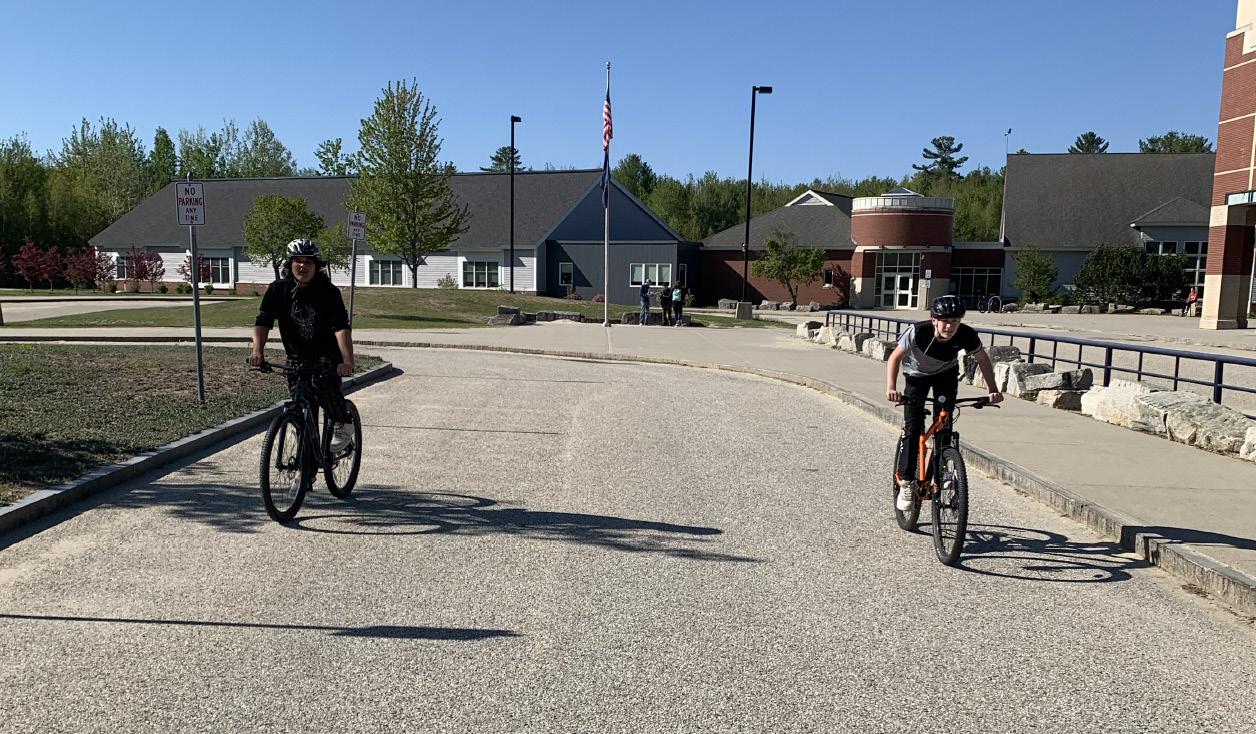
44 Maine Environmental Education Association Mini-Grants for Outdoor Learning
Outdoor Recreation
PORTLAND HIGH SCHOOL
Kirsten McWilliams
The funds given by MEAA were used to fund the transportation, food, gear, and fees for numerous trips. We were able to travel outside of Portland and far into the Northern Maine woods because of the funds that went towards paying for gas. On long day trips and overnights, we had money to spend on food to supply students with snacks and meals. We were also able to pay many fees for students who could not afford it. On a day trip to Evo Rock Gym, we could pay for 18 students’ entrance fees to climb. We paid for 8 students to stay overnight at Stratton Brook with Maine Huts and Trails. Finally, we could get a bus for transportation up to Kingfield Maine on a Bigelow volunteering trip with the Maine Appalachian Trail Club to volunteer in trail maintenance.
Without these funds, we would not have been able to give students so many free or opportunities and fun adventures with outside organizations. The impact of these trips is huge for both Native Mainers and New Mainers being able to meet and befriend each other in places of nature and in times of service. The funds allowed us to create community in our school, giving entrance into the beauty and fun of the outdoors, which is hugely therapeutic in times of trauma here in the US with the pandemic and current politics, as well as abroad. So much bonding and healing occurred on these trips.

“The sledding hills at Stratton Brook were awesome!” -Toby Clegg-Petri

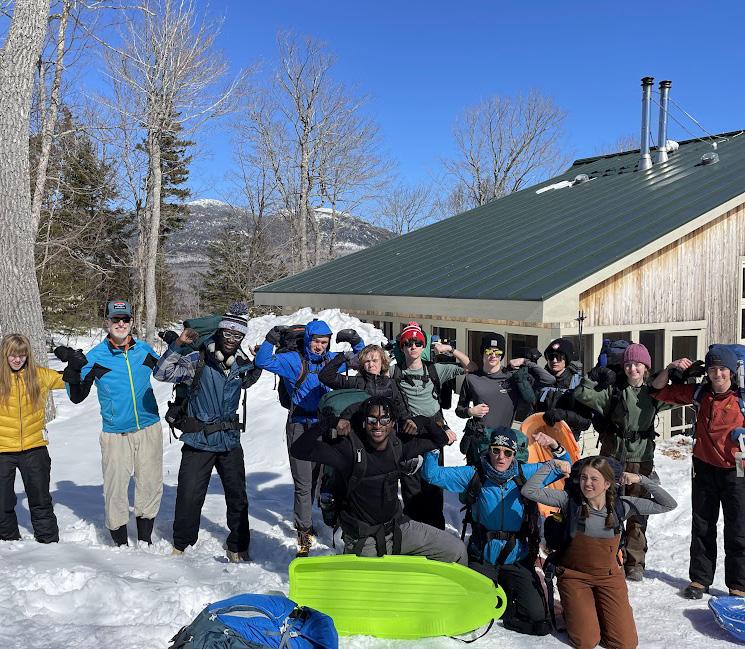
“The Bigelow Mountains were beautiful! As were each of our outings. I can’t wait for next year!.” - Zola Bloom
“Such good opportunities to get out and meet new people!!”
- Cece Blackwell-Moore
45
Outdoor Recreation
REGION 9 SCHOOL OF APPLIED TECHNOLOGY
Jonathan Longley
This grant opportunity is solely responsible for providing shelter for ALL our outdoor activities and learning. Without the generosity of this grant our students enrolled in Outdoor Skills & Leadership would have been unable to share their skill set as they prepare to challenge the Maine Guide Exam. Our students partnered with two Elementary Schools (4th & 5th Grade) and one middle school where they were the ‘Guide’ for the day.
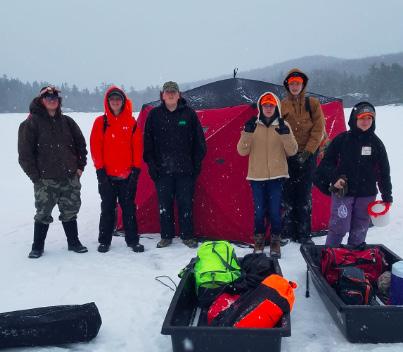
Each portable shelter was set up with different educational activities for our guests. Some examples include a portable kitchen where students teach outdoor cooking, including dessert, a name that species challenge in another portable, and one of my personal favorites-Snowshoe history, including a quiz and homework.

It comes as no surprise we have been requested to repeat these outdoor learning excursions with the staff we served. We have used these as tents, observation blinds, and warming huts for ice fishing. With a challenging class we showed up with our portable shelters and demonstrated how they work, we then created a challenge for them. End result, kids working with kids fishing!
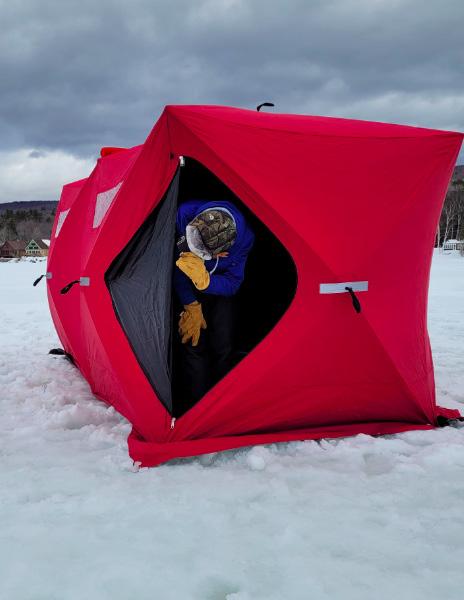
46 Maine Environmental Education Association Mini-Grants for Outdoor Learning
Outdoor Recreation
Outdoor Recreation
RICHMOND MIDDLE & HIGH SCHOOL
Joe Viselli
This year Richmond Middle/High School offered Disc Golf in both the Fall and Spring. Through the grant by the Maine Environmental Education Association we purchased nine baskets and several sets of discs. This also helped us partner with Sabattus Disc Golf to receive free used discs to bolster our inventory and allow more students to participate.
One student, Lila Viselli, set up the course complete with score cards in the spring and the course was used for PE classes during school hours and community members after hours. Students were taught the finer points of choosing discs, throwing technique, course ettiquette, rules, and an appreciation of the natural landscape all through the lens of disc golf.
The offering of this activity allowed students who tend to dislike traditional sports and activities find success in a low impact, life long sport. The plan is to develop the course further, hopefully leading to a permanent course that can be enjoyed by students, faculty, and community members alike!
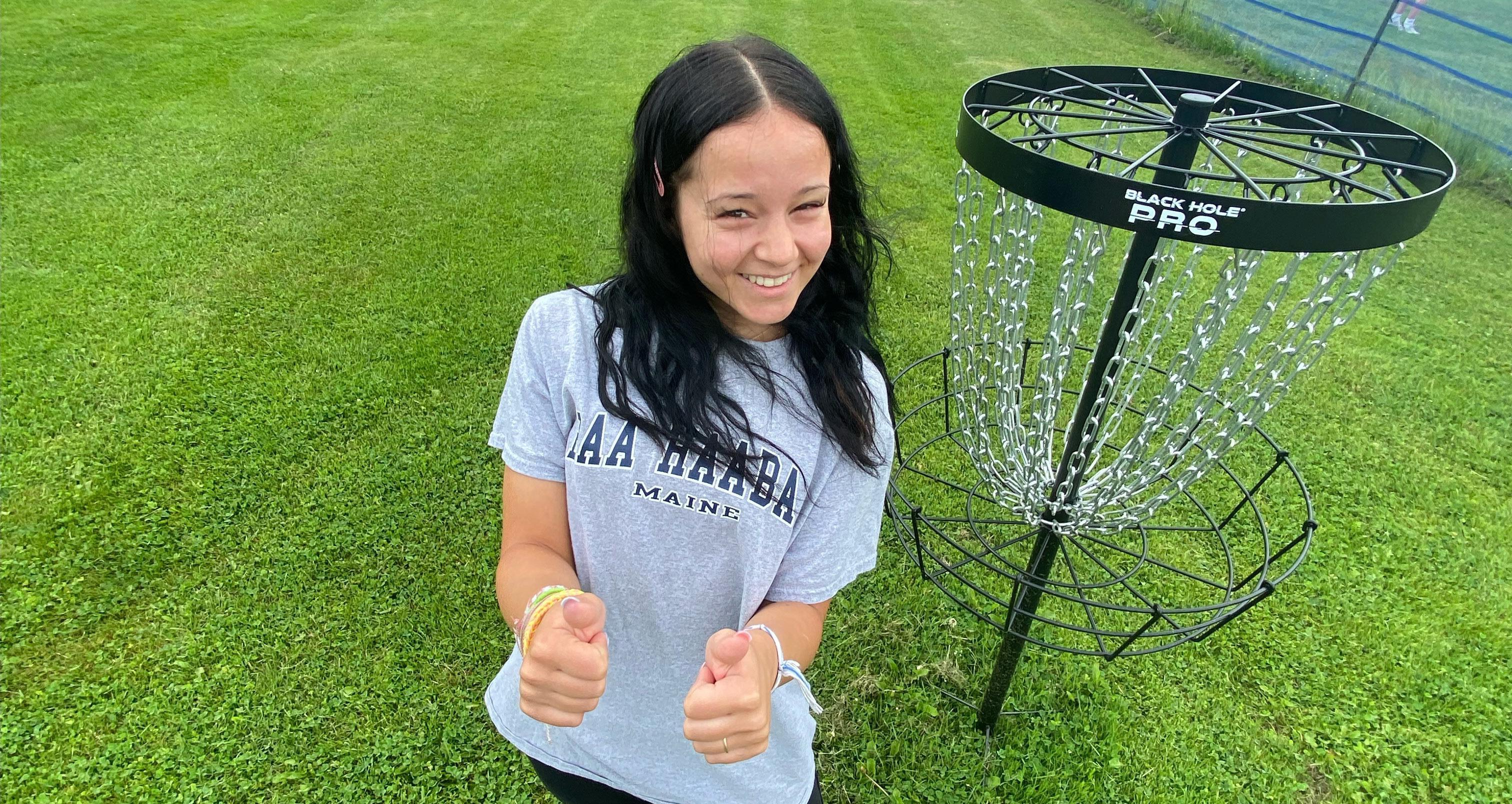
Science Exploration
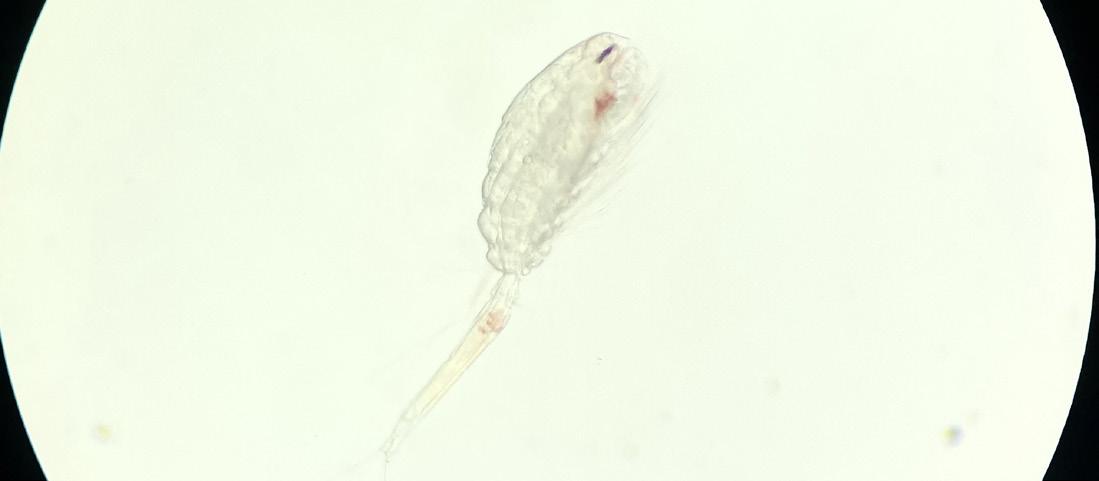
BAXTER ACADEMY FOR TECHNOLOGY & SCIENCE
Katie Strait
The best way learn science is to do science! The waders were a crucial addition to my marine biology students this year! Instead of talking at them in the classroom about the importance of phytoplankton in the marine food web, they were able to conduct their own field studies. In doing so, they learned how to carry out experiments from start to finish and apply their findings to the real world.
The Gulf of Maine is warming faster than 90% of our worlds oceans. Baxter Academy is located right on the Portland peninsula. We are surrounded by water and are fortunate to be able to walk to several different locations to conduct experiments. However, we were limited with what we could do because we did not have the necessary equipment. Having a class set of waders was a game-changer this year! Students got first hand experience of what it takes to be a marine scientist. As a result of being able to do simple plankton tows; curiosity was sparked and every single student was engaged! Some are now even wanting to go into the field of marine biology! For me as an educator, this is what it is all about - passing my love for marine science down to future generations. It’s about physically being able to show them what it’s like to conduct field experiments and act as citizen scientists, contributing to a much larger picture.
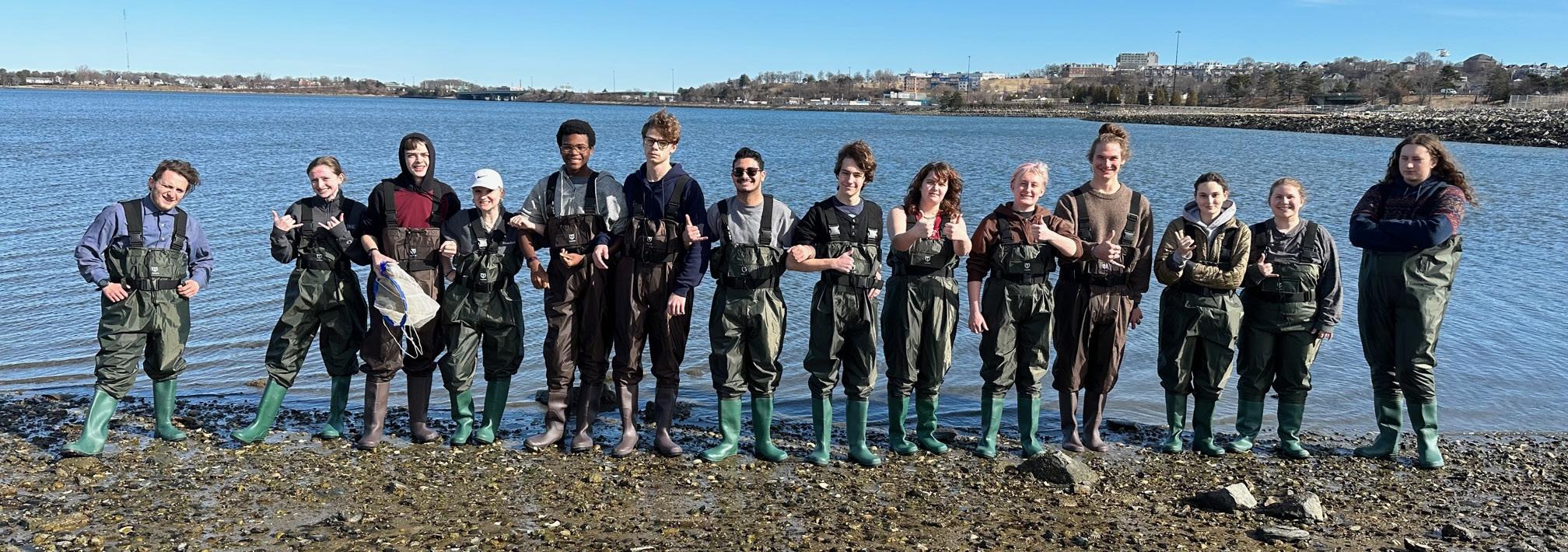
“Marine science is best done when students can take what they have learned in the classroom and then use it to create/ conduct experiments in the field. Lasting impressions are made when they have the ability to use their physical senses to experience nature and what it means to learn outdoors.”

48 Maine Environmental Education Association Mini-Grants for Outdoor Learning
Science Exploration
BELFAST COMMUNITY OUTREACH PROGRAM
BONNY EAGLE MIDDLE SCHOOL
Brett Levin Lindsey Schortz
“I like taking photos a lot. For me it’s the perfect way to capture people doing what they do as well as the beauty of everyday happenings. Once people have the camera in their hands it makes them look around and be in the moment. At BCOPE, when the camera’s are brought out, there’s always at least 2 people who want to take pictures. Since you’re actively trying to get good shots of the things, people and nature around you, it forces us to look more intently and artistically at them. In result we feel more fulfilled to have connected to our surroundings by capturing them and that brings people closer.” - Mila D.
“We have a wall of pictures. We laugh and learn and it’s all captured on that wall. We take the cameras on all of our expeditions and document what we do and what we learn. The cameras have given students who aren’t as hands on the opportunity to participate in a different way. We use the cameras for academic purposes, but we also have fun with them. We take pictures of each other, laughing the whole time. We are still figuring out all the options, and we have so much fun finding new ways to take pictures. The cameras give us a whole new thing to learn and talk about. Students are constantly asking if they can take a camera to the garden, greenhouse, and classes. Though it sounds silly, the simple act of getting a few cameras has given us so much joy and curiosity.” - Naomi S
“This grant strengthens the future of BCOPE... Not only does it provide multimedia representation of the opportunities of alternative learning but also the community that comes with it.”
-Zosia B.
“BCOPE cameras allow us to capture memories and knowledge like we haven’t been able to before.” - Rowan L.
“These cameras are great for beginner photographers that are just starting out... Not many kids have access to high quality cameras but thanks to this grant thirty one students do now.”
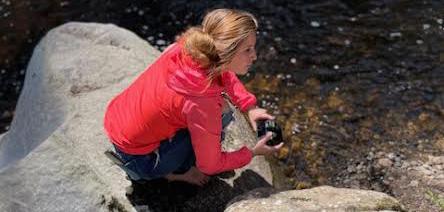 - Lyfe B.
- Lyfe B.
Bonny Eagle Middle School 8th graders set up six forest inventory growth plots on the middle school campus. They have begun surveying each site and collecting data that will be compared to data collected by future 8th graders. “This is the first year of this project, and we are hopeful that the data we collect in the future will help students understand how the forests on their campus are doing.” Said Mr. Levin, the middle schools outdoor education teacher. Students will be able to use the forest inventories to describe the quantity and quality of trees and other organisms of the forest, and the characteristics of the land on which the forest grows. The data can then be used in different classrooms, and the forest plots can host a multitude of different classrooms for collaborative projects and activities, at both the middle school and high school levels.

49
Science Exploration

DANIEL W. MERRITT ELEMENTARY
Karen Bailey
Students at the DWM elementary school in Addison have enjoyed many outdoor science activities this year. Each student was able to grab a science bag and head outside to explore nature and make their own unique discoveries about our local environment. We spent time on the little trails and rocky beaches in Eastern Harbor and also utilized the short trail and wooded area behind our school. Having all of the proper science equipment made everyone feel like a true scientist. It was very nice to not have to share equipment or scavenge around to find enough tools for everyone. We will be taking our bags along on another field trip this year to the edge center in Cherryfield. We will be able to identify trees and birds along the trails and also explore the vernal pool more completely. The excitement shown by the students complements my philosophy of learning outside. Students are able to make deeper connections to the world we live in. This ownership helps them be invested in taking care of our planet. One of the most fun and meaningful activities this year was discovering why exactly we should not eat snow. Students were shocked to see all of the different things inside snow and were surprised at how much dirt and how many little critters were in the pristine looking snow. Another fun activity was when each student was given one square foot of land and a magnifying glass. Discoveries led to questions and vice versa. This grant was very much appreciated and the kids felt like it was Christmas every day that we would get another package from amazon. I feel this was a very worthwhile project that will be able to be sustained over the years. Overall it was a complete success and we are grateful.
FIDDLEHEAD SCHOOL OF ARTS & SCIENCES
Marie Camillo Reimensnyder
Place-based learning is an integral part of our program at Fiddlehead school. Each class (K-8) goes outdoors to a site in our community for outdoor learning once a week. These locations offer the opportunity to observe the plants, animals, insects and elements in the diverse ecosystems in our community. We are grateful for the MEEA grant that enabled us to purchase tools for observation. Theses tools are critical in helping children understand the structures and workings of nature at the smallest levels up close via magnifiers, and things further afield via binoculars. Teachers as well as students were introduced to a whole new world when using the eye loupeslooking closely at leaf structures, apple blossoms, feathers, bark- all things in nature became an opportunity for discovery with these powerful portable magnifiers. When doing an intertidal zone study, children were clustered together with their eye loupes watching barnacles open and shut, looking at hermit crabs, and rockweed.
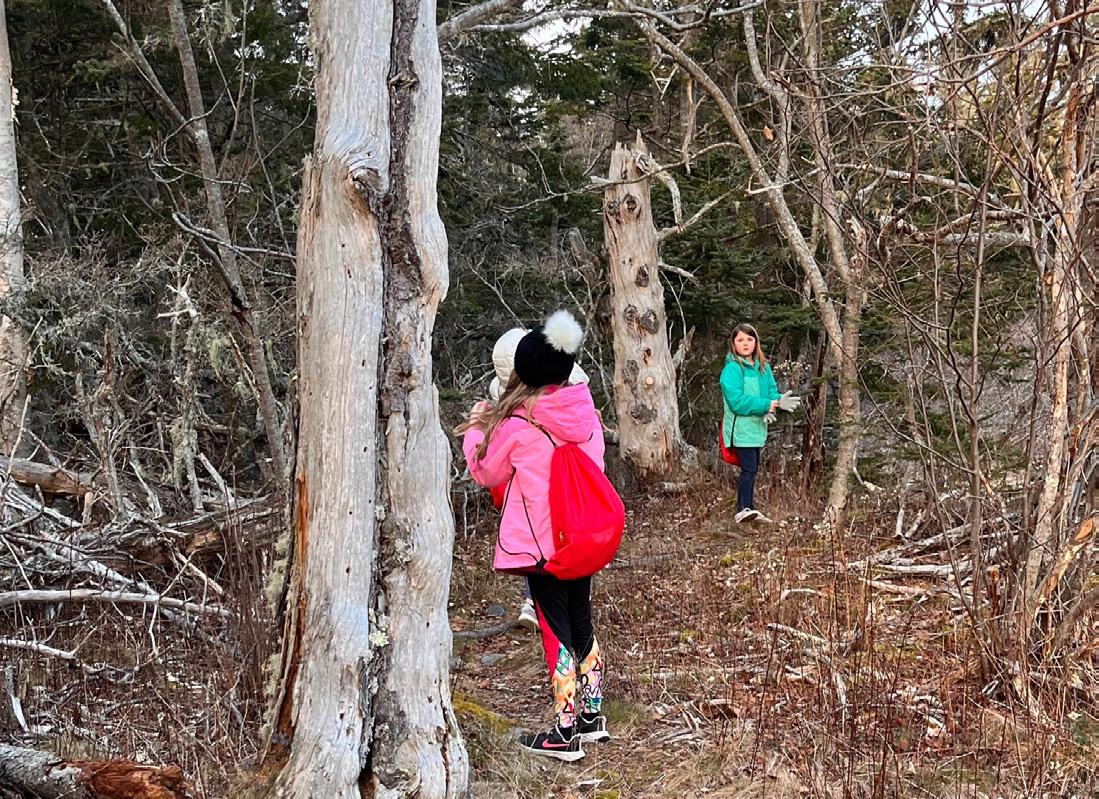
Binoculars afforded opportunities to view birds: killdeer, tree swallows, osprey and 28 heron nests in a rookery.”Wow! I’ve never seen an osprey before!” a student exclaimed when observing osprey their nests.
Having enough equipment for each child to have their own tools for observation in small groups generated great excitement and was important for supporting learning and a sense of wonder. Being able to observe closely can foster a connection and appreciation of what we cannot see, what we overlook-or take for granted-and help students and teachers alike understand the value and importance of all living things.
50 Maine Environmental Education Association Mini-Grants for Outdoor Learning
Science Exploration
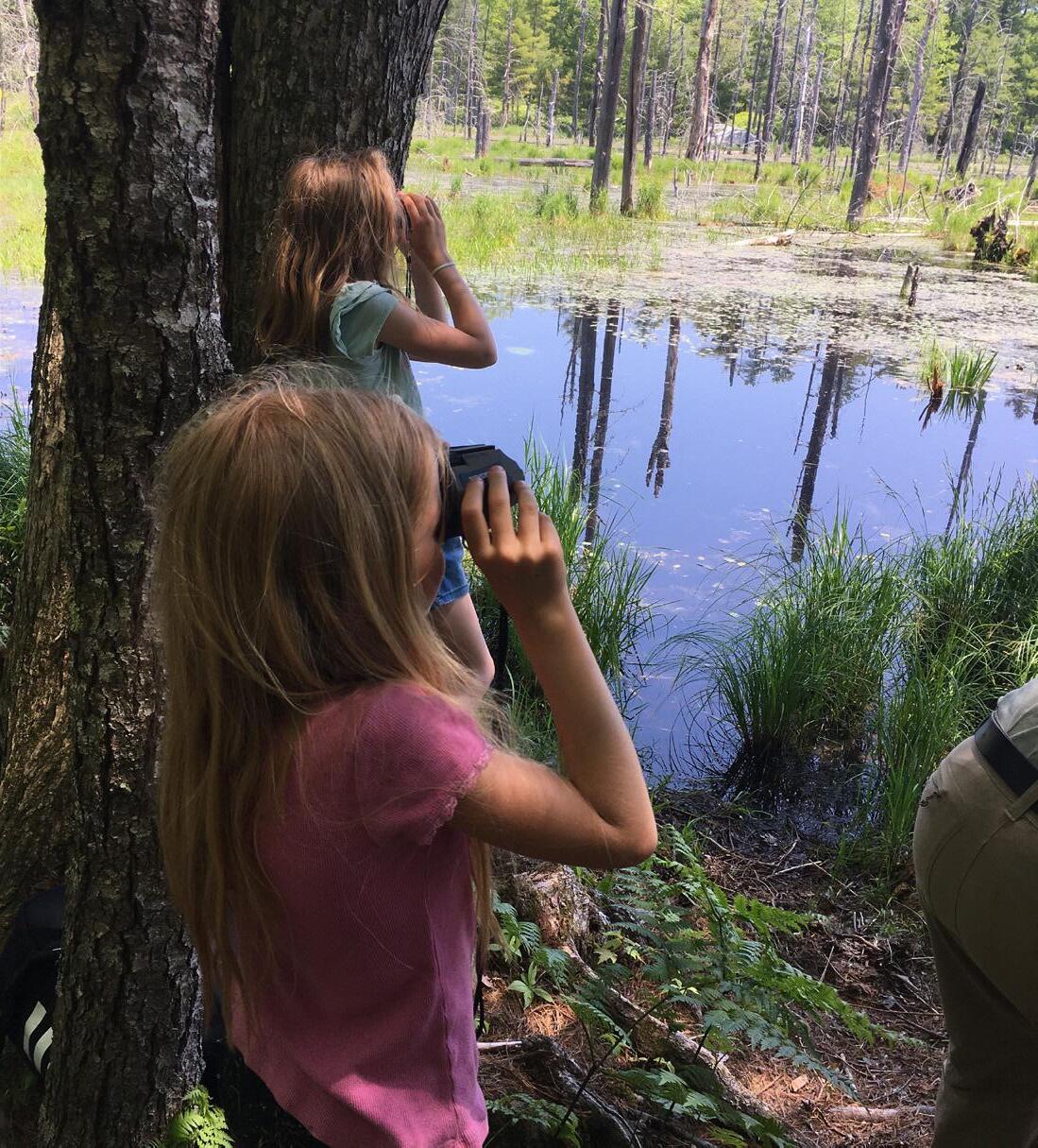
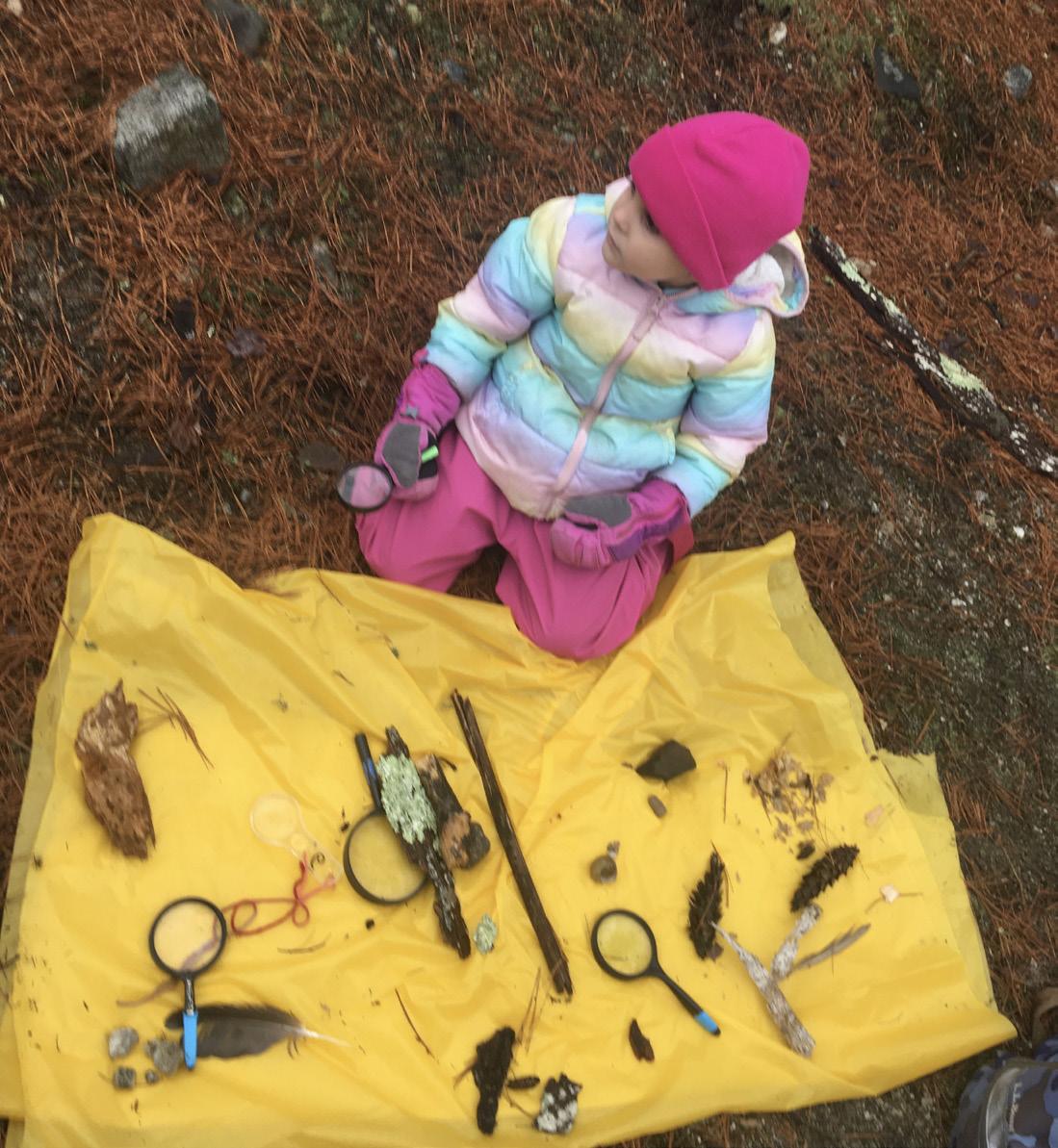
GEORGETOWN SCHOOL
Nina Willette
Georgetown School is faced with a common rural problem, or pain, mosquitos. Harmful chemicals cannot be used to spray the school and lessen the mosquito population, so students in grades PreK-2 set out to help the school create safe and natural ways to decrease the population of mosquitos on the playground. Students learned that bats, birds, and dragonflies all eat mosquitos - in fact, bats eat up to 1,000 mosquitos a day. The next problem they faced was determining how to get them on our playground. We knew that we needed to create habitats that would allow these animals to stay present in our schoolyard in the hopes that mosquitos would be their breakfast, lunch, snack or dinner. Grades one and two studied types of bats native to Maine - they compiled detailed information and created replicas of bats that would be similar to the ones that would live on the playground. We purchased bat houses and hung them around the schoolyard. Students in grades PreK and K, discovered that dragonflies also eat mosquitos. They studied the life cycle of the dragonfly. We purchased dragon fly nymphs and built small habitats to watch them grow. Our hopes are to release them on our playground. We learned that birds are also helpful, so we purchased nests to attract barn swallows to the playground area. We are hoping all of these safe and natural elements will help decrease the pesky mosquito population, making the playground a happy place to be.

51
Science Exploration
MEDOMAK VALLEY HIGH SCHOOL
Students in the Medomak Alternative Program at Medomak Valley High School did a months-long project on water quality. They were presented with a fictional scenario in which a new industry was proposing to build a factory by a river in our district. Students acted as town officials tasked with deciding if the factory would be allowed to come. The factory would bring jobs and provide resources (students expressed that they’d really like physical improvements to their school!), but since the economy also depends on natural resources, would it be worth it if water quality suffered?
Throughout the colder months, students did experiments and activities around watersheds, eutrophication, pH, and dissolved oxygen. In the spring, they went on field trips to test these parameters and study biodiversity in nearby streams, ponds, and lakes, drawing conclusions about local water quality. In the end, they concluded that water in the areas we tested is healthy. They also decided that the (fictional) factory could come, but there was a very long list of rules and regulations it would have to follow.
The connection to our own community made this an engaging project. It allowed the students to immerse themselves (sometimes quite literally, as shown by the photos) in the content. Having materials such as stream tables and dissolved oxygen kits allowed us to connect with the environment when it was difficult to get outside. In the warmer weather, students were excited about collecting freshwater organisms and identifying them with microscopes. A highlight was discovering that dragonflies look very different in early spring!
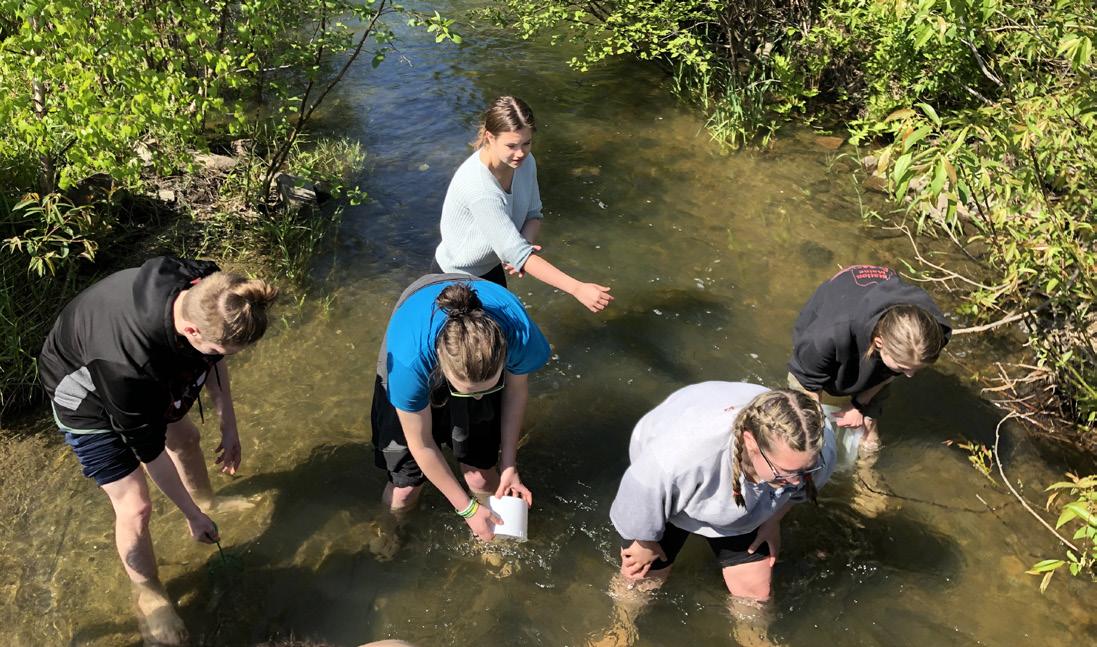
We are deeply grateful to the Maine Environmental Education Association for making this meaningful work possible. Thank you!
MSAD 17: ROBERTS FARM
The Roberts Farm Lending Library is a collection of professional and student resources that is available to educators and community members in the Oxford Hills. The Lending Library’s materials focus on promoting outdoor and experiential learning in classrooms in and around MSAD 17.
Through this Mini Grant, we were able to add new books focused on Farm to School and school gardens in addition to experiential learning and teambuilding kits.
When asked about the impact of the Roberts Farm Lending Library, here is what a few folks in our community had to say:
“I have loved and appreciated the resources in the lending library so much! Outdoor education is steadily becoming a part of our everyday curriculum and the resources in the Roberts Farm lending library have been so helpful! I have been able to learn more about gardening, composting, water ecology, and nutrition. Then, take the information I’ve learned back to my students and our classroom.”
- Keely Baldridge, 5th Grade Teacher at Paris Elementary School
“I have used the Lending Library to borrow books on subjects such as mapping with children, experiential and place based learning, and Forest Kindergartens. Most recently, I borrowed Naturally Curious by Mary Holland. The Lending Library book choices are wide, deep, and delightful!”
- Sarah Otterson, Retired Educator and avid volunteer
“I have used the lending library at Roberts Farm for so many things on so many occasions. I especially love being able to borrow a class set of pocket microscopes as students LOVE those and they are not something that schools usually even have one complete set of, and they allow the kids to get really excited about science and examining nature.”
- Sara King, Maine Forest Collaborative Program Coordinator
“The lending library at Roberts Farm is a wonderful gem that has proven helpful when working with students (and teachers!) outdoors.
- Seal Rossignol, Education and Program Coordinator, CEBE
52 Maine Environmental Education Association Mini-Grants for Outdoor Learning
Sarah Kearsley Anna Myers
Science Exploration
SAINT GEORGE SCHOOL SANFORD MIDDLE SCHOOL
Amy Palmer
The Saint George 3rd graders raised Atlantic salmon from eggs to fry with the help of the Fish Friends Program and MEEA. We received the eggs of this endangered species in March and released them as fry into the Sheepscot River in May, where we hope they grow to adulthood and spawn. We learned so much about salmon along the way: how their life cycle affects their conservation, reasons why they are endangered, and different ways we can help them. When we released our salmon, we got to meet a DMR biologist and she taught us about what she does to help salmon in her job. After we released our fry, we took a trip to the Craig Brook National Fish Hatchery where we got to meet biologists who are in charge of the Sheepscot salmon. We visited the huge tanks where the fish live. These were the parents of the fry we released! It was really cool to see what people are doing to help this species!
 Diana Allen
Diana Allen
This year our investigation moved to looking at the Mousam River watershed through the lens of plastic pollution. We did 4 clean ups, sorted the trash, and collected the data. We made trash art and presented our findings to our school committee. Other activities during the investigation were look for micro plastics in the soil along our watershed, water testing and a major invertebrate investigation.
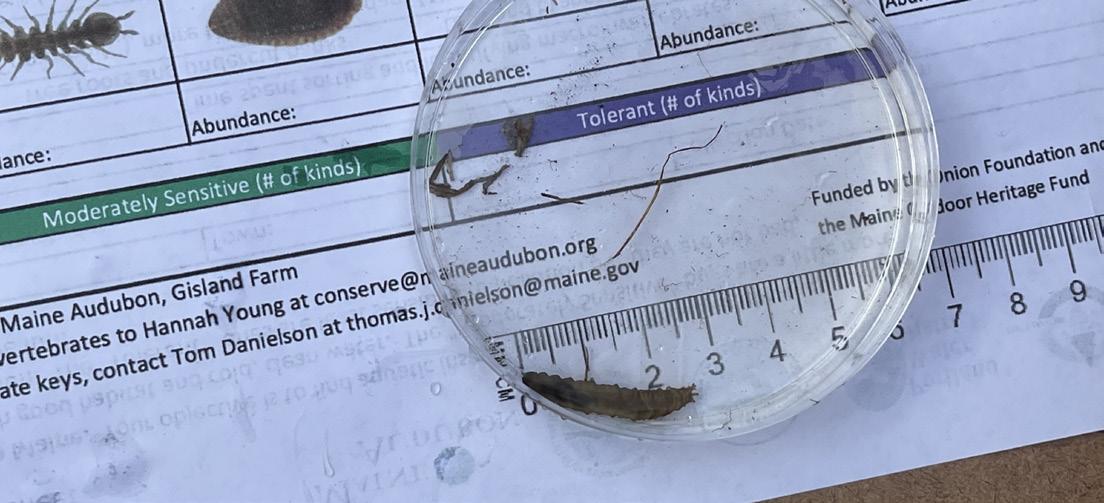
At the end of the year one young lady, Ysebella Mitchell, took it upon herself to develop a presentation that she took full ownership of and presented on 3 separate occasions to our learning community and our school committee. She did a beautiful job. It was amazing watching the students who chose to develop their trash art creations create a creative, peaceful environment where they sifted through, bent, broke apart hundreds of pieces of garbage we collected into artistic statements against plastic pollution in our watershed.

53
Science Exploration
SEDGWICK ELEMENTARY SCHOOL TELSTAR HIGH SCHOOL
Kelly Dole Bev Hawkins
This mini grant allowed us all to stop and investigate what can’t be seen easily with the naked eye. We were able to observe the comings and goings of the nesting birds, as well as follow other birds as they flitted from one tree to the next. The loupes enabled us to see close up as well, as we zoomed in on the tiny critters and what makes up their world, making us even more curious about our environment that we share with the big and little creatures of the outdoors. The exercise of sitting still and taking in another creature’s place in nature held us all captivated and looking forward to more. Students that sometimes struggle to be quiet and still were pulled right in.
The Telstar Freshman Academy is a collaboration between MSAD #44/Telstar High School and the University of Maine Cooperative Extension 4-H Camp and Learning Center at Bryant Pond. All freshmen daily attend this off campus program that has a hands-on approach, integrated curriculum, and experiential learning. This school year, a new unit was developed that was place-based, and implemented this spring. This unit integrated ELA, social studies, science, and outdoor leadership skills, and gave students knowledge of the history, both culturally and environmentally, of the Androscoggin River watershed. Students participated in local field trips to the Maine Mineral and Gem Museum and the Bethel Historical Society. They also completed water quality testing on the 4H campus at Bryant Pond, learning about the chemical, biological and physical health of their local watershed. In addition, the students participated in a study of macroinvertebrates of a freshwater stream.
In Outdoor Leadership class, students refreshed their paddling skills, and learned other expedition preparation skills necessary for a multi-day canoe expedition in Maine. First aid, meal planning, campsite management, and fire building skills are taught to the students. The students participate in all aspects of the canoe expedition, including pack in and pack out, meal prep, and clean up. During the expedition, students were able to use their water monitoring practice to test the shore, as well as the deeper water of Lake Mooselookmeguntic.
Students worked in groups to test three shore sites of the lake, as well as water at a depth of 11 meters.These results were compared to results that had been obtained at Bryant Pond. Students obtained data about temperature, pH, dissolved oxygen, biological oxygen demand, phosphates, nitrates, e.Coli, and turbidity.
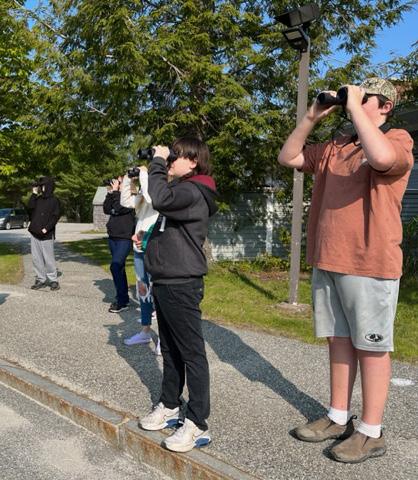
Students were able to paddle, camp, write poetry, and test water samples during the canoe expedition. Fishing was a favorite activity.
According to one TFA student, the canoe expedition was “... the greatest field trip ever.”
54 Maine Environmental Education Association Mini-Grants for Outdoor Learning
Science Exploration
T.W. KELLY DIRIGO MIDDLE SCHOOL
Erin Carlson & David Buck
This grant helped me to stress my core teaching philosophy to my students; the world is their classroom.
My fifty-three students identified more than two hundred organisms, from microscopic dinoflagellates to red-tailed hawks. They even found yellow-spotted salamander eggs that we brought inside to observe hatching in our class tank. We collected water and soil samples from the woods behind our school and observed activity and changes with the new microscopes in the samples at different points of the year. The algae growth in the salamander tank was especially interesting to students once they discovered that it was so much more than green slime and that it was, in fact, full of rotifers that they could watch dance around.
This grant changed my students’ relationship with science school in general. Once they realized that our school forest is more than a plot of dying trees, their understanding of science as a concept totally shifted. After playing with the microscopes they all had a lightbulb moment that got them to start wondering what else they could find. I was regularly greeted with an enthusiastic “Can we use the microscopes today?” They were more engaged and more excited than I had ever seen them.
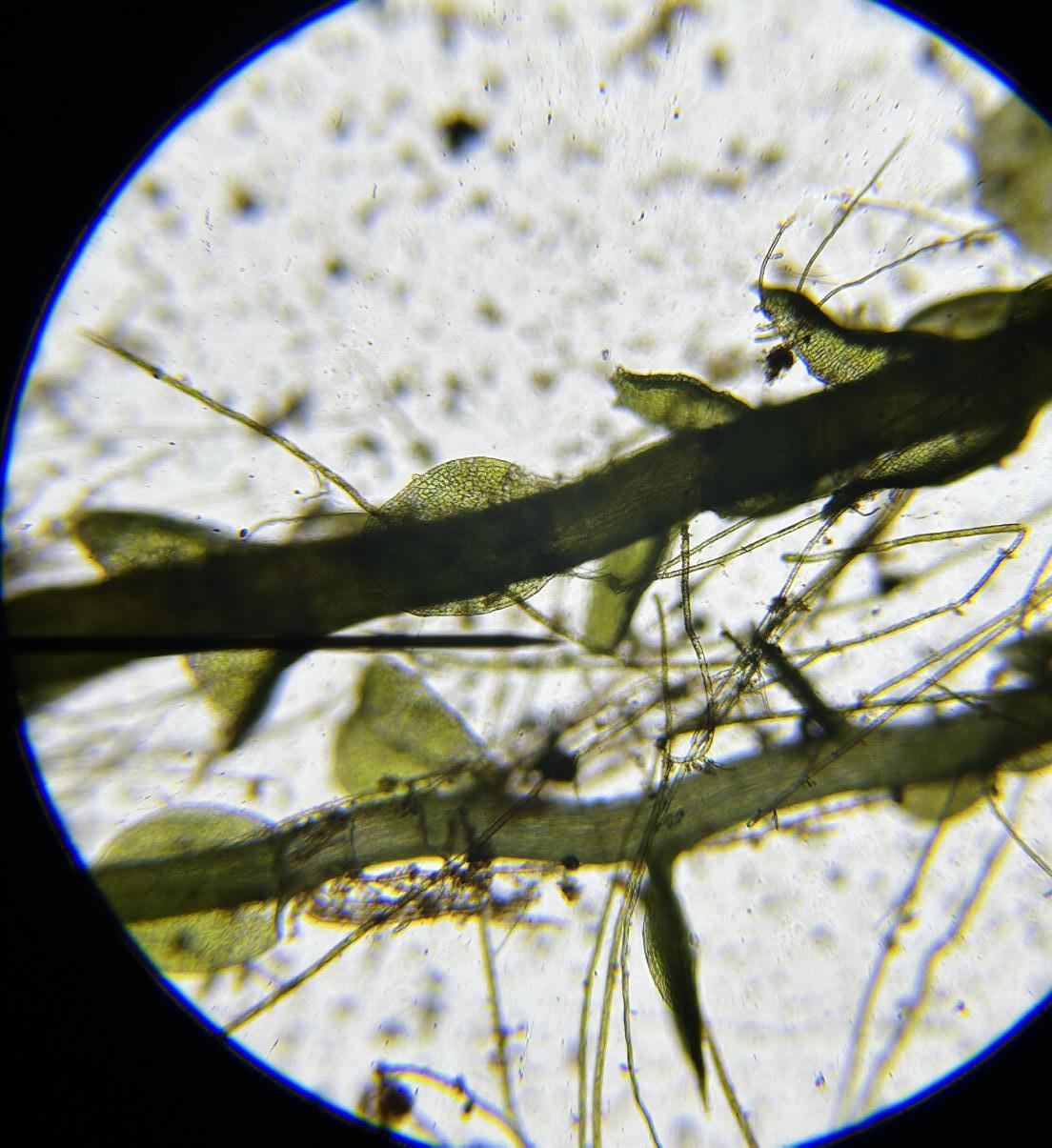
Near the end of the year, as we were finishing the projects, I asked my students to reflect on the large group projects they had designed and carried out together. These are some excerpts from their responses:

Orchard Project
“I’m satisfied with this project because it actually allowed me to do things hands on. I was expecting to be able to get my hands dirty and be able to plant things, and that’s what we did!”
“I was satisfied with the final product because we were able to plant things and help the environment. Now in future years they future middle schoolers will have something to get apples of off.”
Trail Project
“I think that it was fair because almost everyone had a say and we made sure to talk about how everyone would be included in the process. I think that it was a good project and it meant that we would be able to spend time outside working on stuff. I also think it is good because it will get people outside walking on the trail.
The project was what I hoped it would be because we have worked on clearing the trail and digging holes to place signs in which is mostly what we talked about doing at the beginning of the year.
I am satisfied with what we’ve accomplished. We haven’t finished yet but I think that we have been very successful with the stuff we have done so far.”
55
Science Exploration
WISCASSET ELEMENTARY SCHOOL
Becky Hallowell
VAN BUREN DISTRICT SECONDARY SCHOOL
Laurie Spooner
Our school is situated on the banks of the Sheepscot River. This wonderful natural resource has typically been ignored as the banks are muddy and the path down is steep. The mud boots and ice grippers have opened up this area for exploration, even in the winter. Students delighted in exploring different types of ice this winter as they walked confidently up and down the banks wearing their ice grippers. They were also able to place hula hoops in the mud to look for a variety of plant and animal life.
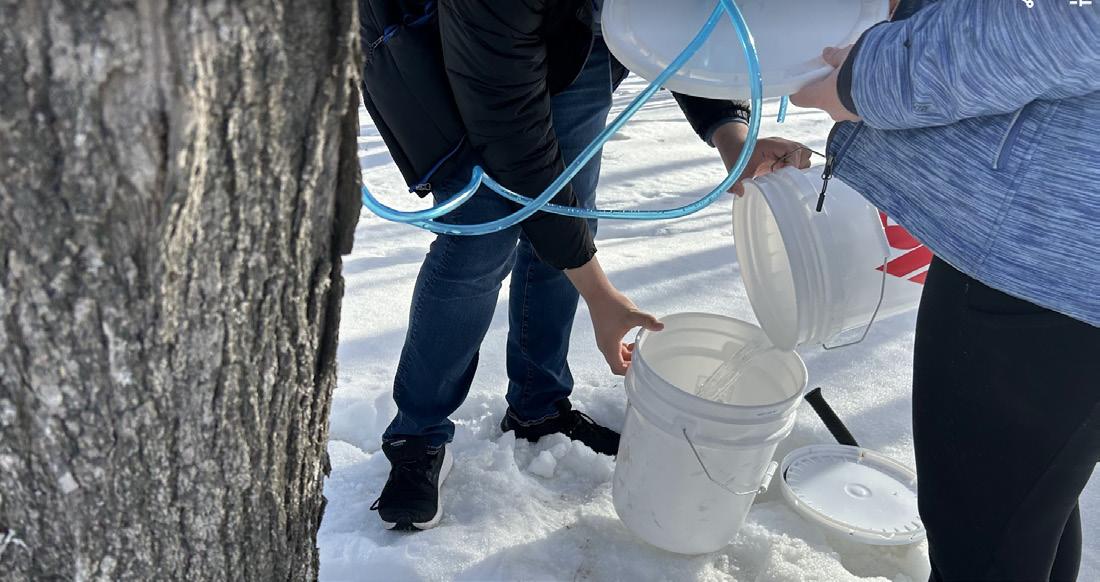
Our school also has a beautiful opportunity to take monthly trips to the nearby preserve Hidden Valley Nature Center. Students walk through mud, wade in ponds to find macroinvertebrates, and explore bogs. The MEEA mini-grant has leveled the natural playing field allowing all students to get dirty without getting soaked. Every student could walk into a pond with a net to capture (then release) frogs, tadpoles, and dragonflies. These kids joyfully frolicked in the water, squealing when they found a new creature to examine. One student bravely walked out into the middle of a pond, trusting her balance and her mud boots. She said, “The best stuff is found the farthest from shore!”
Students could also hike along muddy trails after a heavy soaking because they had mud boots to keep their feet dry. There were no worries about getting brand-new shoes dirty, leading to happy puddle jumping. These boots allowed kids to enjoy their environment without fearing trouble for coming home muddy.
Having mud boots and ice grippers remove barriers to kids engaging with nature. When they can safely and confidently move through wet and muddy terrain, they more fully explore the world around them. I am thrilled to provide this opportunity for all my students and look forward to using these resources more in the coming years.

We live in a region where maple syrup is commonly made yet most of our students have not experienced making maple syrup. Our project was developed to demonstrate how easy it is to make maple syrup as a hobby. Students from multiple high school classes had the opportunity to work with instructors to tap the trees and collect sap in March. The CTE machine tool class custom built an evaporator to boil the sap and conducted our first boil on March 17 as part of a Maple Extravaganza. All Van Buren District students, grades PreK through twelve, were invited to visit and experience the boiling process. High school science students also created informational displays about the nutritional aspects of maple syrup, the process of collecting sap, how sap flows in the trees, and the chemistry of the boiling process. We plan to continue to use the equipment annually to share the experience with more students.
Other teachers in the school got involved by reading books about maple syrup with their students. Our art teacher created a maple tree in the front office area using paper mache. Each of our elementary students created a maple leaf to add to the tree. The tree remains on display in the office with plans to make new leaves in the future.
We have also purchased equipment, pocket microscopes and a monocular, to explore the forest stands around our community. We are looking for what other creatures live in the forest. We will monitor the maple stand to see if our sap collection has any impact on the creatures who live there.
Our students are excited about the future of the project and are already making plans for next year. They want to start earlier and boil more often. Addion Davis, a student in our high school forestry class, was surprised to learn that the process was easy and he is certain he has the skills to produce maple syrup on his own.
56 Maine Environmental Education Association Mini-Grants for Outdoor Learning
Snowshoes
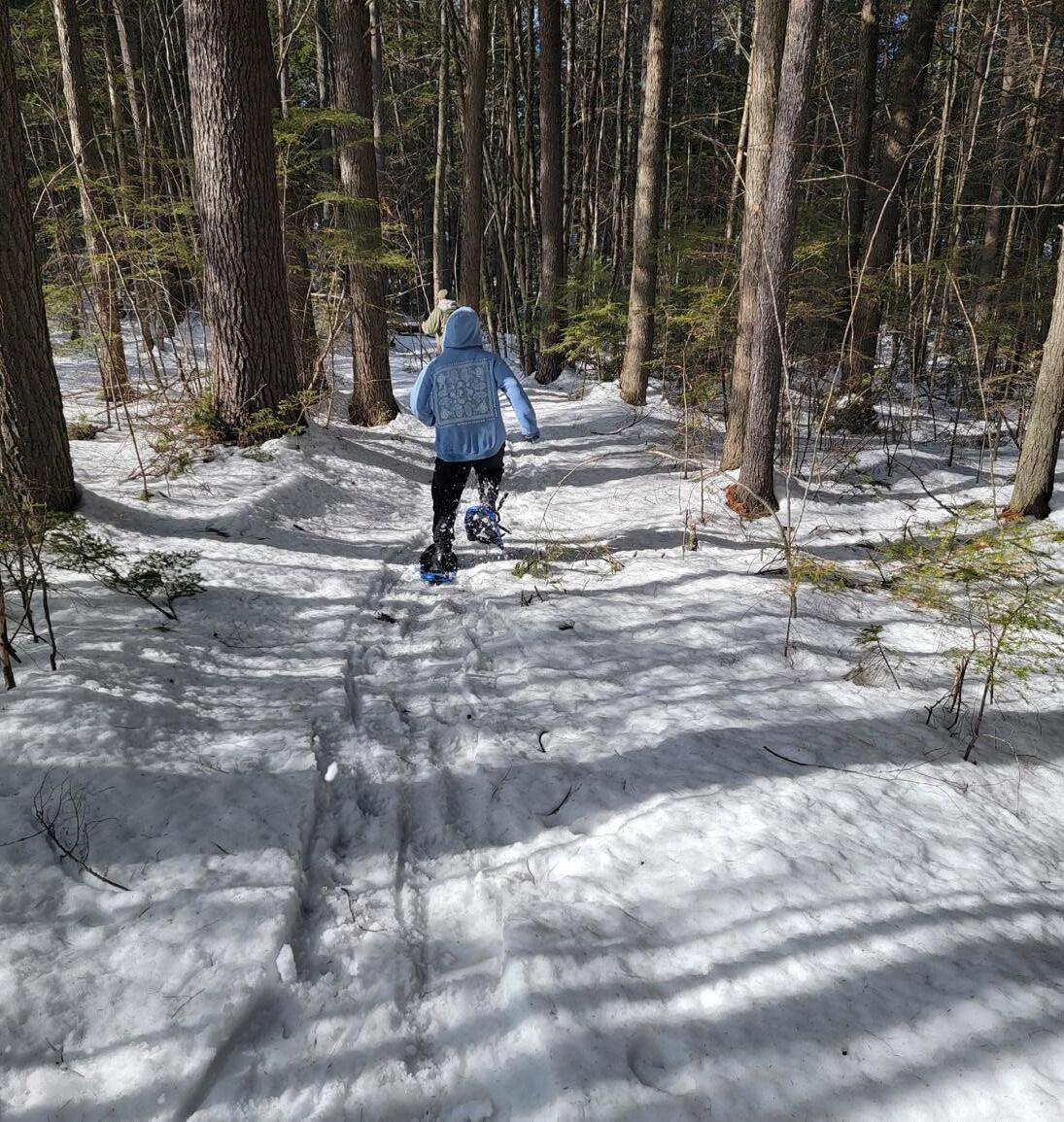
HALL-DALE ELEMENTARY SCHOOL
Terri Pelletier
Outdoor education and alternative learning strategies are fundamental - so the purchase of snowshoes was an exciting addition to our school. Overall 12 students were part of the snowshoe outings this year. They were used as part of the Outdoor Adventures course offered to upperclassmen with a focus on doing things outside, monthly hiking/camping trips, wilderness survival skills. In this course the students learn some wilderness first aid, how to plan a hiking/camping trip, how to prepare for a hiking/camping trip, and how to cook while hiking/camping. The snowshoes provided skills and experience in preparation for winter outdoor adventures. They used the trails on the Noble High School campus that are being developed for walking, biking, and now snowshoes.
Moving forward, snowshoeing lessons will be also be used in the Leadership Adventure Education course. This semesterlong class will focus on social emotional learning, team building, cooperation and communication through a variety of activities such as games, initiatives and trust activities. An emphasis will be given to place-based experiential learning through hiking, biking, snowshoeing and wilderness survival. This is a new ½ credit course and is an alternative for Project Adventure In the physical education curriculum.
NOBLE HIGH SCHOOL
Erin Dickson
Outdoor education and alternative learning strategies are fundamental - so the purchase of snowshoes was an exciting addition to our school. Overall 12 students were part of the snowshoe outings this year. They were used as part of the Outdoor Adventures course offered to upperclassmen with a focus on doing things outside, monthly hiking/camping trips, wilderness survival skills. In this course the students learn some wilderness first aid, how to plan a hiking/camping trip, how to prepare for a hiking/camping trip, and how to cook while hiking/ camping. The snowshoes provided skills and experience in preparation for winter outdoor adventures. They used the trails on the Noble High School campus that are being developed for walking, biking, and now snowshoes.
Moving forward, snowshoeing lessons will be also be used in the Leadership Adventure Education course. This semesterlong class will focus on social emotional learning, team building, cooperation and communication through a variety of activities such as games, initiatives and trust activities. An emphasis will be given to place-based experiential learning through hiking, biking, snowshoeing and wilderness survival. This is a new ½ credit course and is an alternative for Project Adventure In the physical education curriculum.

57
Snowshoes
PINE STREET ELEMENTARY SCHOOL
Cindy Cote
At Pine Street Elementary School, grant funds were used to purchase enough snowshoes for a classroom of students and instructors.

For many students, it was the first time they had ever had the opportunity to walk with snow shoes.

Having the snow shoes enabled us to do outside environmental learning during our coldest and very snowy months. Students learned about the many different animals that live in our Northern Maine forest ecosystem. In addition, they were taught how to look for and identify animal tracks in the deep snow while using the snowshoes. Many of our students noted how fun it was to look for animal tracks. One in particular stated that “finding an animal track is like finding treasure.”
The snowshoes were also utilized to walk to a stand of maple trees to learn about the process of tapping maple trees as well as the maple sugaring process. The students really enjoyed this activity as they were able to have the hands-on experience of making maple taffy themselves. Teacher Cindy Cote enjoyed witnessing the excitement the students had while participating in this experiential learning.
Mrs. Cote commented that “many students were more engaged and participatory in the outdoor learning environment.” She further stated that “many of the more reserved students displayed a greater confidence and eagerness to participate
in the learning process. Students actively shared ideas in the outdoor settings, more so than in the indoor classroom setting.” Having the snow shoes has been very beneficial to our students by fostering a greater desire to learn about our ecosystem while enjoying a fun and healthy outdoor winter activity.
58 Maine Environmental Education Association Mini-Grants for Outdoor Learning
Snowshoes
RSU 73: SPRUCE MOUNTAIN
Through this grant we were able to purchase materials to make outdoor learning accessible to all of the students in grade four. We were able to provide clothing and boots for children so that they were able to experience learning in nature in every season. Many students especially in the winter do not have all of the clothing necessary to be in the elements for more than a few minutes but because we were able to purchase snow pants, boots, and gloves students were warm and learning all winter. Over the course of the year we were able to observe the seasonal changes in our outdoor learning areas. Destiny Nickerson (fourth grade student at SMES) states, “nature education is amazing and it was really fun, my favorite part was observing and learning abut frogs.” The students enjoy that after they have completed their learning task for the day they are permitted to have “free time” to explore. Maci Gemelli states, “I think climbing trees is really fun, I am surprised that we were allowed to climb trees when we are only in fourth grade.” Watching students who are resistant in the fall develop a love for nature over the course of the year is my favorite aspect of nature education. Each season provides students with new and exciting opportunities and experiences.
WESTBROOK ELEMENTARY SCHOOLS (SACCARAPPA, CANAL, & CONGIN)
We have a very diverse school population, and this grant allowed us to make snowshoeing accessible to all my students. It was amazing to get our students out and adventure around the trails in our community and at our school. Many of our students are just seeing snow for the first time, so snowshoeing added a whole new level to welcoming them to winters in Maine. As we ventured, we looked for animal prints as we moved through the woods near the school. We discussed the environment as we moved through the trees next to streams and ponds. We also discussed how important it is to take care of it, so it is around for future generations.

The students loved it and really enjoyed the trails. One of our schools sits on the former Oxford-Cumberland Canal. The students were very interested and excited to learn about this history that includes their community of Westbrook. They were shocked to learn that boats once moved through a canal carrying products where now a parking lot is found. When we moved into the woods, you can see the banks of the canal and where horses once pulled the boats up stream. I love history and this gave me a prime opportunity to share that love of history.
As you can see from the photos, our students had a blast. We also had some great snow for it. Beyond the environmental and history pieces, you can also look at the benefits of exercise. We got outside for some Vitamin D from the sun. We relieved stress. We built up our cardiovascular endurance by walking and running in the deep snow, up hill, and across fields.

59
Jami Murphy Amanda Ready



 Clockwise from top left: W.G. Mallett School, Mountain Valley High School, Portland Public Schools, South Portland High School
Clockwise from top left: W.G. Mallett School, Mountain Valley High School, Portland Public Schools, South Portland High School












































































































 - Lyfe B.
- Lyfe B.







 Diana Allen
Diana Allen












